

Pizzeria Business Plan for Pizza Shop or Restaurant

Use this pizzeria business plan as your template to create the best pizza shop in town that’s also a thriving, profitable business! This pizza business plan includes market analysis, strategy, more.
Download this Pizza Business Plan free for easy editing in Microsoft Word, Google Docs or Apple Pages:
Also Read: Starting a Small Business – A Complete Guide with Templates and Tools
Table of Contents
Pizzeria Business Plan
1.0 executive summary, 1.1 company & industry.
Olympic Pizzeria will become Seaside’s first, fast and free delivered pizza restaurant. The pizza restaurant industry in Seaside is minimal, with only one other pizza place. Olympic Pizzeria is conveniently located for both tourists and locals, and a complete restaurant with low lease terms has already been secured. The owners all bring business management background, as well as hospitality industry experience. This pizzeria business plan outlines the market and strategy to create a profitable pizza restaurant business.
1.2 PRODUCTS & SERVICES
Olympic Pizzeria offers fast and free delivered pizza. The pizza, made with unique, East Coast based recipes and a secret sauce, include a vast array of topping selections, as well as healthy alternatives. The company also will offer mobile beach vending carts to allow tourists on the beach a quick and easy dining option without leaving the beach.
1.3 MARKET ANALYSIS
Seaside has approximately 6,000 full time residents, which more than doubles during the tourist season. Olympic Pizzeria targets both the local segment and the tourist segment. In addition, the healthy menu items provide an alternative dining option for many tourists. It has been estimated that at least 25% of households will order pizza for delivery at least once per month.
1.4 STRATEGY & IMPLEMENTATION
Olympic Pizzeria will implement an effective marketing and advertising campaign, consisting of direct mailings, community and event sponsorships, and coupons. Additionally, the company has formed partnerships with area resorts and hotels to inform guests about Olympic Pizzeria and its dining options. Sales are expected to double during the tourist season, at which time a complete staff consisting of cooks, drivers, and wait staff will be hired.
1.5 MANAGEMENT
Olympic Pizzeria has a strong management team consisting of its three owners. Each owner brings education in business management. Additionally, each owner has experience working in either the resort industry or the food industry. The management team has successfully started one other restaurant in nearby Portland.
1.6 FINANCIAL PLAN
Olympic Pizzeria has a strong financial plan with first year earnings exceeding $30,000 and cash flow positive by month 5. It is expected that the company will have losses during the five months that tourism is slow, however during the busy months monthly profits will exceed $10,000. Yearend cash balances will exceed $30,000, and the bank loan will be paid off within two years.
1.7 FUNDS REQUIRED & USE
Olympic Pizzeria requires $85,000 in capital to begin operations as described in this pizza business plan. The three owners have personally invested $60,000 into the company. The remaining $25,000 will come from a bank loan that has already been secured. Funds will be used for building renovations, marketing and advertising, and daily operations for the first five months until the company becomes cash flow positive. Details are in the Strategy & Implementation section of this pizzeria business plan.
2.0 COMPANY SUMMARY
2.1 company & industry.
Olympic Pizzeria will become Seaside’s first chain of delivery oriented, family pizza restaurants. Although this is not a new concept, Seaside does not have a pizzeria that offers fast, free delivery along with a family dining atmosphere. Seaside is not only ready for a true pizza operation – it needs one, especially an operation that will focus on quality, price, and convenience.
2.2 LEGAL ENTITY & OWNERSHIP
Olympic Pizzeria is currently registered with the Secretary of State (Oregon) as a limited liability company under the name “Olympic Pizzeria LLC”. The company is owned equally by its three managing partners.
2.3 HISTORY
Each of the founding partners brings different experience to the company. Having experience in the hospitality industry, management, and pizza making, the three partners have teamed up to create Olympic Pizzeria to fill the current need in the market.
2.4 FACILITIES & LOCATION
Olympic Pizzeria is located in a prime location in Seaside, Oregon, at the corner of Broadway and Highway 101. Not only does this appeal to all of the tourists, being centrally located on the main street in town, but also attracts travelers on the highway driving through.
At this location, an existing vacant restaurant has been secured. The building is fully built out to accommodate the needs of the pizzeria, including complete kitchen, dining, and office areas. The owner has agreed to $1.80 per square foot in rent ($900/mo.) and will include garbage pickup and water. Utilities will be based on use.
2.5 KEY ASSETS
The most significant assets will be the kitchen equipment, including the oven, mixer and prep tables. As the reputation for our pizza grows, our most important assets will become our recipes and the Olympic Pizzeria brand.
3.0 PRODUCTS & SERVICES
3.1 product description.
Olympic Pizzeria provides premium pizza with fast, free delivery to the Seaside area. Olympic Pizzeria specializes in making superior pizzas, with proven recipes that have successfully launched pizzerias in other parts of the country. The restaurant combines hand-tossed dough, along with a secret sauce, that entices customers to return. Menu items are priced marginally higher than pizzerias in other towns, as the primary customers are tourists, whom expect to spend more while on vacation. This allows for free delivery, as well as additional menu options, such as whole-wheat dough.
[optin-monster slug=”ygunppiwdzotv7iegkcc” followrules=”true”]
3.2 FEATURES & BENEFITS
Olympic Pizzeria offers a wide menu selection to appeal to many different customer preferences. As more people are beginning to eat healthy, whole wheat options are available for pizza crusts and breadsticks. Additionally, Olympic Pizzeria is the only restaurant that provides vegan options to customers. Multiple flavored crust options (cheese, garlic, etc.) along with an array of pizza toppings, also sets Olympic Pizzeria apart from the current competition. Finally, expanded operating hours and fast, free delivery, allow customers multiple dining options.
3.3 COMPETITION
Currently there is only one direct competitor, Southside Pizza, which is the only pizzeria that delivers in the Greater Seaside area. Typically their deliveries take an average of an hour per order and incur a $2 surcharge. Additionally, they only deliver between the limited hours of 5-8 pm. A three-topping delivered pizza will cost over $17 and take an hour when ordered from Southside Pizza.
The indirect competition includes Bill’s Diner and China Wok Buffet. Bill’s Diner sells take-and-bake pizza at a very reasonable price; however they do not offer delivery. They also do not offer dough variations. China Wok Buffet does deliver for a $4 surcharge; however they do not offer pizza in their menu.
3.4 COMPETITIVE EDGE/BARRIERS TO ENTRY
As there is limited competition, Olympic Pizzeria will have a first mover advantage in offering quality pizzas for fast, free delivery. Once established, it will be difficult for another pizzeria to enter the market, as Seaside is not large enough to support three pizza restaurants year-round. Additionally, Olympic Pizzeria has lower fixed costs through negotiations on a long term building lease. The pizzeria also offers a wider variety of menu items, including whole wheat crust options, which the competition does not offer.
3.5 DEVELOPMENT
Olympic Pizzeria plans to open another location near the waterfront, which will serve as a convenient place to eat while tourists are enjoying the beach. This location will act as a hub for several mobile carts strategically located along the beach, which will offer pizza by the slice and drinks to customers. As customer’s preferences are further defined, menu items will be added to expand the target market. For example, a healthier alternative, such as wraps, will be added to the menu. Additional locations in other towns along the coastline may also be considered.
4.0 MARKET ANALYSIS SUMMARY
4.1 target market.
Seaside, like several other small towns along the Oregon coast line, has a tourist based economy. There are two distinct market segments that Olympic Pizzeria will target: the tourists and the locals. The tourists mainly consist of vacationers with disposable income that are willing to spend more for a quality pizza. The locals consist of either upper-middle class retirees or lower-middle class middle-aged workers, both which enjoy quality pizza 1-2 times per month.
4.2 MARKET SIZE
The full-time permanent population of Seaside is slightly more than 6,000 people, growing at an annual rate of 6%. However, the population doubles during the prime summer and fall vacation months. It is estimated that 90% of the population eat pizza, with 40% eating pizza at least two times per month.
4.3 MARKET TRENDS
The target market is experiencing growth annually in both full-time population and tourist visits. Additionally, a new market segment has begun to appear with people beginning to look for healthier dining alternatives. Olympic Pizzeria’s exclusive whole-wheat crust option targets this new market segment.
4.4 SWOT ANALYSIS
The SWOT analysis for this pizza business plan is as follows:
Strengths: fast, free delivery; unique recipes and secret sauce; first mover advantage; healthy menu options; low overhead and fixed expenses; prime location; management team
Weaknesses: higher variable costs for ingredients due to better quality; competing pizzeria already operating; three person management team
Opportunities: tourists allow higher margins; mobile beach carts for additional delivery method; capture local delivery market with faster and cheaper delivery
Threats: new pizzeria entering market; existing competition offering fast, free delivery
5.0 STRATEGY & IMPLEMENTATION
5.1 philosophy.
Olympic Pizzeria will be the premier pizza restaurant in the Seaside area, offering unique, healthy menu options and fast, free delivery.
5.2 PRODUCT DEVELOPMENT
Development of the facility will be minimal, with minor modifications and the addition of pizza ovens being the only major renovation. Proven recipes have already been secured. Delivery drivers will be outfitted with GPS units to aid in fast, efficient delivery. Development of the mobile beach vending carts will be finalized once the main restaurant has been operational for at least six months.
5.3 INTERNET STRATEGY
Although the internet may not play a vital part to the marketing of Olympic Pizzeria, a website will be designed and maintained to promote the company. Along with advertising specials, customers will be able to look through the complete menu, and place orders for takeout or delivery online.
We will build our website using Wix , which allows us to create an attractive pizza website with ecommerce capabilities very quickly. It also includes the ability to make updates as we tweak our product offerings and add regular promotions. Using Wix will also allow us to save on website development costs because we will not need to hire a company or consultant to manage our pizza website.
We will also use Send In Blue for email marketing to send weekly promotions and coupons to drive repeat business.
5.4 MARKETING STRATEGY
In the pizza delivery business, aggressive marketing is the key. Typically, having a pizza delivered to your home is an impulse purchase. This requires a strong advertising campaign including direct mailers and coupons placed in newspapers. Additionally, Olympic Pizzeria will develop strategic marketing campaigns to target guests of area resorts and hotels. Sponsorship of local sports teams and events will also be used to broaden reach.
5.5 SALES STRATEGY
Given the target market of tourists, Olympic Pizzeria can charge a premium for its menu items. As dining is often an impulse purchase, it is difficult to estimate sales forecasts, however it is expected that during the tourist season, sales will increase significantly. We have estimated that of the 3,000 full time households, 25% will make at least one order per month, which equals 25 pizzas per day. During the tourist season we expect at least 50 orders per day. This equates to 14,250 pizzas per year, and gross revenues of $285,000.
5.6 STRATEGIC ALLIANCES
Olympic Pizzeria has formed alliances with area resorts and hotels to allow marketing and advertising of our menu to guests and tourists. Additionally, the restaurant has been given permission to place mobile vending carts on the beach, in exchange for sponsorships of local community events. Partnerships with fresh ingredient suppliers are also being negotiated.
5.7 OPERATIONS
Operations will be managed by the three managing partners. This will include all marketing activities, financial and accounting activities, and operational activities. The restaurant will employ a small staff of waiters, cooks, and delivery drivers. Staff will be trained by the management team to ensure quality and consistency of food preparation.
- Be the premier pizza delivery restaurant with quality menu items
- First year revenues of $250,000
- Expansion to second location and beach mobile vending carts within 12 months
- Have a strong community involvement
- Open additional locations in other neighboring coastal towns
5.9 EXIT STRATEGY
This pizzeria business plan anticipates that within 10 years, there will be 10 Olympic Pizzeria locations in operation. At this time, company valuation is expected to be around $5 million, which will allow an adequate-sized venture to become interested in acquiring the company.
6.0 MANAGEMENT SUMMARY
6.1 organizational chart.
The company will follow a typical hierarchical structure with the management team discussed below as the co-owners., who will be responsible for all operations and management duties early on. Additional staff will be needed for pizza preparation, delivery, and wait staff. Once the company has expanded operations, a general manager will be hired to take the duties of the owners.
6.2 MANAGEMENT TEAM
The initial management team consists of the following three owners:
Sean Smith is currently the Resident Manager at Oceanside Resort. He has extensive experience resorts operations and management, as well as computer database administration. He also is experienced with resort marketing. His background will aid in resort relations, as well as handling public relations and special events. He has a degree in business from Oregon State University.
Aaron Lambert is currently the front desk manager of Pacificview Resort. He has experience in starting and operating an upscale deli at the Hilton in Portland. He has a broad based management background that includes very large, four-star resorts to a smaller, hands-on resort. Aaron has a degree in business with emphasis in resort management from Azusa State University.
David Crawford is the assistant front desk manager at the Pacificview Resort. He has worked with Aaron for the last three years, beginning with the deli project at the Hilton. David comes from the East Coast, where he has experience in the pizza business. He has background with backline operations such as dough and sauce prep, consistency control, and recipe creation. He has experience as revenue auditor for restaurant, casino and hotel operations. David has a degree in business administration from the University of Ohio.
6.3 PERSONNEL NEEDS
It is estimated that a staff of 10 will be needed to maintain operations. As this industry does not require special training and turnover is typically high, staff wages can be relatively low. Most of the staff will maintain part time hours, as many will be high school students and retirees. This will eliminate the need for expensive benefits and other requirements.
6.4 BOARD MEMBERS & ADVISORS
Olympic Pizzeria’s advisory team consists of a certified public accountant, who takes care of all tax accounting requirements, as well as a corporate attorney that is held on retainer in case any legal needs arise.
7.0 FINANCIAL PLAN
7.1 requirements.
Olympic Pizzeria has secured a funding in the form of a bank loan for the amount of $25,000. This is personally guaranteed by each of the owners. Additionally, the owners have invested a total of $60,000 into the company. Investment contributions were made equally by each of the three partners.
7.2 USE OF FUNDS
Funds will be used primarily for renovation and upgrades to the kitchen ($55,000), including new pizza ovens, kitchen equipment, and dining room décor. Additionally, advertising expenses and marketing collateral, as well as initial inventory, insurance, rent, and utilities, will all need to be purchased in the first month of operations. Remaining funds will be used as operating capital, including tasks mentioned earlier in this pizza business plan.
7.3 INCOME STATEMENT PROJECTIONS
It is projected that first year revenue will exceed $285,000, with the sale of nearly 15,000 pizzas. Monthly revenues are expected to vary between $15,000-$30,000, depending upon tourist seasons. Fixed expenses are projected to be around $15,000 monthly, which includes wages, marketing and advertising, insurance, rent, and utilities. Variable costs are estimated to be $3 per pizza. Net losses are anticipated during the non-tourist months, however during tourist seasons the monthly profits are expected to exceed $10,000. First year earnings are estimated to be $37,000, with second and third year earnings projections of $45,000 and $52,000.
7.4 BREAK-EVEN ANALYSIS
The break even analysis works out to an annualized average of 900 pizzas per month or $18,000 in sales.
7.5 PROJECTED CASH FLOW
The company is expected to be cash flow positive by the fifth month of operations. The initial owners’ investment of $10,000, along with the bank financing of $25,000 ensures that free cash never drops below $2,000, with most months exceeding $5,000. By the end of Year 1, the bank account balance is expected to exceed $35,000, which will allow expansion of the company operations.
7.6 BALANCE SHEET
Olympic Pizzeria’s balance sheet will show $85,000 in assets, attributed mainly to equipment, leasehold improvements and cash. Liabilities will be only $25,000 upon launch and zero within two years. Equity will continue to increase as retained earnings stay positive and debt is paid down.
7.7 IMPORTANT ASSUMPTIONS
- Variable costs (including ingredients, packaging, and delivery) remain at $3
- Tourist months stay strong April-October
- The tourist economy continues to grow over the next 5 years
Download This Pizza Restaurant Business Plan Template
Like this share it with your network:, i need help with:, popular topics:.
- Learning SEO
- Generating Sales
- Writing a Marketing Plan
- Writing a Business Plan
- Leading My Team
- Free Marketing Webinars
- Starting My First Business
Got a Question?
Get personalized expert answers to your business questions – free.
Affiliate Disclosure : This post may contain affiliate links, meaning we get a commission if you decide to purchase something using one of our links at no extra cost to you.
You Might Also Like...

Should I Give a Discount on My Consulting Fees?

SEO Title Tag Makeover: 4 Powerful Examples

5 Steps to Design an Effective Employee Engagement Action Plan

4 Actionable Steps to Find a Mentor for Your Business

5 Effective Scheduling Tips To Boost Your Productivity

Business Coaching vs Executive Coaching: 10 Examples

7 Employee Satisfaction Secrets: Nurturing a Happy Small Business Team

Secure Your First 10 Investors: Step-by-Step Startup Guide

SEO Coaching and Marketing Courses
Get More Business
Marketing tools.
- SEO Keyword Tool
- MSP Website Content Kit
- Done-for-You Content
- Graphic Design Tool
- Webinar Automation
- Getting Referrals
- Hubspot Marketing Automation
Popular Downloads
- Marketing Plan Example
- MSP Marketing Plan
- Life Coach Business Plan
- Consulting Business Plan
- How to Write a Business Plan
- Clothing Line Business Plan
- Restaurant Business Plan
- Personal Trainer Business Plan
- Trucking Business Plan
- Pizza Restaurant Business Plan
Free Guides
- B2B SaaS SEO Best Practices
- MSP SEO Marketing Playbook
- Buyer Persona Examples
- How to Increase Google Rankings
- New Client Welcome Package
- How to Create a Happy Customer
- Brand Development Guide
- SaaS Metrics Dashboard
- Marketing and SEO Videos
- Salary Calculator
- Executive Coaching Newsletter
- Contributing Content
- Affiliate Disclosure
- Sample Business Plans
- Food, Beverage & Restaurant
Pizza Shop Business Plan

Starting a pizza shop is rewarding & daunting at the same time, because of the fierce competition and oversaturation.
Worry not, with proper planning & unique pizza styles, you can ace up your pizza shop.
Need help writing a business plan for your pizza shop? You’re at the right place. Our pizza shop business plan template will help you get started.

Free Business Plan Template
Download our free pizza shop business plan template now and pave the way to success. Let’s turn your vision into an actionable strategy!
- Fill in the blanks – Outline
- Financial Tables
How to Write A Pizza Shop Business Plan?
Writing a pizza shop business plan is a crucial step toward the success of your business. Here are the key steps to consider when writing a business plan:
1. Executive Summary
An executive summary is the first section planned to offer an overview of the entire business plan. However, it is written after the entire business plan is ready and summarizes each section of your plan.
Here are a few key components to include in your executive summary:
- Market Opportunity: Summarize your market research, including market size, growth potential, and marketing trends. Highlight the opportunities in the market and how your business will fit in to fill the gap.
- Marketing & Sales Strategies: Outline your sales and marketing strategies—what marketing platforms you use, how you plan on acquiring customers, etc.
- Financial Highlights: Briefly summarize your financial projections for the initial years of business operations. Include any capital or investment requirements, associated startup costs, projected revenues, and profit forecasts.
- Call to Action: Summarize your executive summary section with a clear CTA, for example, inviting angel investors to discuss the potential business investment.
Ensure your executive summary is clear, concise, easy to understand, and jargon-free.
Say goodbye to boring templates
Build your business plan faster and easier with AI
Plans starting from $7/month

2. Business Overview
The business overview section of your business plan offers detailed information about your business. The details you add will depend on how important they are to your business. Yet, business name, location, business history, and future goals are some of the foundational elements you must consider adding to this section:
- Business Description: Describe your business in this section by providing all the basic information:
- Traditional Pizzeria
- New York Style Pizzeria
- Neapolitan Pizzeria
- Gourmet Pizzeria
- Fast-Casual Pizza Chain
- Take-and-Bake Pizza Shop
- Vegan or Plant-Based Pizza Shop
- Mobile Pizza Truck
- Gluten-Free Pizza Shop
- Describe the legal structure of your pizza shop, whether it is a sole proprietorship, LLC, partnership, or others.
- Explain where your business is located and why you selected the place.
- Owners: List the names of your pizza shop’s founders or owners. Describe what shares they own and their responsibilities for efficiently managing the business.
- Mission Statement: Summarize your business’ objective, core principles, and values in your mission statement. This statement needs to be memorable, clear, and brief.
- Future Goals: It’s crucial to convey your aspirations and vision. Mention your short-term and long-term goals; they can be specific targets for revenue, market share, or expanding your services.
This section should provide a thorough understanding of your business, its history, and its future plans. Keep this section engaging, precise, and to the point.
3. Market Analysis
The market analysis section of your business plan should offer a thorough understanding of the industry with the target market, competitors, and growth opportunities. You should include the following components in this section.
- Competitive Analysis: Identify and analyze your direct and indirect competitors. Identify their strengths and weaknesses, and describe what differentiates your pizza shop from them. Point out how you have a competitive edge in the market.
- Regulatory Environment: List regulations and licensing requirements that may affect your pizza shop, such as business licenses & permits, food safety & sanitation, employee health & safety, alcohol licensing, etc.
Here are a few tips for writing the market analysis section of your pizza shop business plan:
- Conduct market research, industry reports, and surveys to gather data.
- Provide specific and detailed information whenever possible.
- Illustrate your points with charts and graphs.
- Write your business plan keeping your target audience in mind.
4. Products And Services
The product and services section should describe the specific services and products that will be offered to customers. To write this section should include the following:
- Classic pizzas
- Specialty pizzas
- Pizza customization options
- Sauces & sides
- Pizza offerings: Describe the various pizza options you’ll have, such as traditional pizzas and specialized versions. Indicate the sizes (personal, medium, large), types of toppings, and options for the crust (thin, thick, gluten-free). Emphasize any special pizza flavors you have from your signature pizza.
- Additional Services: Mention if your pizza shop offers any additional services. You may include services like catering, event handling, etc.
In short, this section of your pizza shop plan must be informative, precise, and client-focused. By providing a clear and compelling description of your offerings, you can help potential investors and readers understand the value of your business.
5. Sales And Marketing Strategies
Writing the sales and marketing strategies section means a list of strategies you will use to attract and retain your clients. Here are some key elements to include in your sales & marketing plan:
- Pricing Strategy: Describe your pricing strategy—how you plan to price your products and stay competitive in the local market. You can mention any discounts you plan on offering to attract new customers.
- Marketing Strategies: Discuss your marketing strategies to market your services. You may include some of these marketing strategies in your business plan—social media marketing, brochures, email marketing, content marketing, and print marketing.
- Sales Strategies: Outline the strategies you’ll implement to maximize your sales. Your sales strategies may include loyalty programs, targeted advertising, cross-promotions, influencer marketing, etc.
- Customer Retention: Describe your customer retention strategies and how you plan to execute them. For instance, introducing loyalty programs, discounts on bulk orders, personalized service, etc.
Overall, this section of your pizza restaurant business plan should focus on customer acquisition and retention.
Have a specific, realistic, and data-driven approach while planning sales and marketing strategies for your pizza shop, and be prepared to adapt or make strategic changes in your strategies based on feedback and results.
6. Operations Plan
The operations plan section of your business plan should outline the processes and procedures involved in your business operations, such as staffing requirements and operational processes. Here are a few components to add to your operations plan:
- Staffing & Training: Mention your business’s staffing requirements, including the number of employees, chefs, or other staff needed. Include their qualifications, the training required, and the duties they will perform.
- Operational Process: Outline the processes and procedures you will use to run your pizza shop. Your operational processes may include facility & equipment, menu & recipes, food preparation, inventory management, etc.
Adding these components to your operations plan will help you lay out your business operations, which will eventually help you manage your business effectively.
7. Management Team
The management team section provides an overview of your pizza shop’s management team. This section should provide a detailed description of each manager’s experience and qualifications, as well as their responsibilities and roles.
- Founders/CEO: Mention the founders and CEO of your pizza shop, and describe their roles and responsibilities in successfully running the business.
- Advisors/Consultants: Mentioning advisors or consultants in your business plans adds credibility to your business idea.
- So, if you have any advisors or consultants, include them with their names and brief information consisting of roles and years of experience.
This section should describe the key personnel for your pizza shop, highlighting how you have the perfect team to succeed.
8. Financial Plan
Your financial plan section should provide a summary of your business’s financial projections for the first few years. Here are some key elements to include in your financial plan:
- Profit & loss statement: Describe details such as projected revenue, operational costs, and service costs in your projected profit and loss statement . Make sure to include your business’s expected net profit or loss.
- Cash flow statement: The cash flow for the first few years of your operation should be estimated and described in this section. This may include billing invoices, payment receipts, loan payments, and any other cash flow statements.
- Balance Sheet: Create a projected balance sheet documenting your pizza shop’s assets, liabilities, and equity.
- Financing Needs: Calculate costs associated with starting a pizza shop, and estimate your financing needs and how much capital you need to raise to operate your business. Be specific about your short-term and long-term financing requirements, such as investment capital or loans.
Be realistic with your financial projections, and make sure you offer relevant information and evidence to support your estimates.
9. Appendix
The appendix section of your plan should include any additional information supporting your business plan’s main content, such as market research, legal documentation, financial statements, and other relevant information.
- Add a table of contents for the appendix section to help readers easily find specific information or sections.
- In addition to your financial statements, provide additional financial documents like tax returns, a list of assets within the business, credit history, and more. These statements must be the latest and offer financial projections for at least the first three or five years of business operations.
- Provide data derived from market research, including stats about the industry, user demographics, and industry trends.
- Include any legal documents such as permits, licenses, and contracts.
- Include any additional documentation related to your business plan, such as product brochures, marketing materials, operational procedures, etc.
Use clear headings and labels for each section of the appendix so that readers can easily find the necessary information.
Remember, the appendix section of your pizzeria business plan should only include relevant and important information supporting your plan’s main content.
The Quickest Way to turn a Business Idea into a Business Plan
Fill-in-the-blanks and automatic financials make it easy.
This sample pizza shop business plan will provide an idea for writing a successful pizza shop plan, including all the essential components of your business.
After this, if you still need clarification about writing an investment-ready business plan to impress your audience, download our pizza shop business plan pdf .
Related Posts
Restaurant Business Plan
Fast Food Restaurant Business Plan
400+ Business Plan Example
Business Plan Writing for Startups
Creative Business Plan Cover Ideas
Best AI Business Plan Generators
Frequently asked questions, why do you need a pizza shop business plan.
A business plan is an essential tool for anyone looking to start or run a successful pizza shop. It helps to get clarity in your business, secures funding, and identifies potential challenges while starting and growing your business.
Overall, a well-written plan can help you make informed decisions, which can contribute to the long-term success of your pizza shop.
How to get funding for your pizza shop?
There are several ways to get funding for your pizza shop, but self-funding is one of the most efficient and speedy funding options. Other options for funding are:
Small Business Administration (SBA) loan
Crowdfunding, angel investors.
Apart from all these options, there are small business grants available, check for the same in your location and you can apply for it.
Where to find business plan writers for your pizza shop?
There are many business plan writers available, but no one knows your business and ideas better than you, so we recommend you write your pizza shop business plan and outline your vision as you have in your mind.
What is the easiest way to write your pizza shop business plan?
A lot of research is necessary for writing a business plan, but you can write your plan most efficiently with the help of any pizza shop business plan example and edit it as per your need. You can also quickly finish your plan in just a few hours or less with the help of our business plan software .
About the Author
Upmetrics Team
Upmetrics is the #1 business planning software that helps entrepreneurs and business owners create investment-ready business plans using AI. We regularly share business planning insights on our blog. Check out the Upmetrics blog for such interesting reads. Read more
Plan your business in the shortest time possible
No Risk – Cancel at Any Time – 15 Day Money Back Guarantee

Create a great Business Plan with great price.
- 400+ Business plan templates & examples
- AI Assistance & step by step guidance
- 4.8 Star rating on Trustpilot
Streamline your business planning process with Upmetrics .

Don't bother with copy and paste.
Get this complete sample business plan as a free text document.
Pizzeria Business Plan
Start your own pizzeria business plan
Pizzeria del Causamali
Executive summary executive summary is a brief introduction to your business plan. it describes your business, the problem that it solves, your target market, and financial highlights.">.
Pizzeria del Causamali is a new player in the restaurant industry. The restaurant is in a comfortable, familiar, small town that has a strong need for additional dining options. Bolstered by the need for more choices in family-oriented dining experiences, combined with the option for home-delivery, the restaurant is positioned to take advantage of the market need and serve the families in the Deauville area.
The Deauville’s population is rapidly growing with new subdivisions and young families moving to the rural suburb of the Hewgton area. It is Pizzeria del Causamali’s strategy to exploit the first-mover opportunity and establish itself as the preferred pizza provider to the area. We believe a locally-owned restaurant is the best option to serve the rapidly growing population with a fresh, unique menu as opposed to a national chain franchise.
This business plan calls for an exciting, profitable start-up year ahead with future forecasted growth as we meet the demands of the community. In all, this plan describes a healthy company with good growth prospects, looking to manage its orderly growth in the near future.

1.1 Mission
Pizzeria del Causamali creates a friendly and pleasant atmosphere for customers in a well-designed, and productive environment in which people can work happily. We are sensitive to the look and taste of good pizza as well as to high-quality ingredients. We look to provide the best possible value to our customers who desire great tasting pizza and to provide customers with the satisfaction of receiving a great value, both tangibly and intangibly. Additionally, we are the first home-deliverer of pizzas in our area.
Our customers are our neighbors as we are residents of our market area. We will also create and nurture a healthy, creative, respectful, and fun working environment, in which our employees are fairly compensated and encouraged to respect the customer and the quality of the product we produce. We seek fair and responsible profit, enough to keep the company financially healthy for the long term and to fairly compensate owners and investors for their investment and risk.
1.2 Keys to Success
The keys to success in this business are:
- Delivering the customer value proposition.
- Marketing: promoting a new company, product, and delivery channels to a rural community.
- Product quality and consistency.
- Pricing effectively with respect to the project quality and customer value proposition.
- Family-oriented atmosphere with occasional nights of family entertainment.
- Management: products delivered on time, costs controlled, marketing budgets managed. There is a temptation to fixate on growth at the expense of profits.
- Reporting and controls in place for inventory and financials.
1.3 Objectives
The objectives for Pizzeria del Causamali are:
- To establish the market presence needed to support marketing and sales goals and to attract customers.
- To reach healthy monthly sales by the end of the year, and average monthly sales increasing modestly by steadily through Year 3.
- To achieve double digit profit margins.
- To develop top-rated relationships with 2-4 well-respected, all encompassing distributors.
Company Summary company overview ) is an overview of the most important points about your company—your history, management team, location, mission statement and legal structure.">
Pizzeria del Causamali is a privately-owned pizza restaurant offering a product menu that does not currently exist in the area and first to offer home delivery. Our customers are many of the young families and students in the area.
2.1 Company Ownership
Pizzeria del Causamali will be established as a limited liability company (LLC) with Marion E. and Marianne K. Bruxellesprot as the sole owners.
2.2 Start-up Summary
Our start-up costs cover the renovation of the occupied store space, professional fees, and expenses associated with opening our first location. The start-up costs are to be financed by direct owner investment, financial institutions, and private investors. The assumptions are shown in the following table and illustration.

| Start-up | |
| Requirements | |
| Start-up Expenses | |
| Professional Fees (Legal, Accounting, Consulting) | $1,800 |
| Placemats, Stationery, Business Cards | $1,100 |
| Renovation | $8,300 |
| Marketing | $2,500 |
| Rent | $2,000 |
| Expensed Equipment | $5,000 |
| Insurance | $350 |
| Website Development | $1,000 |
| Misc Expense | $3,800 |
| Total Start-up Expenses | $25,850 |
| Start-up Assets | |
| Cash Required | $23,100 |
| Start-up Inventory | $6,000 |
| Other Current Assets | $5,250 |
| Long-term Assets | $20,300 |
| Total Assets | $54,650 |
| Total Requirements | $80,500 |
| Start-up Funding | |
| Start-up Expenses to Fund | $25,850 |
| Start-up Assets to Fund | $54,650 |
| Total Funding Required | $80,500 |
| Assets | |
| Non-cash Assets from Start-up | $31,550 |
| Cash Requirements from Start-up | $23,100 |
| Additional Cash Raised | $0 |
| Cash Balance on Starting Date | $23,100 |
| Total Assets | $54,650 |
| Liabilities and Capital | |
| Liabilities | |
| Current Borrowing | $0 |
| Long-term Liabilities | $25,000 |
| Accounts Payable (Outstanding Bills) | $9,500 |
| Other Current Liabilities (interest-free) | $0 |
| Total Liabilities | $34,500 |
| Capital | |
| Planned Investment | |
| Investor 1 | $15,000 |
| Owners | $30,000 |
| Additional Investment Requirement | $1,000 |
| Total Planned Investment | $46,000 |
| Loss at Start-up (Start-up Expenses) | ($25,850) |
| Total Capital | $20,150 |
| Total Capital and Liabilities | $54,650 |
| Total Funding | $80,500 |
Pizzeria del Causamali offers high quality pizza to a growing community that currently has limited availability of restaurants and no availability to delivery. At start up we will be open for dinner 4 p.m. to 10 p.m. Sunday – Thursday and 3 p.m. to 11 p.m. Friday and Saturday. We will consider opening earlier and serving lunch if there is a demand, and if forecast and financial analysis can justify the increased costs.
Our menu will include 4 sizes of pizzas with various combinations of toppings. Predefined, high-margin pizzas will be highlighted on the menu. Additionally, breadsticks, beer, and soda will be included in the initial menu offerings.
Market Analysis Summary how to do a market analysis for your business plan.">
Our primary target market is people who desire a comfortable, family-oriented environment for dine-in pizza. Our secondary target market also desires a delivery service for pizza, or a take-out approach. There is overlap of these segments.
Deauville and its surrounding communities are a growing middle-class area with nearly 14,000 residents. A majority of these residents are families of four or more. The boom in the area is primarily in response to an exodus of families moving out of the over-populated areas and into a more rural setting.
According to a Growth Plan Deauville conducted in 2001, population within Deauville is expected to increase. However, the number of persons per household is expected to decline, meaning the need for additional housing in Deauville will continue to grow. From the same plan, population is listed as being evenly distributed by age groupings, with approximately 33% of the population being minors. Another 40% are less than 54 years of age, indicating a major concentration of the Deauville population being families. The report forecasts there being nearly 1,900 households in the Deauville by 2005. This is driving the need for more quality, family-oriented restaurants.
Additionally, Deauville residents frequently visit the building in which Pizzeria del Causamali is located. Tanning and video rental businesses are adjacent to the restaurant, so we are providing a new convenience for families to select a movie and pick up a pizza.
With the expected continued growth in the area, estimated at 7% annually, opportunities to serve Deauville and its surrounding communities will increase. The company will sell predominantly to individuals, but it will also accept some catering jobs to individual parties, schools, and company functions in the Deauville area.
4.1 Market Segmentation

| Market Analysis | |||||||
| Year 1 | Year 2 | Year 3 | Year 4 | Year 5 | |||
| Potential Customers | Growth | CAGR | |||||
| Dine-In or Take-Out | 7% | 13,860 | 14,830 | 15,868 | 16,979 | 18,168 | 7.00% |
| Delivery | 7% | 5,000 | 5,350 | 5,725 | 6,126 | 6,555 | 7.00% |
| Total | 7.00% | 18,860 | 20,180 | 21,593 | 23,105 | 24,723 | 7.00% |
4.2 Target Market Segment Strategy
Including Deauville and its surrounding areas, no pizza establishments exist. In Deauville one to two restaurants serve pizza, but not as a primary menu item. These pizza outlets are in taverns which are not conducive to family-type atmosphere. No eating establishments in the Deauville area provide home-delivery service.
4.3 Service Business Analysis
Other family-oriented restaurants in the area include: Subway(R), What’s Cookin’ diner, and Colonial House supper club. Subway serves sandwiches, wraps, and salads, none of which are direct competition to the pizza establishment. The diner is open until 2 p.m. each day and focuses on the breakfast crowd, with a limited sandwich availability for lunch. The supper club has a Chicken and Pizza buffet once a week for approximately $6; the pizza served as part of the buffet are frozen pizzas.
Other restaurants in Deauville are taverns and are not conducive to family activities. One of the bars in Deauville serves a homemade pizza.
In conversations with an independent pizza operator in Lakeshore Haven, an hour’s drive away, he indicated pizza sales in his community are thriving despite competition from 4 other pizza establishments, including Pizza Hut(R). While exact figures were not shared, he indicated a high level of penetration into the pizza market in his area with profitable margins. He also provided suggestions and tips to minimize costs, and components of his restaurant he would do differently, including payroll handling, vendors, and layout.
4.3.1 Competition and Buying Patterns
There is minimal competition for pizza in the Deauville area, besides the bar establishments previously mentioned. The closest locales for pizza to the Deauville area are Bolingbrooke, Avro, and de Havilland. None of these competing pizza locations deliver to the Deauville area. Additionally, Pizzeria del Causamali would be the only family-oriented, non-smoking restaurant in Deauville.
Strategy and Implementation Summary
Our strategy is based on delivering a strong customer value proposition in a niche market. The world is full of small, family-oriented towns that do not have endless opportunities for dining out. We are looking to offer the Deauville and its surrounding areas a new choice in food options.
- What begins as a need to satisfy a need in the community, can eventually turn into a mainstay in the small town community.
- We are building our marketing infrastructure so that we can eventually reach additional towns with the same offering.
- We focus on satisfying the needs of small towns.
5.1 Competitive Edge
Our competitive edge is to be first-to-the-market with pizza in a friendly, non-smoking, family-oriented dine-in experience, and first-to-the-area with food delivery.
Additionally, the location of Pizzeria del Causamali is crucial as a convenience model to customers. Deauville residents frequent the video rental store adjacent to the restaurant. This location is directly in the center of activity in this rural community–it is within walking distance of the middle and high schools, the local church, and within 2 miles of the existing large subdivisions and apartment complexes in the area.
5.2 Marketing Strategy
To drive customers to Pizzeria del Causamali, we will employ several techniques outlined below.
Advertising in Bolingbrooke Post , de Havilland Buyer’s Guide , Deauville Register , and Deauville Shopping News will be used to promote the Grand Opening of Pizzeria del Causamali. As part of the advertising, a coupon will be available to customers. Intermittent newspaper advertisements will continue throughout the year to promote upcoming events. Most initiatives will focus on the local Deauville papers as the target of these papers is specifically the Deauville residents. Additional marketing efforts will come in the form of on-box coupons for future purchases.
Additionally, family-oriented events will be hosted by Pizzeria del Causamali to attract customers such as trivia nights, birthday parties, and prize giveaways. Frequent buyer cards will be employed to entice repeat customers. Pizzeria del Causamali will also sponsor a local Little League baseball team, and a bowling team to publicize the restaurant within the community events.
Future plans of working in coordination with the adjacent video store to offer “bundle savings” if both pizza and video rentals are purchased will be pursued within the second year of operation.
5.3 Sales Strategy
The Deauville area has expressed its need for additional restaurants, specifically a desire for pizza. Because of this, there is pent-up demand for pizza in this area. We will expect a high rate of sales growth within the first 3 months as this customer desire is met.
For the next year, we continue to focus on a growing presence in the community and advertising heavily throughout the community. As a major convention center and water park open in nearby Fairchild, we will focus our attention on becoming the recognized provider of pizza to that establishment.
5.3.1 Sales Forecast
Our sales forecast assumes a modest change in annual costs to accommodate new entry into the market.
We are expecting to increase sales modestly but steadily over the next year, which is a respectable growth rate. The growth forecast is assumed given this is a new product for the area using new channels of availability. We are not projecting significant change in the product line, or in the proportion between different lines.
Based on industry averages and the absence of competition for pizza in the Deauville area, we are predicting an average of 25 pizzas sold each week night (Sunday – Wednesday). On the weekends (Thursday – Saturday), we are estimating 40 pizzas are sold each day. Of those pizzas ordered, we are expecting approximately 1/3 to be dine-in customers. Those customers dining in will most likely order drinks and/or beer (on average 4 for each family). Additionally, we are estimating that approximately one-third of the pizza orders will be accompanied by an order for breadsticks. Our estimated average prices for each item are as follows:
- Pizza: $12
- Breadsticks: $2.50
- Beer: $2.50/pint
- Drinks: $1.70 refillable

| Sales Forecast | |||
| Year 1 | Year 2 | Year 3 | |
| Sales | |||
| Pizza | $133,900 | $143,808 | $153,875 |
| Breadsticks | $18,667 | $19,973 | $21,371 |
| Beer | $37,333 | $39,947 | $42,743 |
| Drinks | $50,773 | $54,327 | $58,130 |
| Total Sales | $240,673 | $258,055 | $276,120 |
| Direct Cost of Sales | Year 1 | Year 2 | Year 3 |
| Pizza | $42,848 | $44,990 | $47,240 |
| Breadsticks | $3,733 | $3,920 | $4,116 |
| Beer | $7,467 | $7,840 | $8,232 |
| Drinks | $2,539 | $2,666 | $2,799 |
| Subtotal Direct Cost of Sales | $56,587 | $59,416 | $62,387 |
5.4 Milestones
The following table lists important program milestones, with dates and managers in charge, and budgets for each. The milestone schedule indicates our emphasis on planning for implementation.

| Milestones | |||||
| Milestone | Start Date | End Date | Budget | Manager | Department |
| Business Plan | 1/8/2004 | 1/31/2004 | $0 | Marianne Bruxellesprot | Management |
| Secure Start-up Funding | 2/1/2004 | 3/1/2004 | $0 | Marianne Bruxellesprot | Management |
| Site Selection | 1/8/2004 | 2/1/2004 | $0 | Marion Bruxellesprot | Operations |
| Architect Designs/Redesign | 2/15/2004 | 3/1/2004 | $500 | Marion Bruxellesprot | Operations |
| Technology Design | 3/15/2004 | 4/1/2004 | $5,000 | Marianne Bruxellesprot | Technical |
| Personnel Plan | 3/1/2004 | 3/15/2004 | $0 | Marianne Bruxellesprot | Management |
| Accounting Plan | 3/1/2004 | 3/31/2004 | $400 | Marianne Bruxellesprot | Management |
| Renovation | 4/1/2004 | 5/15/2004 | $7,800 | Marion Bruxellesprot | Operations |
| Equipment Installation | 5/1/2004 | 5/15/2004 | $2,000 | Marion Bruxellesprot | Operations |
| Marketing Plans | 3/4/2004 | 4/30/2004 | $2,500 | Marianne Bruxellesprot | Marketing |
| Grand Opening | 5/1/2004 | 5/15/2004 | $2,500 | Marianne Bruxellesprot | Marketing |
| Totals | $20,700 | ||||
Web Plan Summary
The Pizzeria del Causamali website will be the virtual business card and portfolio for the company, as well as its online “home.” It will showcase the history, product information, and offers for Pizzeria del Causamali. Special online-only offers will be made available on the website, along with customer’s opportunity to sign-up for email news and offers.
The Pizzeria del Causamali website needs to be a simple yet classy and well designed website that, at the same time, is in keeping with the latest trends in user interface design. Customers will be coming to the site for product information, history, and offers.
Future elements of the site can contain online ordering, if customers express an interest in this functionality.
6.1 Website Marketing Strategy
Our Internet marketing activities will be focused on product information and offers. Future opportunities exist in offering online ordering.
6.2 Development Requirements
The Pizzeria del Causamali website will be initially developed with few technical resources. A simple hosting provider, Yahoo! Web services, will host the site and provide the technical back end. The owner’s expertise in professional Web development will lead this effort.
The user interface designer will work with a graphic artist to come up with the website logo, and the website graphics.
The maintenance of the site will be done by the owners. If the website rolls out future development such as newsletters and online ordering, the internal staff at Pizzeria del Causamali will design, implement, and execute the technology.
Management Summary management summary will include information about who's on your team and why they're the right people for the job, as well as your future hiring plans.">
We are a small company owned and operated by Marion and Marianne Bruxellesprot, husband and wife, as a partnership. Management style reflects the participation of the owners. The company respects its community of co-workers and treats all workers well.
Marianne Bruxellesprot is a 1998 graduate of University School of Business with High Honors and Distinction in Business. Her experience with general business, technology, and operations is a great asset to this venture.
Additionally, Otho Colderobby is an advisor to the owners. Otho is a 1991 graduate of State College with a degree in Economics. Furthermore, Otho graduated in 1995 with a Masters in Business Administration from University School of Business with emphases in Marketing and Finance. Otho held a senior finance management position with Frito Lay for 5 years. Otho is currently a managing consultant with a marketing strategy firm. He also spent 5 years in a strategic services consulting practice.
7.1 Personnel Plan
The personnel table assumes a level need of employees, and 5% per annum pay raises. Staffing for a 7-day a week restaurant necessitates two shifts. In addition to the hours open for serving we anticipate an additional hour before opening for prep and as much as an hour after closing for cleanup. This is approximately 8 hours of staffing necessary Sunday – Thursday and 10 hours on both Friday and Saturday.
The two kitchen lead positions are part-time, earning $9/hr. The kitchen leads will serve as the shift leaders of the kitchen/wait staff. Kitchen staff will serve as the wait staff. There will be one dedicated dishwashing position per shift. Wages for kitchen/wait staff, dishwashers, and delivery drivers, who are all part-time, are $6/hr, with opportunities for all to share the combined earn tips. It is imperative the people serving as the kitchen lead are over 21 and can legally serve alcohol.
Hourly part-time positions as kitchen/wait, dishwashing, and delivery staff average out to be approximately 30 hours per week each. Delivery staff will work 5 hour shifts each night, with an extra delivery staff member added on Thursdays, Fridays, and Saturdays. During the week if this person is not delivering, they will work in the kitchen as needed, directed by the kitchen lead.
| Personnel Plan | |||
| Year 1 | Year 2 | Year 3 | |
| Kitchen Leads | $28,080 | $29,484 | $30,958 |
| Kitchen/Wait | $37,440 | $39,312 | $41,278 |
| Dishwasher | $15,600 | $16,380 | $17,199 |
| Owner | $9,000 | $9,450 | $9,923 |
| Delivery | $15,600 | $16,380 | $17,199 |
| Total People | 12 | 12 | 12 |
| Total Payroll | $105,720 | $111,006 | $116,556 |
Financial Plan investor-ready personnel plan .">
The financial picture is quite encouraging. We will be slow to take on debt and heavily investing our own assets, but with our increase in sales we do expect to apply for a credit line with the bank, to a limit of $50,000. The credit line is supported by assets.
8.1 Important Assumptions
The financial plan depends on important assumptions, most of which are shown in the following table. The key underlying assumptions are:
- We assume a fairly high-growth economy for pizza in the Deauville area, given the lack of competition and interest in having a pizza restaurant available in the area and pent-up demand.
- We assume, of course, that there are no unforeseen changes in technology to make our products immediately obsolete.
- We assume access to equity capital and financing sufficient to maintain our financial plan as shown in the tables.
| General Assumptions | |||
| Year 1 | Year 2 | Year 3 | |
| Plan Month | 1 | 2 | 3 |
| Current Interest Rate | 6.00% | 6.00% | 6.00% |
| Long-term Interest Rate | 5.00% | 5.00% | 5.00% |
| Tax Rate | 30.00% | 30.00% | 30.00% |
| Other | 0 | 0 | 0 |
8.2 Break-even Analysis
Our break-even analysis is based on running costs, the “burn-rate” costs we incur to keep the business running, not on theoretical fixed costs that would be relevant only if we were closing. The essential insight here is that our sales level seems to be running comfortably above break-even.

| Break-even Analysis | |
| Monthly Revenue Break-even | $16,283 |
| Assumptions: | |
| Average Percent Variable Cost | 24% |
| Estimated Monthly Fixed Cost | $12,454 |
8.3 Projected Profit and Loss
We expect to be profitable in the first year, with profits increasing over the next two years, as we establish a loyal customer base.

| Pro Forma Profit and Loss | |||
| Year 1 | Year 2 | Year 3 | |
| Sales | $240,673 | $258,055 | $276,120 |
| Direct Cost of Sales | $56,587 | $59,416 | $62,387 |
| Other Costs of Goods | $0 | $0 | $0 |
| Total Cost of Sales | $56,587 | $59,416 | $62,387 |
| Gross Margin | $184,087 | $198,639 | $213,733 |
| Gross Margin % | 76.49% | 76.98% | 77.41% |
| Expenses | |||
| Payroll | $105,720 | $111,006 | $116,556 |
| Sales and Marketing and Other Expenses | $7,250 | $7,250 | $7,500 |
| Depreciation | $2,040 | $1,836 | $1,652 |
| Rent | $14,400 | $14,400 | $14,400 |
| Utilities | $7,200 | $7,200 | $7,200 |
| Insurance | $4,200 | $4,500 | $4,800 |
| Payroll Taxes | $8,042 | $8,444 | $8,866 |
| Website Hosting and Maintenance | $600 | $50 | $50 |
| Other | $0 | $0 | $0 |
| Total Operating Expenses | $149,452 | $154,686 | $161,024 |
| Profit Before Interest and Taxes | $34,635 | $43,954 | $52,709 |
| EBITDA | $36,675 | $45,790 | $54,361 |
| Interest Expense | $1,088 | $700 | $225 |
| Taxes Incurred | $10,064 | $12,976 | $15,745 |
| Net Profit | $23,483 | $30,278 | $36,739 |
| Net Profit/Sales | 9.76% | 11.73% | 13.31% |
8.4 Projected Cash Flow
The following table and chart is the projected cash flow for three years.

| Pro Forma Cash Flow | |||
| Year 1 | Year 2 | Year 3 | |
| Cash Received | |||
| Cash from Operations | |||
| Cash Sales | $240,673 | $258,055 | $276,120 |
| Subtotal Cash from Operations | $240,673 | $258,055 | $276,120 |
| Additional Cash Received | |||
| Sales Tax, VAT, HST/GST Received | $0 | $0 | $0 |
| New Current Borrowing | $0 | $0 | $0 |
| New Other Liabilities (interest-free) | $0 | $0 | $0 |
| New Long-term Liabilities | $0 | $0 | $0 |
| Sales of Other Current Assets | $0 | $0 | $0 |
| Sales of Long-term Assets | $0 | $0 | $0 |
| New Investment Received | $0 | $0 | $0 |
| Subtotal Cash Received | $240,673 | $258,055 | $276,120 |
| Expenditures | Year 1 | Year 2 | Year 3 |
| Expenditures from Operations | |||
| Cash Spending | $105,720 | $111,006 | $116,556 |
| Bill Payments | $105,383 | $114,835 | $120,750 |
| Subtotal Spent on Operations | $211,103 | $225,841 | $237,306 |
| Additional Cash Spent | |||
| Sales Tax, VAT, HST/GST Paid Out | $0 | $0 | $0 |
| Principal Repayment of Current Borrowing | $0 | $0 | $0 |
| Other Liabilities Principal Repayment | $0 | $0 | $0 |
| Long-term Liabilities Principal Repayment | $6,000 | $10,000 | $9,000 |
| Purchase Other Current Assets | $0 | $0 | $0 |
| Purchase Long-term Assets | $0 | $0 | $0 |
| Dividends | $0 | $0 | $0 |
| Subtotal Cash Spent | $217,103 | $235,841 | $246,306 |
| Net Cash Flow | $23,570 | $22,214 | $29,813 |
| Cash Balance | $46,670 | $68,884 | $98,698 |
8.5 Projected Balance Sheet
As shown in the balance sheet in the following table, we expect a healthy growth in net worth. The monthly projections are in the appendices.
| Pro Forma Balance Sheet | |||
| Year 1 | Year 2 | Year 3 | |
| Assets | |||
| Current Assets | |||
| Cash | $46,670 | $68,884 | $98,698 |
| Inventory | $1,720 | $1,806 | $1,896 |
| Other Current Assets | $5,250 | $5,250 | $5,250 |
| Total Current Assets | $53,640 | $75,940 | $105,844 |
| Long-term Assets | |||
| Long-term Assets | $20,300 | $20,300 | $20,300 |
| Accumulated Depreciation | $2,040 | $3,876 | $5,528 |
| Total Long-term Assets | $18,260 | $16,424 | $14,772 |
| Total Assets | $71,900 | $92,364 | $120,616 |
| Liabilities and Capital | Year 1 | Year 2 | Year 3 |
| Current Liabilities | |||
| Accounts Payable | $9,267 | $9,454 | $9,967 |
| Current Borrowing | $0 | $0 | $0 |
| Other Current Liabilities | $0 | $0 | $0 |
| Subtotal Current Liabilities | $9,267 | $9,454 | $9,967 |
| Long-term Liabilities | $19,000 | $9,000 | $0 |
| Total Liabilities | $28,267 | $18,454 | $9,967 |
| Paid-in Capital | $46,000 | $46,000 | $46,000 |
| Retained Earnings | ($25,850) | ($2,367) | $27,911 |
| Earnings | $23,483 | $30,278 | $36,739 |
| Total Capital | $43,633 | $73,911 | $110,649 |
| Total Liabilities and Capital | $71,900 | $92,364 | $120,616 |
| Net Worth | $43,633 | $73,911 | $110,649 |
8.6 Business Ratios
Standard business ratios are included in the following table. Industry profile ratios are shown for comparison, and are based on Standard Industrial Classification (SIC) code 5812.0600, Pizza Restaurants. The ratios show a plan for balanced, healthy growth. Our return on sales and return on assets remain strong in percentage terms.
| Ratio Analysis | ||||
| Year 1 | Year 2 | Year 3 | Industry Profile | |
| Sales Growth | 0.00% | 7.22% | 7.00% | 5.24% |
| Percent of Total Assets | ||||
| Inventory | 2.39% | 1.96% | 1.57% | 3.54% |
| Other Current Assets | 7.30% | 5.68% | 4.35% | 34.82% |
| Total Current Assets | 74.60% | 82.22% | 87.75% | 43.85% |
| Long-term Assets | 25.40% | 17.78% | 12.25% | 56.15% |
| Total Assets | 100.00% | 100.00% | 100.00% | 100.00% |
| Current Liabilities | 12.89% | 10.24% | 8.26% | 20.80% |
| Long-term Liabilities | 26.43% | 9.74% | 0.00% | 28.42% |
| Total Liabilities | 39.31% | 19.98% | 8.26% | 49.22% |
| Net Worth | 60.69% | 80.02% | 91.74% | 50.78% |
| Percent of Sales | ||||
| Sales | 100.00% | 100.00% | 100.00% | 100.00% |
| Gross Margin | 76.49% | 76.98% | 77.41% | 61.18% |
| Selling, General & Administrative Expenses | 39.83% | 39.27% | 38.77% | 38.56% |
| Advertising Expenses | 0.00% | 0.00% | 0.00% | 2.28% |
| Profit Before Interest and Taxes | 14.39% | 17.03% | 19.09% | 1.44% |
| Main Ratios | ||||
| Current | 5.79 | 8.03 | 10.62 | 0.99 |
| Quick | 5.60 | 7.84 | 10.43 | 0.67 |
| Total Debt to Total Assets | 39.31% | 19.98% | 8.26% | 52.80% |
| Pre-tax Return on Net Worth | 76.88% | 58.52% | 47.43% | 2.77% |
| Pre-tax Return on Assets | 46.66% | 46.83% | 43.51% | 5.88% |
| Additional Ratios | Year 1 | Year 2 | Year 3 | |
| Net Profit Margin | 9.76% | 11.73% | 13.31% | n.a |
| Return on Equity | 53.82% | 40.97% | 33.20% | n.a |
| Activity Ratios | ||||
| Inventory Turnover | 31.29 | 33.70 | 33.70 | n.a |
| Accounts Payable Turnover | 11.35 | 12.17 | 12.17 | n.a |
| Payment Days | 30 | 30 | 29 | n.a |
| Total Asset Turnover | 3.35 | 2.79 | 2.29 | n.a |
| Debt Ratios | ||||
| Debt to Net Worth | 0.65 | 0.25 | 0.09 | n.a |
| Current Liab. to Liab. | 0.33 | 0.51 | 1.00 | n.a |
| Liquidity Ratios | ||||
| Net Working Capital | $44,373 | $66,487 | $95,877 | n.a |
| Interest Coverage | 31.85 | 62.79 | 234.26 | n.a |
| Additional Ratios | ||||
| Assets to Sales | 0.30 | 0.36 | 0.44 | n.a |
| Current Debt/Total Assets | 13% | 10% | 8% | n.a |
| Acid Test | 5.60 | 7.84 | 10.43 | n.a |
| Sales/Net Worth | 5.52 | 3.49 | 2.50 | n.a |
| Dividend Payout | 0.00 | 0.00 | 0.00 | n.a |
| Sales Forecast | |||||||||||||
| Month 1 | Month 2 | Month 3 | Month 4 | Month 5 | Month 6 | Month 7 | Month 8 | Month 9 | Month 10 | Month 11 | Month 12 | ||
| Sales | |||||||||||||
| Pizza | 0% | $7,200 | $12,600 | $11,160 | $12,000 | $11,460 | $11,340 | $11,820 | $11,160 | $11,320 | $11,640 | $10,560 | $11,640 |
| Breadsticks | 0% | $1,000 | $1,750 | $1,550 | $1,667 | $1,592 | $1,575 | $1,642 | $1,550 | $1,642 | $1,617 | $1,467 | $1,617 |
| Beer | 0% | $2,000 | $3,500 | $3,100 | $3,333 | $3,183 | $3,150 | $3,283 | $3,100 | $3,283 | $3,233 | $2,933 | $3,233 |
| Drinks | 0% | $2,720 | $4,760 | $4,216 | $4,533 | $4,329 | $4,284 | $4,465 | $4,216 | $4,465 | $4,397 | $3,989 | $4,397 |
| Total Sales | $12,920 | $22,610 | $20,026 | $21,533 | $20,564 | $20,349 | $21,210 | $20,026 | $20,710 | $20,887 | $18,949 | $20,887 | |
| Direct Cost of Sales | Month 1 | Month 2 | Month 3 | Month 4 | Month 5 | Month 6 | Month 7 | Month 8 | Month 9 | Month 10 | Month 11 | Month 12 | |
| Pizza | 32% | $2,304 | $4,032 | $3,571 | $3,840 | $3,667 | $3,629 | $3,782 | $3,571 | $3,622 | $3,725 | $3,379 | $3,725 |
| Breadsticks | 20% | $200 | $350 | $310 | $333 | $318 | $315 | $328 | $310 | $328 | $323 | $293 | $323 |
| Beer | 20% | $400 | $700 | $620 | $667 | $637 | $630 | $657 | $620 | $657 | $647 | $587 | $647 |
| Drinks | 5% | $136 | $238 | $211 | $227 | $216 | $214 | $223 | $211 | $223 | $220 | $199 | $220 |
| Subtotal Direct Cost of Sales | $3,040 | $5,320 | $4,712 | $5,067 | $4,839 | $4,788 | $4,991 | $4,712 | $4,831 | $4,915 | $4,459 | $4,915 | |
| Personnel Plan | |||||||||||||
| Month 1 | Month 2 | Month 3 | Month 4 | Month 5 | Month 6 | Month 7 | Month 8 | Month 9 | Month 10 | Month 11 | Month 12 | ||
| Kitchen Leads | 0% | $2,340 | $2,340 | $2,340 | $2,340 | $2,340 | $2,340 | $2,340 | $2,340 | $2,340 | $2,340 | $2,340 | $2,340 |
| Kitchen/Wait | 0% | $3,120 | $3,120 | $3,120 | $3,120 | $3,120 | $3,120 | $3,120 | $3,120 | $3,120 | $3,120 | $3,120 | $3,120 |
| Dishwasher | 0% | $1,300 | $1,300 | $1,300 | $1,300 | $1,300 | $1,300 | $1,300 | $1,300 | $1,300 | $1,300 | $1,300 | $1,300 |
| Owner | 0% | $750 | $750 | $750 | $750 | $750 | $750 | $750 | $750 | $750 | $750 | $750 | $750 |
| Delivery | 0% | $1,300 | $1,300 | $1,300 | $1,300 | $1,300 | $1,300 | $1,300 | $1,300 | $1,300 | $1,300 | $1,300 | $1,300 |
| Total People | 12 | 12 | 12 | 12 | 12 | 12 | 12 | 12 | 12 | 12 | 12 | 12 | |
| Total Payroll | $8,810 | $8,810 | $8,810 | $8,810 | $8,810 | $8,810 | $8,810 | $8,810 | $8,810 | $8,810 | $8,810 | $8,810 | |
| General Assumptions | |||||||||||||
| Month 1 | Month 2 | Month 3 | Month 4 | Month 5 | Month 6 | Month 7 | Month 8 | Month 9 | Month 10 | Month 11 | Month 12 | ||
| Plan Month | 1 | 2 | 3 | 4 | 5 | 6 | 7 | 8 | 9 | 10 | 11 | 12 | |
| Current Interest Rate | 6.00% | 6.00% | 6.00% | 6.00% | 6.00% | 6.00% | 6.00% | 6.00% | 6.00% | 6.00% | 6.00% | 6.00% | |
| Long-term Interest Rate | 5.00% | 5.00% | 5.00% | 5.00% | 5.00% | 5.00% | 5.00% | 5.00% | 5.00% | 5.00% | 5.00% | 5.00% | |
| Tax Rate | 30.00% | 30.00% | 30.00% | 30.00% | 30.00% | 30.00% | 30.00% | 30.00% | 30.00% | 30.00% | 30.00% | 30.00% | |
| Other | 0 | 0 | 0 | 0 | 0 | 0 | 0 | 0 | 0 | 0 | 0 | 0 | |
| Pro Forma Profit and Loss | |||||||||||||
| Month 1 | Month 2 | Month 3 | Month 4 | Month 5 | Month 6 | Month 7 | Month 8 | Month 9 | Month 10 | Month 11 | Month 12 | ||
| Sales | $12,920 | $22,610 | $20,026 | $21,533 | $20,564 | $20,349 | $21,210 | $20,026 | $20,710 | $20,887 | $18,949 | $20,887 | |
| Direct Cost of Sales | $3,040 | $5,320 | $4,712 | $5,067 | $4,839 | $4,788 | $4,991 | $4,712 | $4,831 | $4,915 | $4,459 | $4,915 | |
| Other Costs of Goods | $0 | $0 | $0 | $0 | $0 | $0 | $0 | $0 | $0 | $0 | $0 | $0 | |
| Total Cost of Sales | $3,040 | $5,320 | $4,712 | $5,067 | $4,839 | $4,788 | $4,991 | $4,712 | $4,831 | $4,915 | $4,459 | $4,915 | |
| Gross Margin | $9,880 | $17,290 | $15,314 | $16,467 | $15,726 | $15,561 | $16,220 | $15,314 | $15,880 | $15,973 | $14,491 | $15,973 | |
| Gross Margin % | 76.47% | 76.47% | 76.47% | 76.47% | 76.47% | 76.47% | 76.47% | 76.47% | 76.68% | 76.47% | 76.47% | 76.47% | |
| Expenses | |||||||||||||
| Payroll | $8,810 | $8,810 | $8,810 | $8,810 | $8,810 | $8,810 | $8,810 | $8,810 | $8,810 | $8,810 | $8,810 | $8,810 | |
| Sales and Marketing and Other Expenses | $500 | $750 | $750 | $750 | $750 | $750 | $750 | $750 | $250 | $250 | $500 | $500 | |
| Depreciation | $170 | $170 | $170 | $170 | $170 | $170 | $170 | $170 | $170 | $170 | $170 | $170 | |
| Rent | $1,200 | $1,200 | $1,200 | $1,200 | $1,200 | $1,200 | $1,200 | $1,200 | $1,200 | $1,200 | $1,200 | $1,200 | |
| Utilities | $600 | $600 | $600 | $600 | $600 | $600 | $600 | $600 | $600 | $600 | $600 | $600 | |
| Insurance | $350 | $350 | $350 | $350 | $350 | $350 | $350 | $350 | $350 | $350 | $350 | $350 | |
| Payroll Taxes | 15% | $670 | $670 | $670 | $670 | $670 | $670 | $670 | $670 | $670 | $670 | $670 | $670 |
| Website Hosting and Maintenance | 15% | $50 | $50 | $50 | $50 | $50 | $50 | $50 | $50 | $50 | $50 | $50 | $50 |
| Other | $0 | $0 | $0 | $0 | $0 | $0 | $0 | $0 | $0 | $0 | $0 | $0 | |
| Total Operating Expenses | $12,350 | $12,600 | $12,600 | $12,600 | $12,600 | $12,600 | $12,600 | $12,600 | $12,100 | $12,100 | $12,350 | $12,350 | |
| Profit Before Interest and Taxes | ($2,470) | $4,690 | $2,714 | $3,866 | $3,125 | $2,961 | $3,619 | $2,714 | $3,779 | $3,872 | $2,140 | $3,622 | |
| EBITDA | ($2,300) | $4,860 | $2,884 | $4,036 | $3,295 | $3,131 | $3,789 | $2,884 | $3,949 | $4,042 | $2,310 | $3,792 | |
| Interest Expense | $102 | $100 | $98 | $96 | $94 | $92 | $90 | $88 | $85 | $83 | $81 | $79 | |
| Taxes Incurred | ($772) | $1,377 | $785 | $1,131 | $910 | $861 | $1,059 | $788 | $1,108 | $1,137 | $618 | $1,063 | |
| Net Profit | ($1,801) | $3,213 | $1,831 | $2,639 | $2,122 | $2,008 | $2,471 | $1,838 | $2,586 | $2,652 | $1,441 | $2,480 | |
| Net Profit/Sales | -13.94% | 14.21% | 9.14% | 12.26% | 10.32% | 9.87% | 11.65% | 9.18% | 12.49% | 12.70% | 7.61% | 11.87% | |
| Pro Forma Cash Flow | |||||||||||||
| Month 1 | Month 2 | Month 3 | Month 4 | Month 5 | Month 6 | Month 7 | Month 8 | Month 9 | Month 10 | Month 11 | Month 12 | ||
| Cash Received | |||||||||||||
| Cash from Operations | |||||||||||||
| Cash Sales | $12,920 | $22,610 | $20,026 | $21,533 | $20,564 | $20,349 | $21,210 | $20,026 | $20,710 | $20,887 | $18,949 | $20,887 | |
| Subtotal Cash from Operations | $12,920 | $22,610 | $20,026 | $21,533 | $20,564 | $20,349 | $21,210 | $20,026 | $20,710 | $20,887 | $18,949 | $20,887 | |
| Additional Cash Received | |||||||||||||
| Sales Tax, VAT, HST/GST Received | 0.00% | $0 | $0 | $0 | $0 | $0 | $0 | $0 | $0 | $0 | $0 | $0 | $0 |
| New Current Borrowing | $0 | $0 | $0 | $0 | $0 | $0 | $0 | $0 | $0 | $0 | $0 | $0 | |
| New Other Liabilities (interest-free) | $0 | $0 | $0 | $0 | $0 | $0 | $0 | $0 | $0 | $0 | $0 | $0 | |
| New Long-term Liabilities | $0 | $0 | $0 | $0 | $0 | $0 | $0 | $0 | $0 | $0 | $0 | $0 | |
| Sales of Other Current Assets | $0 | $0 | $0 | $0 | $0 | $0 | $0 | $0 | $0 | $0 | $0 | $0 | |
| Sales of Long-term Assets | $0 | $0 | $0 | $0 | $0 | $0 | $0 | $0 | $0 | $0 | $0 | $0 | |
| New Investment Received | $0 | $0 | $0 | $0 | $0 | $0 | $0 | $0 | $0 | $0 | $0 | $0 | |
| Subtotal Cash Received | $12,920 | $22,610 | $20,026 | $21,533 | $20,564 | $20,349 | $21,210 | $20,026 | $20,710 | $20,887 | $18,949 | $20,887 | |
| Expenditures | Month 1 | Month 2 | Month 3 | Month 4 | Month 5 | Month 6 | Month 7 | Month 8 | Month 9 | Month 10 | Month 11 | Month 12 | |
| Expenditures from Operations | |||||||||||||
| Cash Spending | $8,810 | $8,810 | $8,810 | $8,810 | $8,810 | $8,810 | $8,810 | $8,810 | $8,810 | $8,810 | $8,810 | $8,810 | |
| Bill Payments | $9,590 | $2,921 | $9,309 | $9,037 | $10,016 | $9,381 | $9,359 | $9,806 | $9,113 | $9,189 | $9,254 | $8,409 | |
| Subtotal Spent on Operations | $18,400 | $11,731 | $18,119 | $17,847 | $18,826 | $18,191 | $18,169 | $18,616 | $17,923 | $17,999 | $18,064 | $17,219 | |
| Additional Cash Spent | |||||||||||||
| Sales Tax, VAT, HST/GST Paid Out | $0 | $0 | $0 | $0 | $0 | $0 | $0 | $0 | $0 | $0 | $0 | $0 | |
| Principal Repayment of Current Borrowing | $0 | $0 | $0 | $0 | $0 | $0 | $0 | $0 | $0 | $0 | $0 | $0 | |
| Other Liabilities Principal Repayment | $0 | $0 | $0 | $0 | $0 | $0 | $0 | $0 | $0 | $0 | $0 | $0 | |
| Long-term Liabilities Principal Repayment | $500 | $500 | $500 | $500 | $500 | $500 | $500 | $500 | $500 | $500 | $500 | $500 | |
| Purchase Other Current Assets | $0 | $0 | $0 | $0 | $0 | $0 | $0 | $0 | $0 | $0 | $0 | $0 | |
| Purchase Long-term Assets | $0 | $0 | $0 | $0 | $0 | $0 | $0 | $0 | $0 | $0 | $0 | $0 | |
| Dividends | $0 | $0 | $0 | $0 | $0 | $0 | $0 | $0 | $0 | $0 | $0 | $0 | |
| Subtotal Cash Spent | $18,900 | $12,231 | $18,619 | $18,347 | $19,326 | $18,691 | $18,669 | $19,116 | $18,423 | $18,499 | $18,564 | $17,719 | |
| Net Cash Flow | ($5,980) | $10,379 | $1,407 | $3,187 | $1,238 | $1,658 | $2,541 | $910 | $2,288 | $2,388 | $386 | $3,168 | |
| Cash Balance | $17,120 | $27,499 | $28,906 | $32,093 | $33,331 | $34,989 | $37,530 | $38,440 | $40,728 | $43,116 | $43,501 | $46,670 | |
| Pro Forma Balance Sheet | |||||||||||||
| Month 1 | Month 2 | Month 3 | Month 4 | Month 5 | Month 6 | Month 7 | Month 8 | Month 9 | Month 10 | Month 11 | Month 12 | ||
| Assets | Starting Balances | ||||||||||||
| Current Assets | |||||||||||||
| Cash | $23,100 | $17,120 | $27,499 | $28,906 | $32,093 | $33,331 | $34,989 | $37,530 | $38,440 | $40,728 | $43,116 | $43,501 | $46,670 |
| Inventory | $6,000 | $2,960 | $1,862 | $1,649 | $1,773 | $1,694 | $1,676 | $1,747 | $1,649 | $1,691 | $1,720 | $1,561 | $1,720 |
| Other Current Assets | $5,250 | $5,250 | $5,250 | $5,250 | $5,250 | $5,250 | $5,250 | $5,250 | $5,250 | $5,250 | $5,250 | $5,250 | $5,250 |
| Total Current Assets | $34,350 | $25,330 | $34,611 | $35,805 | $39,116 | $40,275 | $41,915 | $44,527 | $45,339 | $47,669 | $50,086 | $50,312 | $53,640 |
| Long-term Assets | |||||||||||||
| Long-term Assets | $20,300 | $20,300 | $20,300 | $20,300 | $20,300 | $20,300 | $20,300 | $20,300 | $20,300 | $20,300 | $20,300 | $20,300 | $20,300 |
| Accumulated Depreciation | $0 | $170 | $340 | $510 | $680 | $850 | $1,020 | $1,190 | $1,360 | $1,530 | $1,700 | $1,870 | $2,040 |
| Total Long-term Assets | $20,300 | $20,130 | $19,960 | $19,790 | $19,620 | $19,450 | $19,280 | $19,110 | $18,940 | $18,770 | $18,600 | $18,430 | $18,260 |
| Total Assets | $54,650 | $45,460 | $54,571 | $55,595 | $58,736 | $59,725 | $61,195 | $63,637 | $64,279 | $66,439 | $68,686 | $68,742 | $71,900 |
| Liabilities and Capital | Month 1 | Month 2 | Month 3 | Month 4 | Month 5 | Month 6 | Month 7 | Month 8 | Month 9 | Month 10 | Month 11 | Month 12 | |
| Current Liabilities | |||||||||||||
| Accounts Payable | $9,500 | $2,611 | $9,008 | $8,702 | $9,703 | $9,070 | $9,031 | $9,503 | $8,806 | $8,880 | $8,975 | $8,089 | $9,267 |
| Current Borrowing | $0 | $0 | $0 | $0 | $0 | $0 | $0 | $0 | $0 | $0 | $0 | $0 | $0 |
| Other Current Liabilities | $0 | $0 | $0 | $0 | $0 | $0 | $0 | $0 | $0 | $0 | $0 | $0 | $0 |
| Subtotal Current Liabilities | $9,500 | $2,611 | $9,008 | $8,702 | $9,703 | $9,070 | $9,031 | $9,503 | $8,806 | $8,880 | $8,975 | $8,089 | $9,267 |
| Long-term Liabilities | $25,000 | $24,500 | $24,000 | $23,500 | $23,000 | $22,500 | $22,000 | $21,500 | $21,000 | $20,500 | $20,000 | $19,500 | $19,000 |
| Total Liabilities | $34,500 | $27,111 | $33,008 | $32,202 | $32,703 | $31,570 | $31,031 | $31,003 | $29,806 | $29,380 | $28,975 | $27,589 | $28,267 |
| Paid-in Capital | $46,000 | $46,000 | $46,000 | $46,000 | $46,000 | $46,000 | $46,000 | $46,000 | $46,000 | $46,000 | $46,000 | $46,000 | $46,000 |
| Retained Earnings | ($25,850) | ($25,850) | ($25,850) | ($25,850) | ($25,850) | ($25,850) | ($25,850) | ($25,850) | ($25,850) | ($25,850) | ($25,850) | ($25,850) | ($25,850) |
| Earnings | $0 | ($1,801) | $1,412 | $3,243 | $5,883 | $8,005 | $10,014 | $12,484 | $14,323 | $16,909 | $19,561 | $21,003 | $23,483 |
| Total Capital | $20,150 | $18,349 | $21,562 | $23,393 | $26,033 | $28,155 | $30,164 | $32,634 | $34,473 | $37,059 | $39,711 | $41,153 | $43,633 |
| Total Liabilities and Capital | $54,650 | $45,460 | $54,571 | $55,595 | $58,736 | $59,725 | $61,195 | $63,637 | $64,279 | $66,439 | $68,686 | $68,742 | $71,900 |
| Net Worth | $20,150 | $18,349 | $21,562 | $23,393 | $26,033 | $28,155 | $30,164 | $32,634 | $34,473 | $37,059 | $39,711 | $41,153 | $43,633 |

The quickest way to turn a business idea into a business plan
Fill-in-the-blanks and automatic financials make it easy.
No thanks, I prefer writing 40-page documents.

Discover the world’s #1 plan building software
- Credit cards
- View all credit cards
- Banking guide
- Loans guide
- Insurance guide
- Personal finance
- View all personal finance
- Small business
- Small business guide
- View all taxes
You’re our first priority. Every time.
We believe everyone should be able to make financial decisions with confidence. And while our site doesn’t feature every company or financial product available on the market, we’re proud that the guidance we offer, the information we provide and the tools we create are objective, independent, straightforward — and free.
So how do we make money? Our partners compensate us. This may influence which products we review and write about (and where those products appear on the site), but it in no way affects our recommendations or advice, which are grounded in thousands of hours of research. Our partners cannot pay us to guarantee favorable reviews of their products or services. Here is a list of our partners .
The Ultimate Guide to How to Open a Pizza Shop

Vivian Giang is a writer and editor. Her work has appeared in the New York Times, BBC, Fast Company, Marie Claire, Fortune, Slate and Business Insider, among others.
Robert Beaupre leads the SMB team at NerdWallet. He has covered financial topics as an editor for more than a decade. Before joining NerdWallet, he served as senior editorial manager of QuinStreet's insurance sites and managing editor of Insure.com. In addition, he served as an online media manager for the University of Nevada, Reno.
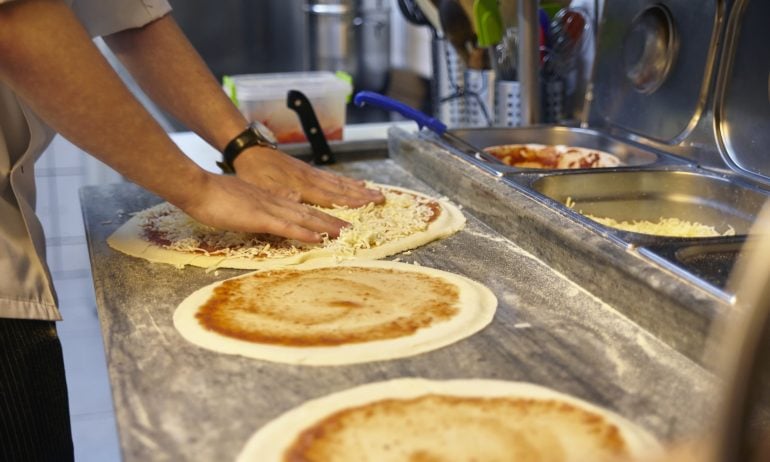
Many or all of the products featured here are from our partners who compensate us. This influences which products we write about and where and how the product appears on a page. However, this does not influence our evaluations. Our opinions are our own. Here is a list of our partners and here's how we make money .
Everyone loves a good slice of pizza, and some people love it enough to make it their entire job and livelihood. If you're thinking about starting a small business, and are specifically wondering how to open a pizza shop, we're here to help.
In the U.S., pizza is wildly popular: 93% of Americans purchase pizza at least once a month. To put that percentage into perspective, that’s about 350 slices Americans are eating per second, or 100 acres of pizza eaten in a day.
Why do Americans love pizza so much? According to Rob Veltri, owner of Pizza in the Square in Yonkers, New York, loving pizza is a simple concept: “It’s one of the healthier bad foods you can have,” he says. Today, approximately 17% of the nation’s restaurants are pizzerias and the highest-grossing, single-unit independent pizzeria in America is Moose's Tooth Pub and Pizzeria in Anchorage, Alaska, which brings in about $6 million in sales annually.
So if you're ready to take the leap to restaurateur, keep reading to find out how to open a pizza shop of your very own.

1. Create a business plan for your pizza shop
Usually, the first step for opening a business would be writing a business plan. When you're starting a pizza shop, the biggest part of that plan is coming up with the perfect product to keep your customers coming back for more.
Pizza in the Square has been around for nearly 30 years and Veltri was there from day one. As a result, he remembers a time when people were afraid to try a pizza that veered slightly from the traditional. This isn’t the case anymore.
“Right now, you can put anything on a pizza,” he says. “You really can. I think that’s one of the things that makes us successful. We’re always willing to change and make things different.”
Perhaps the Italian immigrants who introduced pizza to Americans in the late 19th century wouldn’t approve of Veltri’s Nutella pie or spaghetti and meatballs pizza, but modern, more experimental consumers are loving them. Just take a look at the pizzeria’s reviews for proof, says Veltri.
Once you have the perfect recipes and menu down to a science, it's time to create the rest of your business plan for your pizza shop. This includes creating a budget, a marketing and sales plan, a name for your shop and should also include ideas for a restaurant or business space.
Something else you'll need to decide at this stage is the legal structure of your business. Choosing a business entity will be necessary for creating your business plan and the steps that follow, including what taxes you'll pay and what legal responsibilities you'll assume. Whether you opt for a sole proprietorship, LLC, C corporation or another business structure, you'll need to provide this information as you follow the next steps in starting a pizza shop. And keep in mind, you may want to consult a business attorney when making this decision.
How much do you need?
with Fundera by NerdWallet
We’ll start with a brief questionnaire to better understand the unique needs of your business.
Once we uncover your personalized matches, our team will consult you on the process moving forward.
2. Register your pizza shop
Once you've crafted the business plan for your pizza shop and chosen a business entity , the next step in starting your pizza shop is registering your business. To do so, you'll need to get an employer identification number , also known as an EIN or business tax ID number. You can apply for an employer identification number with the IRS online and get one almost instantly, and this number will be used for tax, banking and credit purposes.
Registering your business also means claiming the name of your pizza shop, which is a different process in each state. Many states though, like Pennsylvania, have an online database where you can check and see if your desired business name is available.
Once you've established that the name you want for your pizza shop is available, you should register the business under that name by following the rules laid out by the state in which you'll be operating your pizza shop.
3. Get any required licenses or permits for your pizza shop
Any time you're serving food you're going to need additional permits and licenses to do so legally. After all, there's a certain level of responsibility that comes with serving customers a hot slice (or five).
The rules around these business licenses and permits can vary from state to state but you'll likely need a food service license, food handler's permit, a building health permit and more.
Having fresh ingredients isn't only good from a food safety perspective, customers want it too. “What I’ve seen in the last few years is that people have turned back to quality,” says Veltri. “If it’s a little more expensive, they understand. With the news, social media and everything, [consumers] have learned how things like the costs of goods have increased. They’ll accept the good quality if they have to pay more for it.”
He adds: “We grind our tomatoes by hand every day. That’s how we make our sauces. Everything is done from scratch. Every sauce is made from scratch. Sometimes it takes a little longer, but everything is done fresh. And that’s what we’ve focused on since day one.”
If you also plan to sell alcohol at your pizza shop, you'll need a liquor license — which can be a complicated process in its own right. Make sure you understand all of the licenses and permits you'll need when starting a pizza shop before you open your doors to customers.
4. Create a financial plan and get funding for your pizza shop
Just as important as crafting the perfect recipe, creating a financial plan is essential to starting a pizza shop. After all, starting any new business is usually not cheap. As a consumer, you might think, "How expensive could the ingredients be? I can get a slice for a dollar on the street, how much could it cost the shop to make the pizza in the first place?" The answer is actually, it could cost a lot to open a pizza shop and run it successfully.
According to Veltri, it can cost anywhere between $75,000 to $100,000 for a pizza counter and maybe a few booths. If you want to open a sit-down pizzeria, that can run you at least half a million. Whatever your dream pizzeria looks like, be realistic and overestimate your startup costs — adding on an additional 15% to 25% to your budget — so that you don’t run into financial issues while starting your pizza shop.
Veltri’s reasoning for high costs: “Equipment is not cheap."
“I have two ovens in the front,” he explains. “The basic, old-fashioned oven with the stone and everything, then I also have a conveyor oven underneath that.”
While having fancy equipment, like a wood-burning oven, might have higher costs, as this New York Magazine report finds, the oh-so-satisfying taste it produces might be worth it. For instance, think about Brooklyn’s famous Roberta’s pizza joint, which has gained massive popularity and a loyal following for their wood-fired pies and home-grown ingredients.
Before you get discouraged, there are financing solutions that can provide the money you need to start your pizza shop. From restaurant equipment financing to a business term loan, or even a 0% intro APR credit card, there are several options to help get your pizza shop off the ground.
This is also where your business plan can really come in handy. Anyone considering giving you money will want to see that you have a solid plan for starting the business and eventually turning a profit. So whether you're hoping for a bank loan or to find an investor, having a solid business plan is key to starting a pizza shop.

Start Your Dream Business
5. Open a business bank account for your pizza shop
As soon as your pizza shop is officially registered and you're about to start spending money on it, you should open a business checking account . You'll want to keep your business finances separate from your personal finances, at the very least for tax purposes. Establishing your bank account early on is also an important element for building your business credit score . You can check your free business credit report in a few places online. Your business credit score is another reason the EIN is important and why you'll want it whether it's required for your business or not.
When starting a pizza shop, you'll want, at the minimum, a business checking account and a business credit card . Once you have your business account and credit card set up, be sure to use them for any expenses related to your pizza shop, including purchases, paying bills, etc.
On a similar note...


Pizza Shop Business Plan Template
Pizza shop business plan.
If you want to start a pizza shop business or expand your current one, you need a business plan.
Over the past 20+ years, we have helped over 5,000 entrepreneurs and business owners create business plans to start and grow their pizza shops.
Below are links to each section of your pizza shop business plan template:
Next Section: Executive Summary >
Pizza Shop Business Plan FAQs
What is a pizza shop business plan.
A pizza shop business plan is a plan to start and/or grow your pizza shop business. A business plan provides details about your business concept, competition, target customers, presents your marketing plan and details your financial projections.
What Is the Easiest Way to Complete My Pizza Shop Business Plan?
Growthink's Ultimate Business Plan Template allows you to quickly and easily complete your Pizza Shop Business Plan.
Why Do You Need a Business Plan for a Pizza Shop?
If you’re looking to start a pizza shop business, or grow your existing pizza shop business, you need a business plan. A business plan will illustrate your business goals and your strategy for reaching them. Your Pizza Shop Business Plan should be updated as your company grows and changes.
What Are the Sources of Funding for Pizzerias?
Pizza Shop businesses are usually funded through small business loans, personal savings, credit card financing and/or angel investors.
PIZZA SHOP BUSINESS PLAN OUTLINE
- Pizza Shop Business Plan Home
- 1. Executive Summary
- 2. Company Overview
- 3. Industry Analysis
- 4. Customer Analysis
- 5. Competitive Analysis
- 6. Marketing Plan
- 7. Operations Plan
- 8. Management Team
- 9. Financial Plan
- 10. Appendix
- Pizza Shop Business Plan Summary
Other Helpful Business Plan Articles & Templates


How to Write a Business Plan for a Pizzeria: Complete Guide
- January 3, 2023
- Food & Beverage

Whether you’re looking to raise funding from private investors or to get a loan from a bank (like a SBA loan) for your pizzeria, you will first need to prepare a solid business plan.
In this article we go through, step-by-step, all the different sections you need in the business plan of your pizzeria . Use this template to create a complete, clear and solid business plan that get you funded.
1. Pizzeria Executive Summary
The executive summary of a business plan gives a sneak peek of the information about your business plan to lenders and/or investors.
If the information you provide here is not concise, informative, and scannable, potential lenders and investors will lose interest.
Though the executive summary is the first and the most important section, it should normally be the last section you write because it will have the summary of different sections included in the entire plan.
Why do you need a business plan for a pizzeria?
The purpose of a business plan is to secure funding through one of the following channels:
- Obtain bank financing or secure a loan from other lenders (such as a SBA loan )
- Obtain private investments from investment funds, angel investors, etc.
- Obtain a public or a private grant
How to write your pizzeria’s executive summary?
Provide a precise and high-level summary of every section that you have included in the business plan of your pizzeria. The information and the data you include in this segment should grab the attention of potential investors and lenders immediately.
Also make sure that the executive summary doesn’t exceed 2 pages in total: it’s supposed to be a summary for investors and lenders who don’t have time to scroll through 40-50 pages, so keep it short and brief.
The executive summary usually consists of 5 major sub-sections:
- Business overview : start by introducing your pizzeria and give a brief description of the type of pizzeria you want to start (sit-in vs. takeaway ; franchise vs. independent shop). Also mention the menu, and average product prices, where your shop will be located, how many customers you can receive, etc. Also, since pizza shops are very popular businesses, do not forget to mention the niche or the specialty that will differentiate your pizzeria from your competition
- Market analysis : the market analysis segment will contain an overview of the expected market size , target audience , and demography. Also provide here a quick overview of your competitors
- People : first, introduce your pizzeria’s management. Provide a brief (no more than a couple of sentences each) of the experience and track record of the team. Also, speak about your hiring plans: in other words, how you intend to run the business (what are the different teams and how many employees will you hire?)
- Financial plan : how much profit and revenue do you expect in the next 5 years? When will you reach the break-even point and start making profits? You can also include here a chart with your key financials (revenue, gross profit, net profit )
- Funding ask : what loan/investment/grant are you seeking? How much do you need? How long will this last?

Pizzeria Financial Model
Download an expert-built 5-year Excel financial model for your business plan
2. Pizzeria Business Overview
This is where you will get into the details and explain what your pizzeria represents and why you want to open a pizzeria. There are many important questions that you must answer in this segment because investors usually want to know the answers to these questions. Here are a few questions that you must answer:
- What is the rationale behind you opening a pizzeria today?
- Where will your pizza shop be located? Why did you select that location?
- Why did you select the type of pizzeria you want to open?
- What will be your menu?
- What will be your pricing strategy and why?
- Will your operating days and hours be the same as your competitors?
- Who is your target audience?
- How many orders/customers do you expect per month? How many customers can sit-in in your pizzeria (if you have a sit-in restaurant)?
- What will be the legal structure of your company?
a) History of the Project
Any business overview must start with explaining the history of the project. There are 2 components here:
- Passion & experience of the business owner
- Rationale behind starting a pizzeria today
Passion & experience
You may or may not have prior experience. If you have experience, speak about it and how it will help you to run your business. For instance, you may have been the lead pizza chef in one of the country’s leading pizza franchise for 9 years, and now you want to start your own pizzeria and use your knowledge to run it more efficiently.
Is there a certain problem (or perhaps, a set of problems) that your pizzeria will try to solve? For example, there may not be any restaurant pizzeria within the 3-mile radius of the location where you want to open a pizzeria, despite a strong demand for it (e.g. people might resort to delivery-only apps).
But that’s not all! The market must be suitable for a business to exist and thrive. For instance, if you are trying to open your full-service pizzeria in a location where people have a very busy lifestyle and prefer takeout and/or delivery pizza, your business model might be as successful. Similarly, if the population of the target market has a high percentage of vegans and you want to sell only non-vegetarian pizza at your pizzeria, you will surely not receive as many customers as you would expect.

b) Business Model
This sub-section of the Business Overview will explain your business model. Describe the following points briefly:
- Will you buy an existing pizzeria and do some remodeling, or will you start a new pizzeria and design it from scratch?
- The type of pizzeria you want to open and why
- Will you buy a franchise or do you plan to open an independent pizza shop instead?
What are the different types of pizza shops?
There are multiple types of pizzerias. Some of them that you may consider include, but are not limited to:
- Full-Service Pizzeria
This type of pizzeria works on the concept of offering food and drinks. If you plan to open a full-service pizzeria, you must cater to a dine-in facility paired with a bar.
You can either choose to offer a high-end experience to your customers with an upscale restaurant with a pizza-only menu. Instead, you can open a laid-back pizzeria restaurant with a bar, TVs for the sports crowd or by inviting live-music bands for celebrations.
- Takeout and/or Delivery Pizzeria
For a delivery pizzeria, you will have to plan for in-house drivers who can deliver the pizza to the customers. Alternatively, you can collaborate with a delivery partner who can take care of the deliveries.
- Food Truck Pizzeria
The mobility offered by a food truck pizzeria is one of its prime advantages. If you plan to open a food truck pizzeria, you can move around places where it’s easier to find customers. This model is the best fit for business districts, college areas, etc. Yet, you might need special licenses if you want to open a food truck pizzeria. For more information on how to write a business plan for a food truck instead, check out our article here .
- Ghost Kitchen Pizzeria
The pandemic has popularised a new type of business model: ghost kitchens. A ghost kitchen pizzeria would only cater to online orders, so it does not need any storefront. For more information, read our article here .

c) Products & Services
Just because you are opening a pizzeria, it doesn’t mean that you must restrict your product offerings to pizzas only. In fact, pizzerias offer more than just pizzas. Pizzerias usually sell pizzas, appetizers, sandwiches, salads, drinks (non-alcoholic or alcoholic), desserts, etc.
Since pizzas have many types and a vast array of toppings, it may not be possible to list all your products and services (save it for the appendix). Instead, make it clear here whether you just want to offer pizzas (and approximately how many different pizzas), or if you plan to offer other dishes too (antipasti, salads, pasta, etc.).

d) Pricing Strategy
In this section, reveal your pricing strategy and also provide the rationale behind the pricing structure. For instance, if you may charge higher than your competitors if you are:
- Sourcing your raw materials from organic farms
- Using a special ingredient imported from some other country
Your pricing strategy will also significantly depend on the spending capability of the target audience in your area of operation.
For example, if you are trying to sell expensive pizzas in a middle class area, you may not be successful. Thus, you must be aware of the spending capabilities of your target audience and determine the menu and prices accordingly.
Create a pricing chart and ensure to provide an average price range for your products. Yet, you don’t need to provide exact pricing for each product. For example, if you are selling veggie pizzas with a wide array of toppings that can heavily alter the price, you don’t need to list each variant. Instead, you can just say something like: veggie pizzas – $8.90 to $15.90.
Offering a pricing table is important because your pricing strategy will allow investors to tie your pricing strategy with your financial projections (see “Financial Plan” below).

e) Legal Structure
Finally, your business overview section should specify what type of business structure you want. Is this a corporation or a partnership (LLC)? Who are the investors? How much equity percentage do they own? Is there a Board of Directors? If so, whom? Do they have experience in the industry?
3. Pizzeria Market Overview
You must understand the market you wish to operate. For example, if you are trying to sell Hawaiian-style pizzas with pineapple toppings in an area that is popular for its high meat consumption ratio, you may run into losses. In this case, you will most likely attract a bigger customer base if you are offering meat-based toppings.
Therefore, you must cover here 3 important areas:
- Market size & growth : how big is the pizza industry in your area? What is its growth rate (or decline rate) and what are the factors contributing to its growth or decline?
- Competition overview : how many competitors are there? How do they compare vs. your business? How can you differentiate yourself from them?
- Customer analysis : who is your target audience? What type of pizzas do they prefer? How regularly do they visit or order from pizzerias? What type of pizzas do they prefer to eat? What other things do they order along with pizzas? How much do they spend on pizzas each month?
a) Pizzeria Market Size & Growth
How big is the pizzeria industry in the us.
According to Statista , the total sales of the pizza industry in the US was $46 billion in 2020. The total number of pizza restaurants in the country was 75,000+ in 2020: that’s an average turnover of $600,000 per pizzeria..!

How big is the pizzeria industry in your area?
After getting a clear picture of the dental industry in the US as a whole, narrow down to your location. It’s very likely that you won’t find the number anywhere (at least not for free). In which case, read our article on how to estimate TAM, SAM and SOM for your startup. Let’s see how to do it below:
We know that the average annual revenue for each pizzeria is ~$600,000 in the US. Therefore, if the area where you want to open your pizzeria has 20 pizzerias already (say in a 5 miles radius), you can safely assume that the pizza industry in the area is worth approximately $12 million.
How fast is the pizzeria industry growing in the area?
Looking at publicly available reports online, we know that the average annual growth of the industry was 1.1% from 2017 to 2022 . But what about where you live?
US national averages can be a great addition to your business plan, yet they don’t necessarily help to assess the pizzeria industry where you plan to operate. For example, the industry might be growing in the US, but declining in your region for a number of reasons (decreasing population or disposable income, etc.).
Instead, you can use the number of pizzerias as a proxy to find the market growth in your area. For instance, if there were 18 pizzerias in 2018 and 20 pizzerias in 2022, the average annual growth rate is ~3%, higher than the US average.

b) Pizzeria Competition Overview
Studying your competitors’ business models is vital. Indeed, you must clearly understand what makes them successful or why they failed.
It is always a good idea to do some research (if necessary, physically visit your competitors without revealing your business intentions) and create a comparative table summarizing their products, shop design and size, marketing strategies, online presence (e.g. reviews), target audience, etc.
Here is a sample table that you can use:
| Competitor #1 | Competitor #2 | Competitor #3 | |
|---|---|---|---|
| Location | xx | xx | xx |
| Business model | Full-Service | Ghost Pizzeria | Takeout |
| Products & services offered | Pizzas Antipasti Salads Sandwiches Desserts | Pizzas Antipasti Salads Sandwiches | Pizzas Antipasti Desserts |
| Online delivery | No | Yes (Uber Eats) | Yes (DoorDash) |
| Signage Social media content PPC ads Coupons, flyers Email marketing | Social media content Loyalty rewards Coupons, flyers | Signage Social media content Loyalty rewards PPC ads Coupons, flyers | |
| Google Rating | 4.6 (720+) | 4.4 (270+) | 4.8 (340+) |
| Pizza price range | $9.9 – $18.5 | $8.9 – $15.9 | $9.5 – $16.9 |
| Shop size | 1,900 sq. ft. | 600 sq. ft. | 600 sq. ft. |
| Staff | 8 | 4 | 6 |
Pizzeria SWOT Analysis
Try to provide here a SWOT analysis (SWOT stands for Strength, Weakness, Opportunities, and Threats).
For example, here is a sample that you can use for a pizzeria:
- Strengths : you may have worked as a head chef of one of the leading pizzeria franchises in the country
- Weaknesses : startup cost, zero reputation
- Opportunities : only one full-service pizzeria serving a 3-mile radius, an affluent area with high spending capacity
- Threats : dominant brands like Papa John’s, Little Caesars , and Pizza Hut are making inroads.
A clear understanding of your strengths and weakness along with opportunities and threats in the real market can also help you to design your marketing strategy. In addition, it helps potential investors to assess the risk and reward profile of your business.

c) Customer Analysis
This is the sub-section where you will provide a detailed analysis of your target audience (your ideal customer(s)). Some important points that you must include in your customer analysis include:
- Age and gender distribution (you can get local demographic data from census.gov )
- Frequency of pizzeria visits
- Average monthly income and disposable income
- Average yearly or monthly spending at pizzerias
- Types of pizzas preferred in the area
- Other foods and drinks usually ordered along with pizzas
- Inclination towards loyalty programs, gift cards, and coupons
- Things they dislike about existing pizzerias and what they expect to be improved
- Preference for big brands vs. independent pizzerias
You can add as many data points as required to validate your business decision. The idea here is to display your deep understanding of the target audience and their needs, preferences, and expectations. This knowledge can help you to tailor your products & services to attract new customers.

4. Sales & Marketing
This is the segment where you outline your customer acquisition strategy. Try to answer the following questions:
- What is your USP ?
- What are the different marketing strategies you will use?
- How do you intend to track the success of your marketing strategy?
- What is your CAC or customer acquisition cost?
- What is your marketing budget?
- What introductory promos and offers do you intend to provide for attracting new customers?
What marketing channels do pizzerias use?
A few marketing channels that pizzerias typically use are:
- PPC ads, Facebook ads, etc.
- Social media content
- Billboards & signages
- Loyalty programs
- Food delivery platforms
- Online food directories (The Fork, Open Table, Google Business, etc.)
- Coupons & gift cards
- Word of mouth, recommendations

What is your unique selling proposition?
In other words, how do you differentiate yourself vs. competitors? This is very important as you might need to win customers from competitors.
A few examples of USPs are:
- Authentic Pizza : you may offer authentic Neapolitan-style pizza from a trained pizza chef
- Location : your pizzeria may be located closer to your target audience and/or closer to a busy street where new potential customers can see your signage
- Price : your services may be cheaper vs. competitors
- Offers and promos : you may offer discount rates on subsequent visits
Your USP will depend on your business model, competitor analysis , and target audience. Whatever your USP be, it should appeal to your potential customers and attract them. Plus, The USP you offer should be convincing enough for investors and lenders.
5. Management & People
You must address two things here:
- The management team and their experience/track record
- The organizational structure: different team members and who reports to whom?
Small businesses often fail because of managerial weaknesses. Thus, having a strong management team is vital. Highlight the experience and education of senior managers that you intend to hire to oversee your pizzeria business.
Describe their duties, responsibilities, and roles. Also, highlight their previous experience and explain how they succeeded in their previous roles.
It is also important here that you explain how their experiences and qualifications help you in implementing the pizzeria you are proposing. If they have specialized training, education, and experience (such as professional pizza-making training, pizza chef with a leading brand, master’s degree in business administration, etc.), add that information.
Organization Structure
Even if you haven’t already hired a manager, chefs, waiters, and other relevant staff members, you must provide a chart of the organizational structure defining the hierarchy of reporting like the one below.

6. Financial Plan
The financial plan is perhaps, with the executive summary, the most important section of any business plan for a pizzeria.
Indeed, a solid financial plan tells lenders that your business is viable and can repay the loan you need from them. If you’re looking to raise equity from private investors, a solid financial plan will prove them your pizzeria is an attractive investment.
There should be 2 sections to your financial plan section:
- The startup costs of your project (if you plan to start a new pizzeria, renovate your pizza shop, etc.)
- The 5-year financial projections
a) Startup Costs
Before we expand on 5-year financial projections in the following section, it’s always best practice to start with listing the startup costs of your project. For a pizzeria, startup costs are all the expenses you incur before you open your pizza shop and start making sales. These expenses typically are:
- The leasing deposit for the space (if you rent) or to buy the real estate (if you buy)
- Renovations and improvements
- Equipment & appliances
- Furniture & tableware
Of course, the startup costs depend on a number of factors, like the size of your pizzeria, its location, the facilities, the menu, etc.
On average, it costs $89,000 to $266,000 to open a casual pizzeria (1,500 sq. ft.) in the US.
Note that these costs are for illustrative purposes and may not be fully relevant for your business. For more information on how much it costs to open and run a pizzeria, read our article here .
| Startup cost | Amount |
|---|---|
| Lease security deposit or loan down payment | $11,000 (lease) – $50,000 (buy) |
| Interior Design & Renovation | $20,000 – $40,000 |
| Equipment | $50,000 – $150,000 |
| Point-of-Sale system (POS) | $2,000 – $5,000 |
| Legal fees & Licensing | $1,000 |
| Initial inventory | $5,000 – $20,000 |
b) Financial Projections
In addition to startup costs, you will now need to build a solid 5-year financial model for your pizzeria.
Your financial projections should be built using a spreadsheet (e.g. Excel or Google Sheets) and presented in the form of tables and charts in the business plan of your pizzeria.
As usual, keep it concise here and save details (for example detailed financial statements, financial metrics, key assumptions used for the projections) for the appendix instead.
Your financial projections should answer at least the following questions:
- How much revenue do you expect to generate over the next 5 years?
- When do you expect to break even?
- How much cash will you burn until you get there?
- What’s the impact of a change in pricing (say 15%) on your margins?
- What is your average customer acquisition cost?
You should include here your 3 financial statements (income statement, balance sheet and cash flow statement). This means you must forecast:
- The number of covers (customers or orders) over time ;
- Your expected revenue ;
- Operating costs to run the business ;
- Any other cash flow items (e.g. capex, debt repayment, etc.).
When projecting your revenue, make sure to sensitize pricing, cost of raw materials (food supplies) and your sales volume. Indeed, a small change in these assumptions may have a significant impact on your revenues and profits.

7. Use of Funds
This is the last section of the business plan of your pizzeria. Now that we have explained what your pizzeria’s business model and concept are, what is your menu, your marketing strategy, etc., this section must now answer the following questions:
- How much funding do you need?
- What financial instrument(s) do you need: is this equity or debt, or even a free-money public grant?
- How long will this funding last?
- Where else does the money come from? If you apply for a SBA loan for example, where does the other part of the investment come from (your own capital, private investors?)
If you raise debt:
- What percentage of the total funding the loan represents?
- What is the corresponding Debt Service Coverage Ratio ?
If you raise equity
- What percentage ownership are you selling as part of this funding round?
- What is the corresponding valuation of your business?
Use of Funds
Any business plan for a pizzeria should include a clear use of funds section. This is where you explain how the money will be spent.
Will you spend most of the loan / investment in paying your employees’ salaries? Or will it cover mostly the cost for the lease deposit and the renovation?
Those are very important questions you should be able to answer in the blink of an eye. Don’t worry, this should come straight from your financial projections. If you’ve built solid projections like in our pizzeria financial model template , you won’t have any issues answering these questions.
For the use of funds, we also recommend using a pie chart like the one we have in our financial model template where we outline the main expenses categories as shown below.
Related Posts

How Profitable is a Pizzeria? Profits & Breakeven Analysis
- October 31, 2023

How To Build a Financial Model for a Pizzeria?

Opening a Pizzeria Costs $89,000 to $266,000
Privacy overview.
| Cookie | Duration | Description |
|---|---|---|
| BIGipServerwww_ou_edu_cms_servers | session | This cookie is associated with a computer network load balancer by the website host to ensure requests are routed to the correct endpoint and required sessions are managed. |
| cookielawinfo-checkbox-advertisement | 1 year | Set by the GDPR Cookie Consent plugin, this cookie is used to record the user consent for the cookies in the "Advertisement" category . |
| cookielawinfo-checkbox-analytics | 11 months | This cookie is set by GDPR Cookie Consent plugin. The cookie is used to store the user consent for the cookies in the category "Analytics". |
| cookielawinfo-checkbox-functional | 11 months | The cookie is set by GDPR cookie consent to record the user consent for the cookies in the category "Functional". |
| cookielawinfo-checkbox-necessary | 11 months | This cookie is set by GDPR Cookie Consent plugin. The cookies is used to store the user consent for the cookies in the category "Necessary". |
| cookielawinfo-checkbox-others | 11 months | This cookie is set by GDPR Cookie Consent plugin. The cookie is used to store the user consent for the cookies in the category "Other. |
| cookielawinfo-checkbox-performance | 11 months | This cookie is set by GDPR Cookie Consent plugin. The cookie is used to store the user consent for the cookies in the category "Performance". |
| CookieLawInfoConsent | 1 year | Records the default button state of the corresponding category & the status of CCPA. It works only in coordination with the primary cookie. |
| elementor | never | This cookie is used by the website's WordPress theme. It allows the website owner to implement or change the website's content in real-time. |
| viewed_cookie_policy | 11 months | The cookie is set by the GDPR Cookie Consent plugin and is used to store whether or not user has consented to the use of cookies. It does not store any personal data. |
| Cookie | Duration | Description |
|---|---|---|
| __cf_bm | 30 minutes | This cookie, set by Cloudflare, is used to support Cloudflare Bot Management. |
| language | session | This cookie is used to store the language preference of the user. |
| Cookie | Duration | Description |
|---|---|---|
| _ga | 2 years | The _ga cookie, installed by Google Analytics, calculates visitor, session and campaign data and also keeps track of site usage for the site's analytics report. The cookie stores information anonymously and assigns a randomly generated number to recognize unique visitors. |
| _ga_QP2X5FY328 | 2 years | This cookie is installed by Google Analytics. |
| _gat_UA-189374473-1 | 1 minute | A variation of the _gat cookie set by Google Analytics and Google Tag Manager to allow website owners to track visitor behaviour and measure site performance. The pattern element in the name contains the unique identity number of the account or website it relates to. |
| _gid | 1 day | Installed by Google Analytics, _gid cookie stores information on how visitors use a website, while also creating an analytics report of the website's performance. Some of the data that are collected include the number of visitors, their source, and the pages they visit anonymously. |
| browser_id | 5 years | This cookie is used for identifying the visitor browser on re-visit to the website. |
| WMF-Last-Access | 1 month 18 hours 11 minutes | This cookie is used to calculate unique devices accessing the website. |
- Create An Account
- Returns & Orders

How to Open a Pizza Shop
Pizza shops are one of the most popular types of foodservice establishments in the country. They can be found in countless towns and are often a staple of local culture, with many geographical regions even having types of pizza that are unique to them. Whether you're new to the pizza industry or have worked in it for years, opening a pizzeria can be a great investment. We'll walk you through the steps of starting a pizza shop so that you can position your business for success.
- Write a Pizza Shop Business Plan
- Choose a Service Style and Brand
- Create a Menu
- Identify a Location
- Secure Funding
- Buy Pizza Shop Equipment
- Hire a Staff
- Advertise Your Business
- Host a Soft Opening
1. Write a Pizza Shop Business Plan
A business plan acts as the roadmap for how to get your pizza shop off the ground. It outlines many details, including short- and long-term goals, financial projections, and market analysis. With a good business plan, you can stay focused on your objectives and make informed decisions as your business grows.
Business plans are also extremely valuable when securing funding. Lenders and investors want a well-thought-out plan demonstrating viability and potential success. By including detailed financial projections and market analysis in your business plan, you can provide evidence that your business idea is feasible and has the potential for profitability.
2. Choose a Service Style and Brand

When starting a pizza shop, one of the crucial decisions you'll need to make early on is choosing a service style and brand that align with your vision. Your branding is the identification mark of your pizza shop and what sets you apart from the competition. Good branding is clearly defined and encompasses the ethos of your business, making it instantly recognizable.
Service style refers to how you serve customers. There are several different service styles, each catering to different preferences and needs. It's important to note that you don't have to pick just one service style and can combine multiple styles to offer a complete dining experience. We've listed the three major pizza shop service styles below:
- Sit-down: Sit-down service offers a traditional dining experience where customers can enjoy pizzas in a cozy restaurant.
- Takeout: Takeout service allows customers to order and pick up their pizzas from your establishment, providing a quick and easy option for those on the go.
- Delivery: Delivery service involves bringing your pizzas directly to your customers' doorsteps, offering convenience and comfort.
3. Create a Pizza Menu
A well-crafted menu can influence customer choices, drives sales , and make it easy to order. Conversely, a bad menu will confuse your customers and lead to fewer sales. Follow the tips below to make sure you design a quality pizza shop menu:
- Include contact information: Place your phone number, website, and location at the top of the menu. This provides customers with essential information and encourages takeout and delivery orders.
- Reflect your brand: Make sure your menu reflects your brand identity and concept. Consistency in design, font choice, colors, and imagery across all your branding materials helps create a cohesive and memorable customer experience.
- Organize in sections: Create sections to categorize your offerings. Separate different styles of pizza by section, such as traditional, gourmet, or specialty pizzas. Additionally, highlight appetizers, salads, desserts, or other food items you offer to provide a comprehensive view of your menu offerings.
- Include prices: Clearly display menu prices for each item to eliminate customer confusion and make ordering easier. You can include prices for individual slices, whole pies, and different pie sizes. Transparency in pricing helps customers make informed decisions and can increase sales.
4. Identify a Location
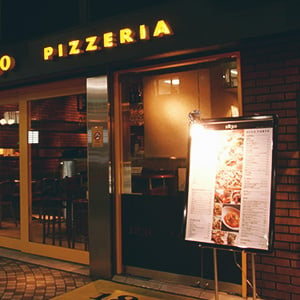
Because pizza shops are so common, location plays a significant role in the success of your business. Not only does location impact your customer base, but it also impacts how easily people can reach your shop. To ensure that you select the best location for your pizza shop, perform a location analysis and keep the following factors in mind:
- Assess competition: Try to find a location where similar restaurants are scarce to reduce direct competition and allow your pizza shop to stand out.
- Consider visibility: Find a spot that is easily visible and accessible to potential customers. A location with high foot traffic or visibility from main roads can attract more customers to your pizza shop.
- Analyze demographics: Build an understanding of the eating habits in your area. Consider factors such as age, income level, and local preferences to tailor your menu and marketing strategies accordingly.
- Consider supply chain: A convenient location allows for easy access to fresh ingredients and efficient delivery services can help streamline your operations.
- Consider growth opportunities: Choosing an area with potential for development and expansion can benefit your pizza shop in the long run as the area evolves and attracts more customers.
5. Secure Funding
When seeking funding for your restaurant, you will first want to determine the total costs needed to start your pizza shop. Assess how much money you already have available and how much more you will need. With these figures calculated, there are several options available for prospective business owners to obtain funding. It's important to note that you don't have to choose one option and can combine multiple to best fit your needs.
- Traditional bank loans: These loans typically have fixed interest rates and structured repayment plans, making them a reliable option for long-term financial support.
- Business line of credit: Business lines of credit provide flexibility for pizza shop owners to access funds as needed. This revolving credit option allows you to borrow up to a limit and pay interest only on the amount you use, providing a safety net for unexpected expenses.
- Business credit card: Business credit cards offer a convenient way to finance small purchases and manage cash flow. With perks like rewards programs and expense tracking tools, business credit cards can be a valuable funding option for day-to-day expenses.
- Small business loans: Small business loans are designed to meet the needs of entrepreneurs looking to start or expand their businesses. These loans often offer competitive interest rates and terms.
- Crowdfunding: Crowdfunding has become a popular way to raise capital for new businesses. Platforms like Kickstarter and Indiegogo allow you to pitch your idea to a wide audience and receive contributions from individuals who believe in your vision.
6. Buy Pizza Shop Equipment
Along with traditional kitchen equipment and supplies, there is a large amount of specialized pizza shop equipment that you'll need to make your pizza shop functional. These range from large appliances to small utensils and can play a significant role in the quality of your pizzas. Before you open your pizza shop, be sure to invest in the following equipment:
- Dough prep equipment: Dough dividers, rounders, and sheeters allow you to prepare uniform batches of dough.
- Pizza ovens: Based on your production needs and space constraints, you can choose between deck pizza ovens, conveyor pizza ovens, or brick pizza ovens. Depending on your concept, you may also want to invest in outdoor pizza ovens.
- Pizza bakeware: To ensure your pizzas cook perfectly, stock up on pizza peels, screens, and stones. These tools help to handle and bake pizzas evenly.
- Pizza prep supplies: Equip your kitchen with high-quality tools for preparing pizza toppings and assembling pizzas, such as pizza cutters, cutting boards, and serving utensils.
- Pizza refrigeration equipment: Walk-in and reach-in refrigerators are a staple of any commercial kitchen, allowing you to store pizza ingredients easily.
- Pizza boxes: Perfectly package your pizzas for take-out or delivery by choosing the right pizza box sizes for your menu.
7. Hire a Staff
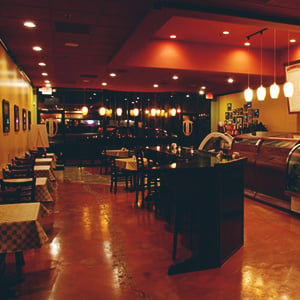
Your employees will be the face of your pizzeria. When interviewing candidates , look for positive, warm personalities, as it's important that customers feel comfortable interacting with your staff. Search for potential employees who match the qualifications you are looking for, are genuinely interested in becoming a part of your restaurant, and fit the culture you want to build. Some of the most important positions in a pizza shop include:
- Cashier: The cashier is often the first point of contact for customers. They handle transactions, take orders, and assist customers as needed.
- Pizza maker/builder: The pizza maker is responsible for preparing and assembling pizzas according to customer orders. They must understand different pizza toppings, sauces, and cooking techniques to ensure consistency and quality in every pizza they create.
- Server: Servers take orders, deliver food to tables, and provide excellent customer service in dine-in pizza shops.
- Delivery driver: For pizza shops that offer delivery service service, reliable and efficient delivery drivers are essential. A professional and courteous delivery driver can leave a lasting impression.
- Store manager: The store manager oversees the day-to-day operations of the pizza shop, including staff management, inventory control, customer relations, and financial management.
8. Advertise Your Business
With most aspects of your new business in place, you'll need to devise a marketing strategy. There is a wide range of options, ranging from traditional marketing methods to new digital options. Not every type will work for every business, as the effectiveness of different advertising methods can vary depending on where you live and what demographic you serve. Consider your target audience and budget when deciding the best advertising approach for your pizza shop.
- Use social media: Social media sites are easy to create accounts on and give you the chance to reach a wide range of consumers. Sites like Instagram and TikTok are powerful tools that allow you to post pictures and videos of your signature foods.
- Create a website: Your restaurant website should be easy to navigate and represent your brand. Include all the necessary information about your pizza place, such as your address, phone number, hours, and menu.
- Join review platforms: Restaurant review platforms like Yelp and Google My Business offer an easy way for potential customers to find your restaurant. These sites expand your shop's visibility and let customers leave reviews of their experience.
- Take out print ads: Print media is a simple yet effective way to raise awareness for your restaurant. Examples of this advertising method include taking out ads in the newspaper and posting flyers around town.
- Launch a rewards program: Whether issuing punch cards or creating a loyalty program through an app, offering customer rewards is an easy way to build brand loyalty.
- Create an email list: To engage customers with emails, use relevant content for each group of customers. For example, you could send dine-in specials to reservation customers or delivery coupons to online ordering customers. Your email should communicate your brand and forge a relationship with guests.
- Offer promotions to new customers: Offer guests a free soft drink or an extra side dish with a pizza slice. This will give customers the impression that they are treated well at your establishment. When you execute promotions correctly, guests will be more likely to recommend your pizza shop and return themselves.
9. Host a Soft Opening
Consider hosting a soft opening before your official starting date, allowing you to test your service strategies and fix any issues that may come up. Consider offering a smaller menu or just serving for part of the day. You can also host friends and family events with complementary dishes or invite local businesses. These approaches also help you to gain local patrons who may spread the word about your new pizza place before its official opening date.
With such a high demand for pizza, opening a pizza shop has the potential to yield great returns. A profitable bottom line is more likely with logistical planning, delicious recipes, and a distinctive brand and concept. With the information above, you can make sure you prepare to open your new pizza shop the right way.
Related Resources
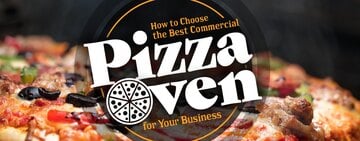
Types of Pizza Ovens
If you're starting a pizzeria, the pizza oven is the most important investment you'll make. There are five types of commercial pizza ovens: brick, con
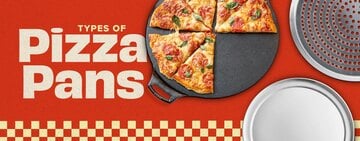
Different Types of Pizza Pans
Pizza is beloved all over the country and served at many cafes, pizzerias, food trucks, restaurants, and bars. A key aspect of a pizzeria's success is

The Best Cheese for Pizza
It’s safe to say that pizza is one of America’s favorite foods. In just the United States, there are over 70,000 pizzerias that generate more than $32
- Topics 1370
- Industrial 55
- Troubleshooting Guides 21
- Restaurant Management 130
- Bar Management 58
- Catering Tips 37
- Bakery Management 42
- Food Trucks & Concessions 49
- Advertising & Marketing 37
- Eco-Friendly Tips 11
- Facility Layout & Design 42
- Coffee Shop Tips 29
- Installation & Maintenance 52
- Janitorial & Pest Control 30
- Safety & Sanitation 89
- Startup Tips 104
- Menu Design 10
- Kitchen & Cooking Tips 84
- Hospitality Management 24
- Pizza & Sandwich Shop Tips 36
- Smallwares 37
- Food Prep 91
- Tabletop Items 18
- Disposables 22
- Calculators & Tools 6
- Consumables 53
- Warewashing & Laundry 18
- Cooking Equipment 92
- Food Storage & Refrigeration 51
- Beverage Equipment 36
- Office Supplies 6
- Resource Type
- Troubleshooting 1
- In-Depth Articles 278
- Buying Guides 305
- Product Reviews 78
Join Our Mailing List
Receive coupon codes and more right to your inbox.

Pizza Business Plan Template
Written by Dave Lavinsky
Pizza Business Plan
You’ve come to the right place to create your Pizza business plan.
We have helped over 5,000 entrepreneurs and business owners create business plans and many have used them to start or grow their Pizza businesses.
Below is a template to help you create each section of your Pizza business plan.
Executive Summary
Business overview.
Papa Jack’s is a new pizza restaurant in the Cincinnati, Ohio area that will serve residents, businesses and local schools. The restaurant will primarily be a dine-in establishment, but will also offer delivery and pick-up. The pizzeria offers an extensive menu that includes pizza, sandwiches, pasta, salads, desserts, and drinks. All of our food is made from unique and authentic Italian recipes created by the founder himself.
Papa Jack’s is founded and run by Jack Russo. Jack has spent the past 15 years in the restaurant industry, working as a waiter, chef, and restaurant manager. His experience in the industry has given him the knowledge and skills needed to run all aspects of a pizza restaurant.
Product Offering
Papa Jack’s will offer a full menu of pizzas, salads, sandwiches, and desserts. Pizza selections include thin crust, pan and stuffed, while pasta options include all traditional Italian specialties like spaghetti and meatballs, fettuccine alfredo and lasagna. Sandwiches include Italian Beef, Sausage and Chicken Parmesan.
The restaurant is also available for private events and catering.
Customer Focus
Papa Jack’s will serve the residents and workers of Cincinnati, Ohio and the immediately surrounding areas. The area is home to thousands of families and students who are always looking for high-quality pizza restaurants. Cincinnati is also full of hard-working laborers who need high-quality dine-in and takeout options after a hard day of work.
Management Team
Papa Jack’s is founded and run by Jack Russo. Jack has worked in the restaurant industry for 15 years and is knowledgeable of the operations and standard procedures of running a restaurant. Jack is also a well-respected chef who has made thousands of pizzas and other Italian dishes throughout his career. After spending years working at other restaurants, Jack has decided to run his own pizza restaurant where he can sell pizzas made from his own unique and authentic recipes. Though Jack has experience managing a restaurant, he will hire other management staff to help him run Papa Jack’s.
Success Factors
Papa Jack’s will be able to achieve success by offering the following competitive advantages:
- Location: Papa Jack’s location is near the center of town, giving us access to commuters going and leaving, local office workers, students and passersby. We also offer adequate parking making it easy for customers to patronize us.
- Great pizza and service at an affordable price: The pizza restaurant will offer dine-in, home delivery and carry-out services, providing convenience to our customers and further extending our market reach.
- Management: Our management team has years of business and marketing experience that allows us to market to and serve customers in a much more sophisticated manner than our competitors.
- Relationships: Having lived in the community for 25 years, Jack Russo knows all of the local leaders, newspapers and other influencers. As such, it will be relatively easy for us to build branding and awareness of our restaurant.
Financial Highlights
Papa Jack’s is seeking a total funding of $400,000 to launch its pizza restaurant. The capital will be used for funding capital expenditures, salaries, marketing expenses, and working capital.
Specifically, these funds will be used as follows:
- Restaurant design/build: $200,000
- Equipment, supplies, and inventory: $50,000
- Three months of overhead expenses (payroll, rent, utilities): $100,000
- Marketing costs: $30,000
- Working capital: $20,000
The following graph below outlines the pro forma financial projections for Papa Jack’s.
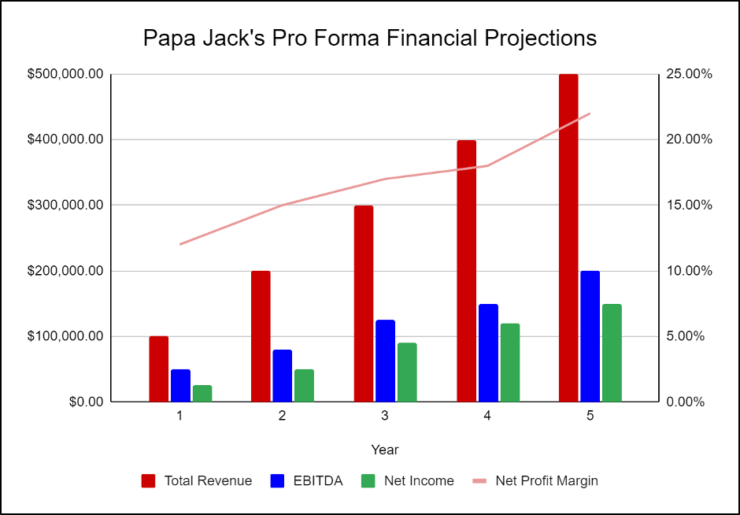
Company Overview
Who is papa jack’s, papa jack’s history.
Papa Jack’s was founded by Jack Russo. Jack has worked in the restaurant industry for 15 years and is ready to apply his experience and skills in his own pizza restaurant. His experience as a chef has helped him create an extensive menu made from his own unique and authentic recipes.
Jack incorporated Papa Jack’s on February 1st, 2023 and was able to achieve the following milestones since then:
- Developed the company’s name, logo and website
- Created the menu
- Determined equipment and inventory requirements
- Began recruiting key employees with experience in the restaurant industry
Papa Jack’s Services
Industry analysis.
The pizza industry has grown over the past five years due to rising consumer spending and changing preferences. Consumer spending is expected to increase an annualized 3.0%, as unemployment declines and economic conditions improve. As a result, the pizza industry has benefitted.
Changing consumer preferences have altered the industry over the past five years. Americans have become more concerned about their health and the food they eat, moving away from food high in fat, salt and sugar. Organic, locally grown and gourmet food has become more popular, and pizzerias are offering a greater array of flatbreads and whole-wheat and gluten-free crusts as a result. Consumers have also been indicating a preference for quick-service pizza shops, where pizza can be ordered online, rather than traditional, sit-down pizza restaurants.
The way operators use technology will also become increasingly important to the industry’s performance as consumers increasingly use their smartphones or tablets to order, expecting seamless internet interfaces that make it easy to customize pizza preferences.
Customer Analysis
Demographic profile of target market.
The following are the precise demographics of the Cincinnati area:
Customer Segmentation
Papa Jack’s will primarily target the following customer profiles:
- Local workers
Competitive Analysis
Direct and indirect competitors.
Papa Jack’s will face competition from other companies with similar business profiles. A description of each competitor company is below.
Pizza Garden
Pizza Garden was founded in 1988 and opened its first franchise a year later. Pizza Garden has nearly 14,000 restaurants, about 60% of which are in the United States. Similar to its competitors, the company focuses on a franchise model, with over 90.0% of Pizza Garden restaurants operating under franchise or license agreements.
Pizza Garden’s menu features a range of pizzas, offering a variety of toppings suited to local preferences and tastes. Many Pizza Garden locations also offer pasta and chicken wings. Pizza Garden offers casual dine-in, delivery and carryout.
City Pizzeria
Founded in 1985, City Pizzeria is one of the largest pizza restaurant chains in the United States. The company operates and franchises pizza delivery and carryout. The company operates in all 50 states and in 34 countries.
City Pizzeria’s menu includes pizza, and other side items such as breadsticks, cheese sticks, chicken wings and desserts, all made of quality ingredients on a consistent basis. The company’s quality control center system takes advantage of volume purchasing of food and supplies and provides consistency in fresh dough production. The company’s marketing strategy has increasingly been focused towards online and digital marketing in response to increasing consumer use of online and mobile technology.
Checkers Pizza
Checkers Pizza has grown to over 14,800 company-owned and franchised locations worldwide since its founding in 1960. Checkers Pizza operates in all 50 states and has locations in more than 70 countries. Furthermore, it is the second-largest pizza company in the world. Checkers Pizza sales are primarily generated through its pizza delivery business. As a result, the company focuses on securing its position within the industry by providing convenient store locations and an efficient supply chain.
Checkers Pizza’s menu varies regionally, but is primarily focused on Italian-American entrees and side dishes. They recently added artisan-style pizzas and added handmade pan pizza to their menu. They also have pasta, chicken, bread bowls, desserts and oven-baked sandwiches.
Competitive Advantage
Papa Jack’s will be able to offer the following advantages over their competition:
Marketing Plan
Brand & value proposition.
Papa Jack’s will offer the unique value proposition to its clientele:
- Moderate price point
- Offering a convenient location that offers dine-in, delivery and carry-out options
- Family-friendly environment
- Providing excellent customer service
Promotions Strategy
The promotions strategy for Papa Jack’s is as follows:
Papa Jack’s will initially give free pizza samples to passersby to enable them to taste the quality of our products and learn about us.
Website/SEO
Papa Jack’s will develop a professional website that showcases pictures of our pizzas, drinks, and other food offerings. It will also invest in SEO so that the company’s website will appear at the top of search engine results.
Social Media
Jack Russo will create the company’s social media accounts and invest in ads on all social media platforms. These accounts will showcase pictures of the restaurant and popular items on the menu. The company will use targeted marketing to appeal to our target demographics.
Word of Mouth & Referrals
Papa Jack’s is confident that its existing loyal clients will spread the word and refer the pizzeria to residents who may not be familiar with it. The pizzas speak for themselves and word will quickly spread around town of the delicious pizza and food that Papa Jack’s has to offer.
The pricing of Papa Jack’s will be moderate and on par with competitors so customers feel they receive value when purchasing our pizzas and other food items.
Operations Plan
The operations plan for Papa Jack’s is relatively simple as its overhead and cost is small. The functional roles for its employees are as follows:
Operation Functions:
- Jack Russo will be the Owner and Restaurant Manager of Papa Jack’s. He will oversee the general operations of the restaurant, help out with customer service, and help out in the kitchen.
- Jack will hire an Assistant Manager to help him manage the staff and run the general operations of the restaurant.
- Jack will also hire an Administrative Assistant to help out with the administrative and executive functions of the company.
- As the restaurant grows, Jack will hire several waiters, chefs, and other staff to run the service functions of the pizzeria.
Milestones:
Papa Jack’s aims to open in the next six months. The following are the milestones needed in order to obtain this goal.
- 3/202X – Finalize lease agreement
- 4/202X – Begin interior design and construction
- 5/202X – Social media and advertising campaign begins
- 6/202X – Final walk-through of construction and build-out
- 7/202X – Order and pre-stock inventory; hire key employees
- 8/202X – Grand opening of Papa Jack’s
Financial Plan
Key revenue & costs.
Papa Jack’s revenues will come primarily from selling pizza, sandwiches, pasta, drinks, and other food items.
The major costs for the company will be food costs and salaries. In the initial years, the company’s marketing cost is expected to be high, as it establishes itself in the market.

Funding Requirements and Use of Funds
Key assumptions.
The following outlines the key assumptions required in order to achieve the revenue and cost numbers in the financials and pay off the startup business loan.
- Year 5 : 110
- Annual lease: $100,000
- Average order value: $25
Financial Projections
Income statement.
| FY 1 | FY 2 | FY 3 | FY 4 | FY 5 | ||
|---|---|---|---|---|---|---|
| Revenues | ||||||
| Total Revenues | $360,000 | $793,728 | $875,006 | $964,606 | $1,063,382 | |
| Expenses & Costs | ||||||
| Cost of goods sold | $64,800 | $142,871 | $157,501 | $173,629 | $191,409 | |
| Lease | $50,000 | $51,250 | $52,531 | $53,845 | $55,191 | |
| Marketing | $10,000 | $8,000 | $8,000 | $8,000 | $8,000 | |
| Salaries | $157,015 | $214,030 | $235,968 | $247,766 | $260,155 | |
| Initial expenditure | $10,000 | $0 | $0 | $0 | $0 | |
| Total Expenses & Costs | $291,815 | $416,151 | $454,000 | $483,240 | $514,754 | |
| EBITDA | $68,185 | $377,577 | $421,005 | $481,366 | $548,628 | |
| Depreciation | $27,160 | $27,160 | $27,160 | $27,160 | $27,160 | |
| EBIT | $41,025 | $350,417 | $393,845 | $454,206 | $521,468 | |
| Interest | $23,462 | $20,529 | $17,596 | $14,664 | $11,731 | |
| PRETAX INCOME | $17,563 | $329,888 | $376,249 | $439,543 | $509,737 | |
| Net Operating Loss | $0 | $0 | $0 | $0 | $0 | |
| Use of Net Operating Loss | $0 | $0 | $0 | $0 | $0 | |
| Taxable Income | $17,563 | $329,888 | $376,249 | $439,543 | $509,737 | |
| Income Tax Expense | $6,147 | $115,461 | $131,687 | $153,840 | $178,408 | |
| NET INCOME | $11,416 | $214,427 | $244,562 | $285,703 | $331,329 |
Balance Sheet
| FY 1 | FY 2 | FY 3 | FY 4 | FY 5 | ||
|---|---|---|---|---|---|---|
| ASSETS | ||||||
| Cash | $154,257 | $348,760 | $573,195 | $838,550 | $1,149,286 | |
| Accounts receivable | $0 | $0 | $0 | $0 | $0 | |
| Inventory | $30,000 | $33,072 | $36,459 | $40,192 | $44,308 | |
| Total Current Assets | $184,257 | $381,832 | $609,654 | $878,742 | $1,193,594 | |
| Fixed assets | $180,950 | $180,950 | $180,950 | $180,950 | $180,950 | |
| Depreciation | $27,160 | $54,320 | $81,480 | $108,640 | $135,800 | |
| Net fixed assets | $153,790 | $126,630 | $99,470 | $72,310 | $45,150 | |
| TOTAL ASSETS | $338,047 | $508,462 | $709,124 | $951,052 | $1,238,744 | |
| LIABILITIES & EQUITY | ||||||
| Debt | $315,831 | $270,713 | $225,594 | $180,475 | $135,356 | |
| Accounts payable | $10,800 | $11,906 | $13,125 | $14,469 | $15,951 | |
| Total Liability | $326,631 | $282,618 | $238,719 | $194,944 | $151,307 | |
| Share Capital | $0 | $0 | $0 | $0 | $0 | |
| Retained earnings | $11,416 | $225,843 | $470,405 | $756,108 | $1,087,437 | |
| Total Equity | $11,416 | $225,843 | $470,405 | $756,108 | $1,087,437 | |
| TOTAL LIABILITIES & EQUITY | $338,047 | $508,462 | $709,124 | $951,052 | $1,238,744 |
Cash Flow Statement
| FY 1 | FY 2 | FY 3 | FY 4 | FY 5 | ||
|---|---|---|---|---|---|---|
| CASH FLOW FROM OPERATIONS | ||||||
| Net Income (Loss) | $11,416 | $214,427 | $244,562 | $285,703 | $331,329 | |
| Change in working capital | ($19,200) | ($1,966) | ($2,167) | ($2,389) | ($2,634) | |
| Depreciation | $27,160 | $27,160 | $27,160 | $27,160 | $27,160 | |
| Net Cash Flow from Operations | $19,376 | $239,621 | $269,554 | $310,473 | $355,855 | |
| CASH FLOW FROM INVESTMENTS | ||||||
| Investment | ($180,950) | $0 | $0 | $0 | $0 | |
| Net Cash Flow from Investments | ($180,950) | $0 | $0 | $0 | $0 | |
| CASH FLOW FROM FINANCING | ||||||
| Cash from equity | $0 | $0 | $0 | $0 | $0 | |
| Cash from debt | $315,831 | ($45,119) | ($45,119) | ($45,119) | ($45,119) | |
| Net Cash Flow from Financing | $315,831 | ($45,119) | ($45,119) | ($45,119) | ($45,119) | |
| Net Cash Flow | $154,257 | $194,502 | $224,436 | $265,355 | $310,736 | |
| Cash at Beginning of Period | $0 | $154,257 | $348,760 | $573,195 | $838,550 | |
| Cash at End of Period | $154,257 | $348,760 | $573,195 | $838,550 | $1,149,286 |
Pizza Business Plan FAQs
What is a pizza business plan.
A pizza business plan is a plan to start and/or grow your pizza business. Among other things, it outlines your business concept, identifies your target customers, presents your marketing plan and details your financial projections.
You can easily complete your Pizza business plan using our Pizza Business Plan Template here .
What are the Main Types of Pizza Businesses?
There are a number of different kinds of pizza businesses , some examples include: Franchise Pizza Shop, Full Service Pizza Shop, and Quick Service Pizza Shop.
How Do You Get Funding for Your Pizza Business Plan?
Pizza businesses are often funded through small business loans. Personal savings, credit card financing and angel investors are also popular forms of funding.
What are the Steps To Start a Pizza Business?
Starting a pizza business can be an exciting endeavor. Having a clear roadmap of the steps to start a business will help you stay focused on your goals and get started faster.
1. Develop A Pizza Business Plan - The first step in starting a business is to create a detailed pizza business plan that outlines all aspects of the venture. This should include potential market size and target customers, the services or products you will offer, pricing strategies and a detailed financial forecast.
2. Choose Your Legal Structure - It's important to select an appropriate legal entity for your pizza business. This could be a limited liability company (LLC), corporation, partnership, or sole proprietorship. Each type has its own benefits and drawbacks so it’s important to do research and choose wisely so that your pizza business is in compliance with local laws.
3. Register Your Pizza Business - Once you have chosen a legal structure, the next step is to register your pizza business with the government or state where you’re operating from. This includes obtaining licenses and permits as required by federal, state, and local laws.
4. Identify Financing Options - It’s likely that you’ll need some capital to start your pizza business, so take some time to identify what financing options are available such as bank loans, investor funding, grants, or crowdfunding platforms.
5. Choose a Location - Whether you plan on operating out of a physical location or not, you should always have an idea of where you’ll be based should it become necessary in the future as well as what kind of space would be suitable for your operations.
6. Hire Employees - There are several ways to find qualified employees including job boards like LinkedIn or Indeed as well as hiring agencies if needed – depending on what type of employees you need it might also be more effective to reach out directly through networking events.
7. Acquire Necessary Pizza Equipment & Supplies - In order to start your pizza business, you'll need to purchase all of the necessary equipment and supplies to run a successful operation.
8. Market & Promote Your Business - Once you have all the necessary pieces in place, it’s time to start promoting and marketing your pizza business. This includes creating a website, utilizing social media platforms like Facebook or Twitter, and having an effective Search Engine Optimization (SEO) strategy. You should also consider traditional marketing techniques such as radio or print advertising.
Other Helpful Business Plan Templates
Franchise Business Plan Template Restaurant Business Plan Template Fast Food Business Plan Template
We earn commissions if you shop through the links below. Read more
Back to All Business Ideas
How to Open a Pizza Shop
Written by: Carolyn Young
Carolyn Young is a business writer who focuses on entrepreneurial concepts and the business formation. She has over 25 years of experience in business roles, and has authored several entrepreneurship textbooks.
Edited by: David Lepeska
David has been writing and learning about business, finance and globalization for a quarter-century, starting with a small New York consulting firm in the 1990s.
Published on March 25, 2022 Updated on June 21, 2024
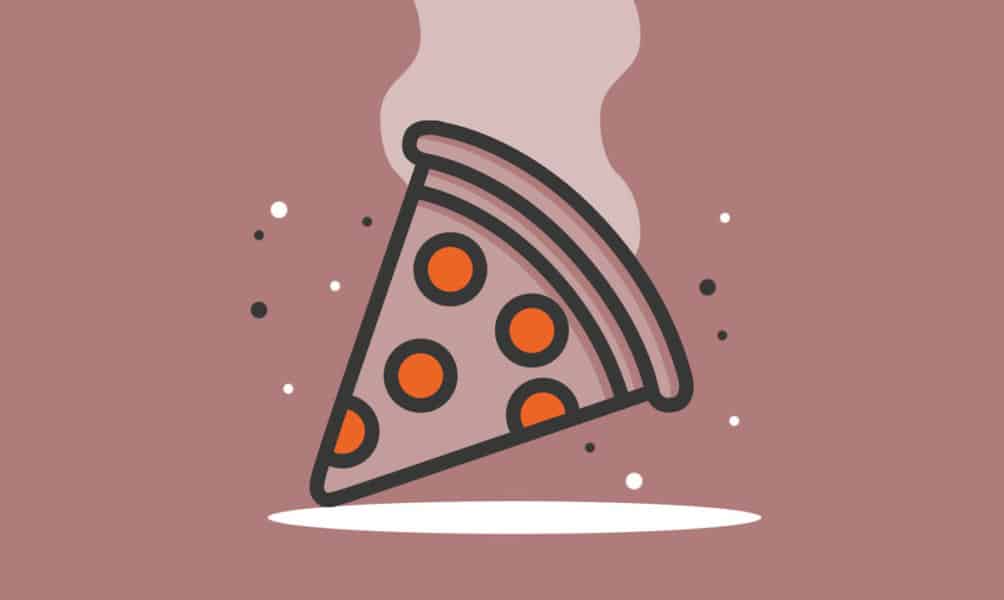
Investment range
$14,550 - $29,100
Revenue potential
$275,000 - $820,000 p.a.
Time to build
1 – 3 months
Profit potential
$41,000 - $125,000 p.a.
Industry trend
Here are the most important factors to think about when you are opening a pizza shop:
- Type — Decide on the kind of pizza you will offer. Consider different niches such as pizzas with specialty ingredients, cultural or regional varieties, gourmet or upscale options, or family and children-focused offers.
- Location — Find a location that’s easily accessible and visible to potential customers. Also, choose a location that aligns your target market with local demographics. For example, if you’re aiming for a family-oriented pizza shop, a location near residential areas with young families might be ideal.
- Permits and licenses — You will need a food service license issued by the city or county health department and a liquor license if you plan to serve beer, wine, or spirits.
- Equipment — Invest in high-quality equipment such as a pizza oven, dough mixer, refrigeration solutions, work tables, cooking tools, and utensils.
- Interior design — Choose a theme or concept that aligns with your brand identity and target audience. Plan a good seating layout and add counters and bar areas to maximize space.
- Delivery — Develop a delivery system with a dedicated food app or partner with food delivery services in the area.
- Staff — Hire professional pizza makers, chefs and helping staff.
- Ingredient sourcing — Find reputable suppliers for fresh ingredients.
- Franchise — Here are some of the best franchises to choose from: Domino’s , Pizza Hut , Papa John’s , and Little Caesars .
- Register your business — A limited liability company (LLC) is the best legal structure for new businesses because it is fast and simple. Form your business immediately using ZenBusiness LLC formation service or hire one of the best LLC services on the market.
- Legal business aspects — Register for taxes, open a business bank account, and get an EIN .
Interactive Checklist at your fingertips—begin your pizza shop today!
You May Also Wonder:
Is a pizza shop a profitable business?
Yes, pizza shops have a higher profit margin on average than other types of restaurants. If you have great pizza and unique flavors, you can stand out from the competition and be successful.
Where was the first pizzeria in the United States?
The first pizzeria in the United States is generally believed to be Lombardi’s, which was opened in New York City in 1905. Lombardi’s was founded by Italian immigrant Gennaro Lombardi, who had previously worked as a baker in Naples, Italy.
What are the most popular pizza toppings in the United States?
Popular pizza toppings in the United States include spicy beef and pork pepperoni, fresh or canned mushrooms, ground meat sausage, diced or sliced white or red onions, fresh sliced or diced green peppers, black or green olives, small pieces of bacon, divisive pineapple, extra mozzarella or other cheeses, and fresh or canned sliced or diced tomatoes.
How do I attract customers to my pizza shop?
To attract customers to your pizza shop, focus on using high-quality ingredients, creating delicious pizzas with unique flavor combinations, and offering a variety of toppings. Provide prompt and efficient service, establish a strong online presence, and offer convenient online ordering and delivery options.
How can I differentiate my pizza shop from competitors in the market?
To differentiate your pizza shop from competitors, develop signature pizzas with distinct flavors and innovative crust options. Provide exceptional customer service, create a compelling brand story, and utilize creative marketing techniques. Consider offering specialized menu items like gourmet appetizers, fresh salads, or unique desserts. Emphasize the use of local and sustainable ingredients to attract customers who value supporting local businesses and sustainable food practices.
Which pizza is the most popular in the USA?
Common favorites include cheese pizza, pepperoni pizza, margherita pizza, BBQ chicken pizza, and supreme pizza with various toppings.
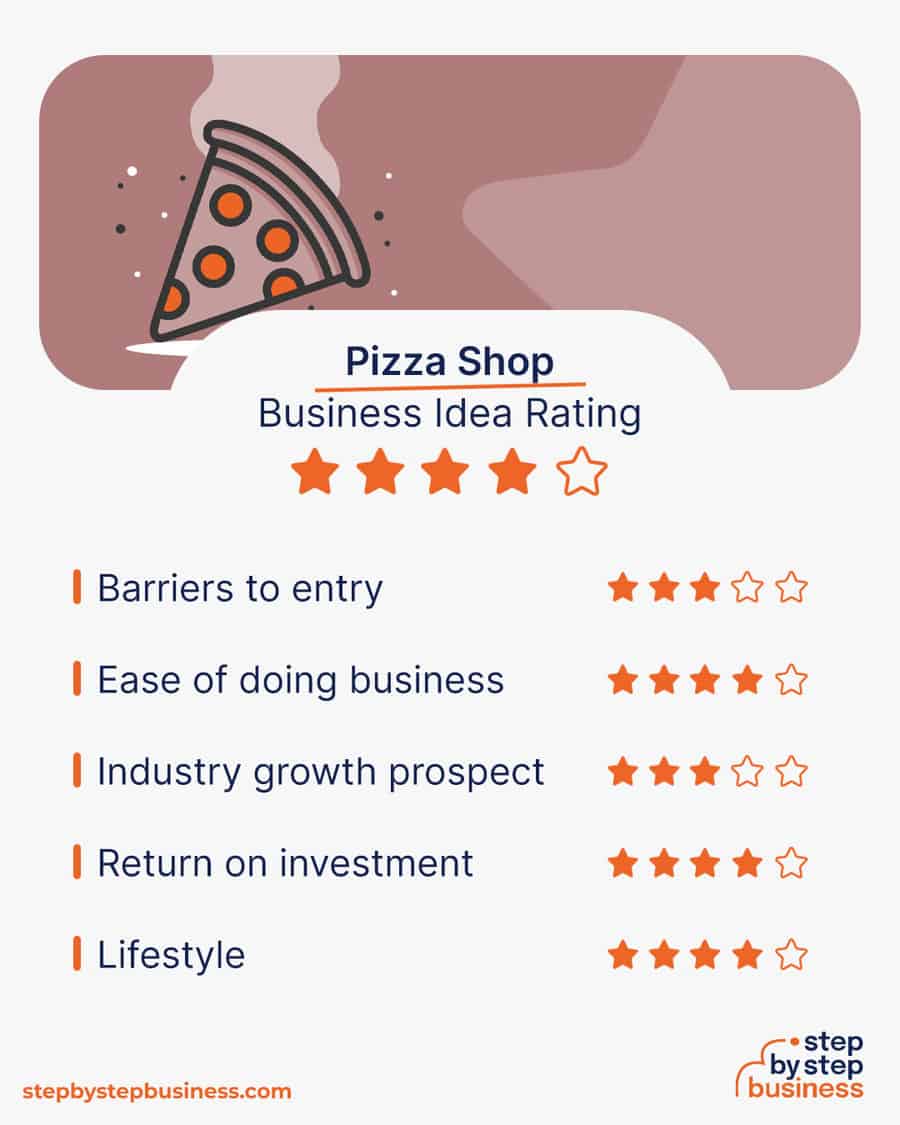
Step 1: Decide if the Business Is Right for You
Pros and cons.
Starting a pizzeria has pros and cons to consider before deciding if it’s right for you.
- Good money — Profit margins are high compared to other restaurant types
- Share your passion — Share your pizza love; spread joy
- Creativity — Pizza offers a world of creative options
- High startup costs — Space and equipment are $$
- Highly saturated market — Every “hood” has a pizza shop or two
Pizza Shop Industry Trends
Industry size and growth.
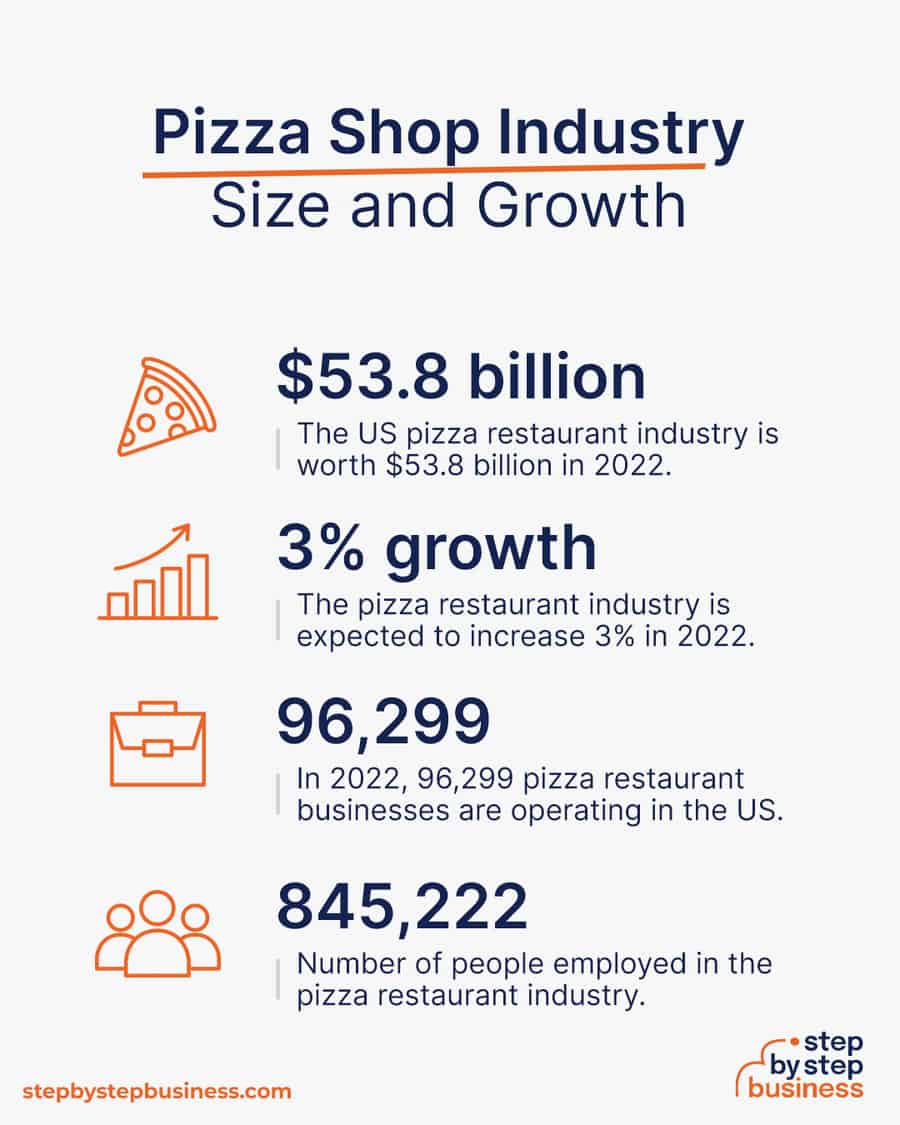
- Industry size and past growth — The US pizza restaurant industry was worth $49.4 billion in 2023, and has declined 2.4% in relation to the previous year.(( https://www.ibisworld.com/industry-statistics/market-size/pizza-restaurants-united-states/ ))
- Growth forecast — The pizza restaurant industry is expected to increase 1.4% in 2024.(( https://www.ibisworld.com/united-states/market-research-reports/pizza-restaurants-industry/ ))
- Number of businesses — There were 73,333 pizza restaurant businesses in the US in 2023.(( https://www.ibisworld.com/industry-statistics/number-of-businesses/pizza-restaurants-united-states/ ))
- Number of people employed — In 2024, the US pizza restaurant industry employs about 574,000 people.(( https://www.ibisworld.com/united-states/market-research-reports/pizza-restaurants-industry/#IndustryStatisticsAndTrends ))
Trends and Challenges
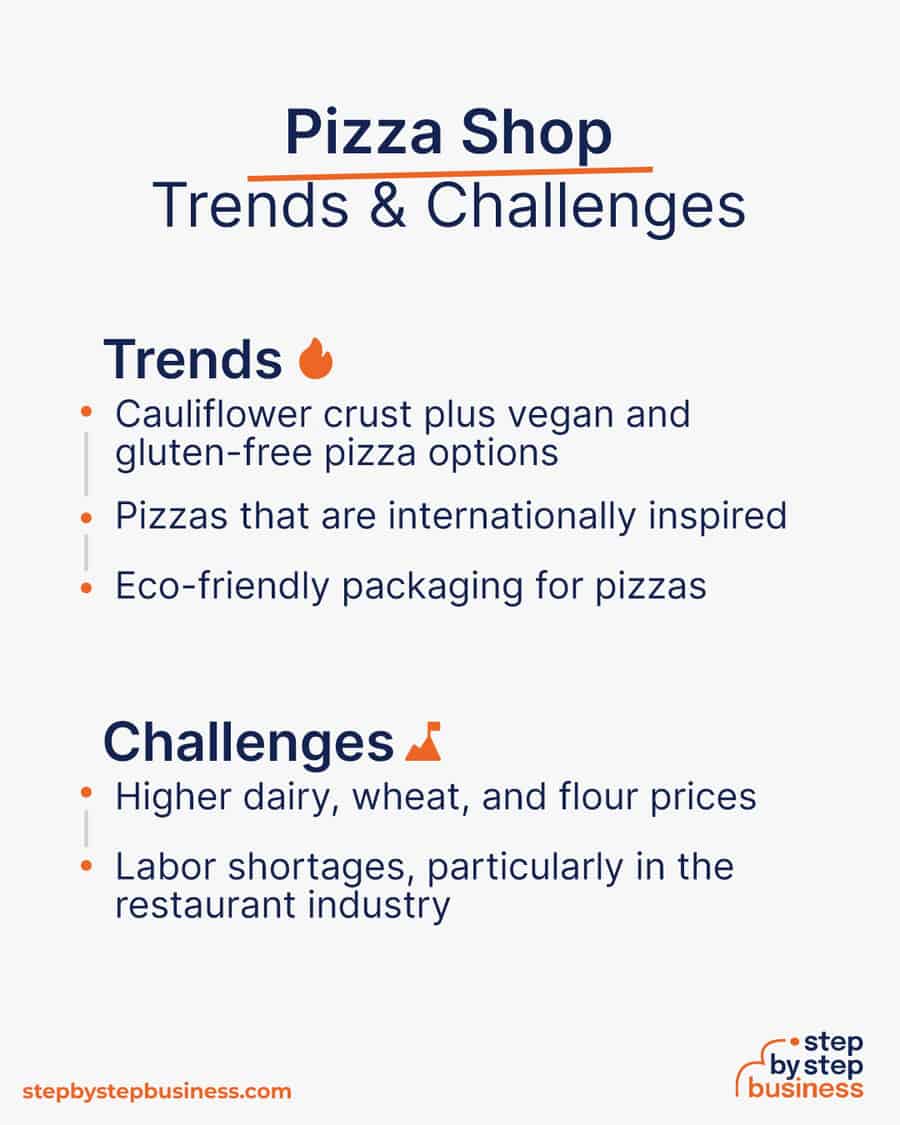
- Cauliflower crust plus vegan and gluten-free pizza options are all the rage.
- Pizzas that are internationally inspired are trending with Gen Zers, including Indian and Southeastern-inspired pizzas.
- Consumers are also seeking eco-friendly packaging for their pizzas, meaning recyclable boxes.
- Higher dairy, wheat, and flour prices are cutting into the profit margins of pizza shops.
- Labor shortages, particularly in the restaurant industry, are making it difficult for pizza shops to effectively operate while short-staffed.
Demand Hotspots
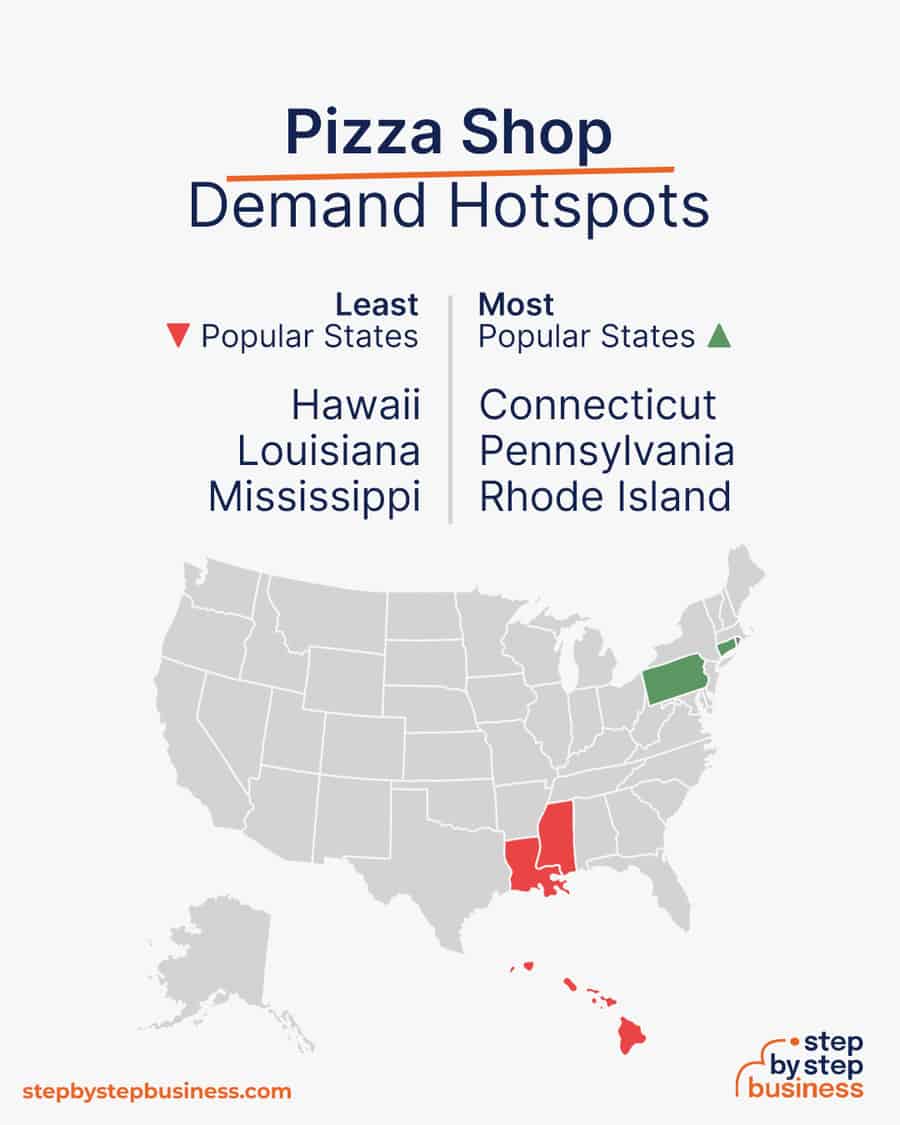
- Most popular states — The most popular states for pizza shops are New Hampshire, Michigan, and Massachusetts.
- Least popular states — The least popular states for pizza shops are Louisiana, South Carolina, and North Carolina.(( https://www.zippia.com/pizza-maker-jobs/best-states/ ))
What Kind of People Work in Pizza Shops?
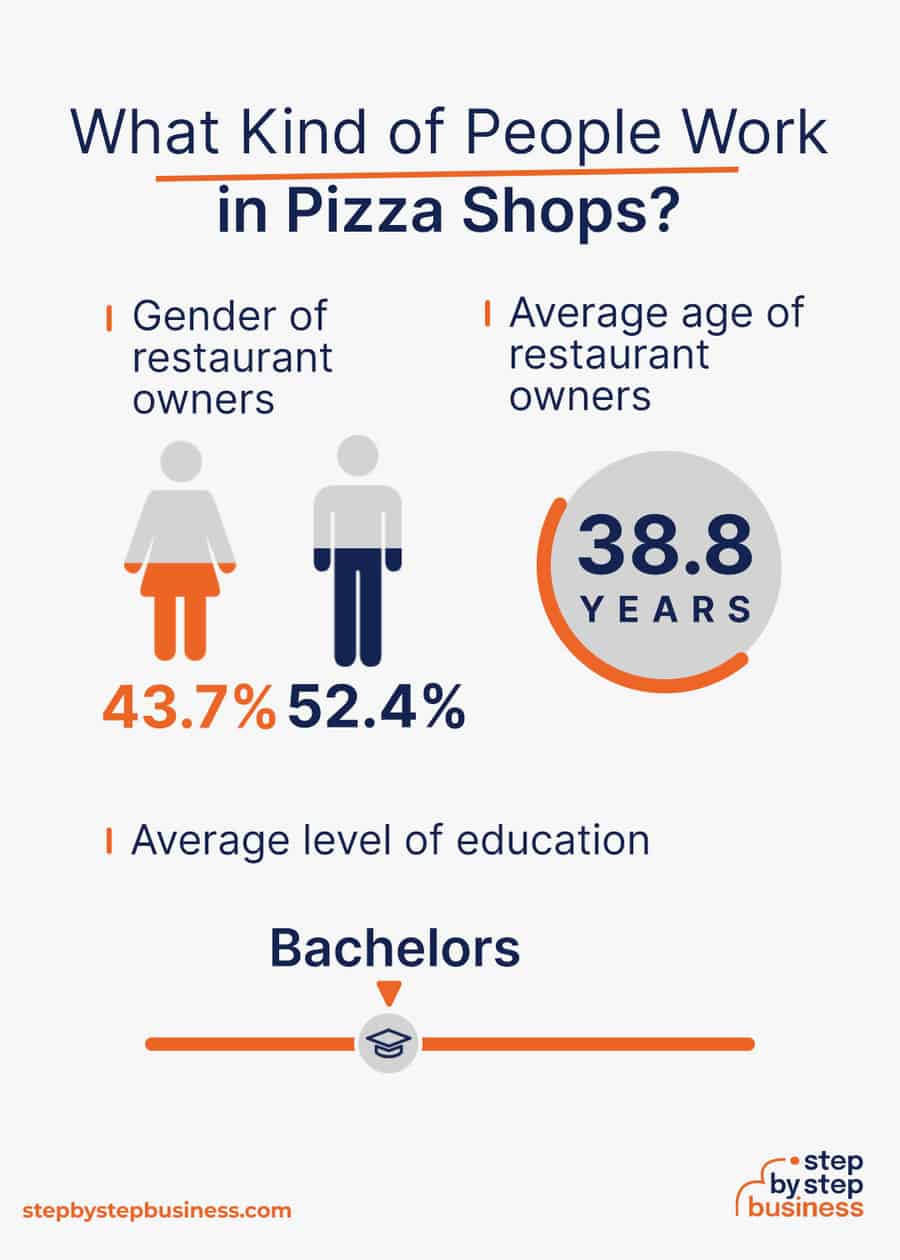
- Gender — 46% of restaurant owners are female, while 54% are male.
- Average level of education — The average restaurant owner has a bachelor’s degree.
- Average age — The average owner of a restaurant in the US is 39.1 years old.(( https://www.zippia.com/restaurant-owner-jobs/demographics/ ))
How Much Does It Cost to Start a Pizza Shop Business?
Startup costs for a pizza shop range from $15,000 to $30,000 or more. Costs include a space rental deposit, space preparation, and kitchen equipment.
You’ll need a handful of items to successfully launch your pizza shop business, including:
- Pizza mixers
- Pizza conveyor oven
- Prep tables
- Tables and chairs
- Refrigerator
| Start-up Costs | Ballpark Range | Average |
|---|---|---|
| Setting up a business name and corporation | $150–$200 | $175 |
| Business licenses and permits | $100–$300 | $200 |
| Insurance | $100–$300 | $200 |
| Business cards and brochures | $200–$300 | $250 |
| Website setup | $1,000–$3,000 | $2,000 |
| Pizza shop space rental | $3,000–$5,000 | $4,000 |
| Space preparation with a counter, tables and chairs | $5,000–$10,000 | $7,500 |
| Kitchen equipment | $5,000–$10,000 | $7,500 |
| Total | $14,550–$29,100 | $21,825 |
How Much Can You Earn From a Pizza Shop Business?
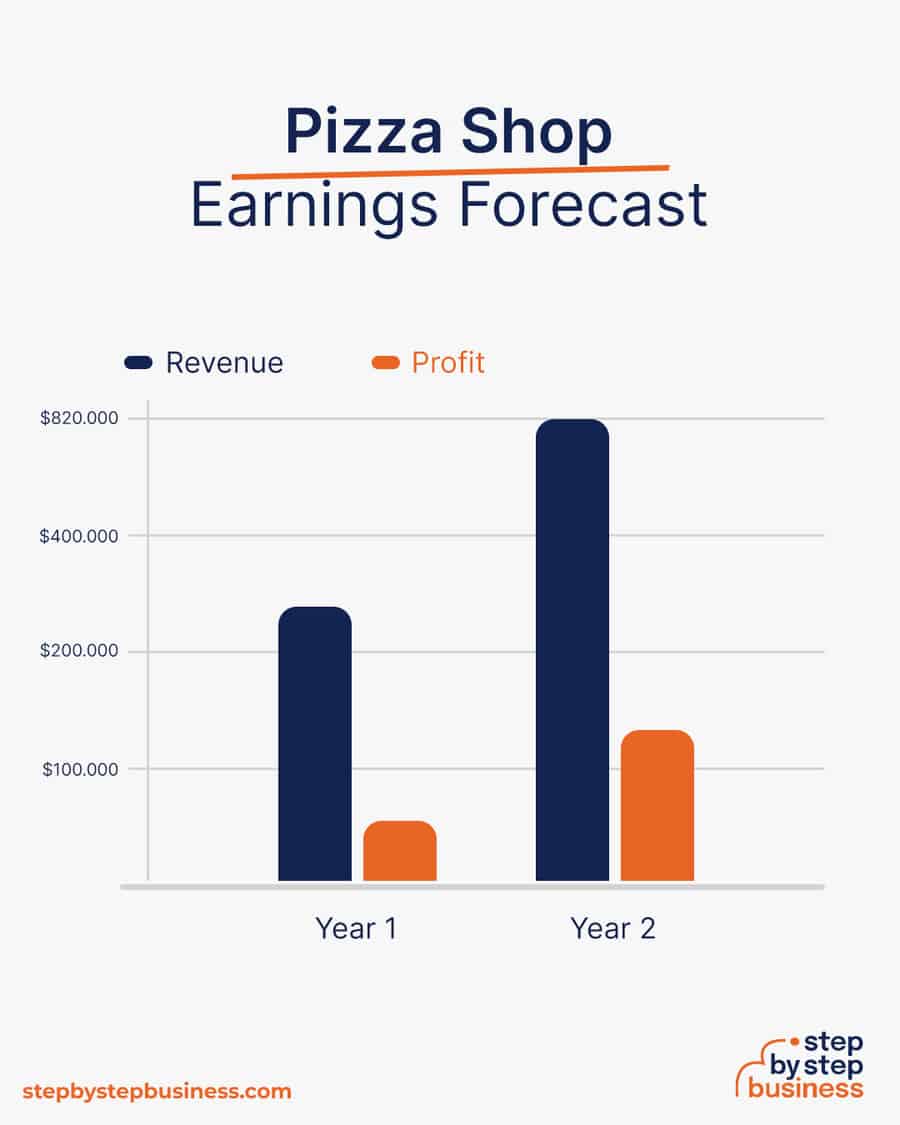
Pizza prices range from $7 for a small cheese pizza to $20 or more for a specialty pizza with toppings. You can also sell beverages, so these calculations will assume that your average sale price will be $15. The average profit margin for pizza shops is 15%.
In your first year or two, you might sell 50 pizzas a day, bringing in nearly $275,000 in annual revenue. This would mean $41,000 in profit, assuming that 15% margin. As your brand gains recognition and you get repeat customers, sales could climb to 150 a day. With an annual revenue of $820,000, you’d make a tidy profit of almost $125,000.
What Barriers to Entry Are There?
There are a few barriers to entry for a pizza shop. Your biggest challenges will be:
- The startup costs of space and equipment
- Drawing customers in a saturated market
Related Business Ideas
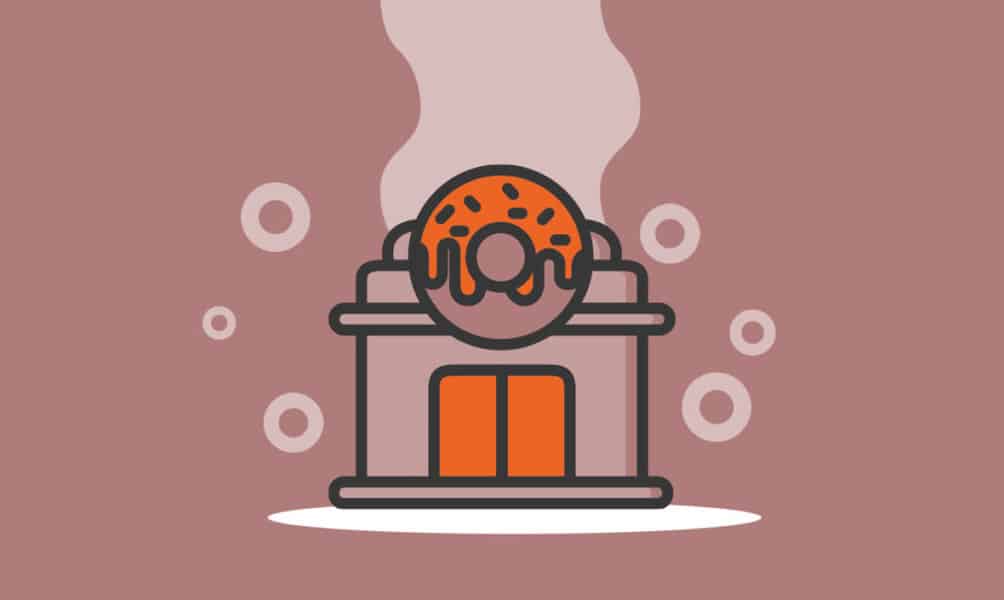
How to Start a Donut Shop
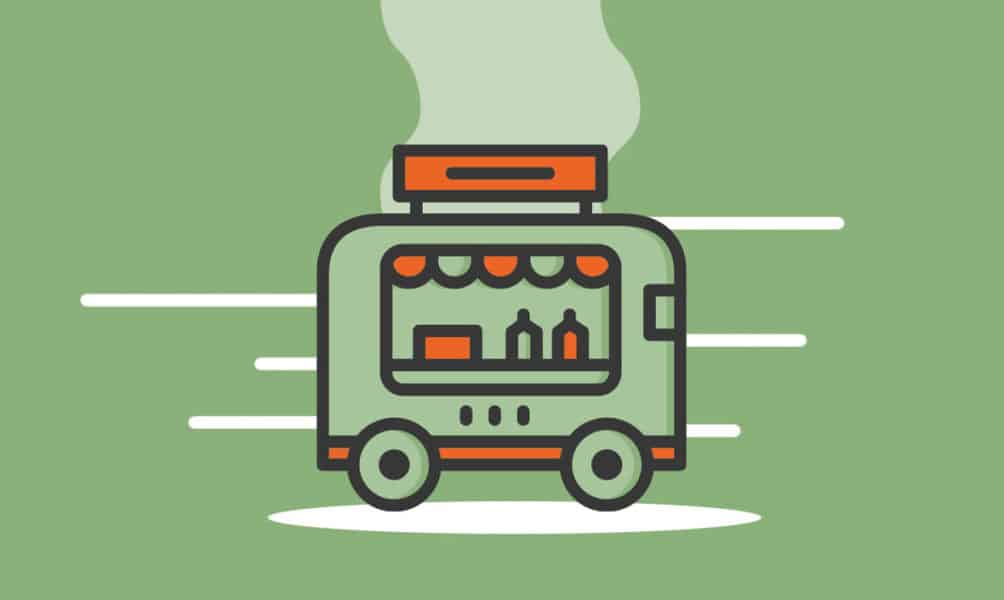
How to Start a Food Truck Business

How to Start a Cookie Business
Step 2: hone your idea.
Now that you know what’s involved in starting a pizza shop, it’s a good idea to hone your concept in preparation to enter a competitive market.
Market research will give you the upper hand, even if you’re already positive that you have a perfect product or service. Conducting market research is important, because it can help you understand your customers better, who your competitors are, and your business landscape.
Why? Identify an Opportunity
Research pizza shops in your area to examine their products, price points, and customer reviews. You’re looking for a market gap to fill. For instance, maybe the local market is missing a gluten-free or vegan pizza shop.
You might consider targeting a niche market by specializing in a certain aspect of your industry, such as Indian-inspired pizzas or Middle Eastern-inspired pizzas.
This could jumpstart your word-of-mouth marketing and attract clients right away.
What? Determine Your Menu
You’ll need to come up with a pizza menu, but you can also offer additional food and beverage items like garlic bread, chicken wings, and alcoholic beverages.
How Much Should You Charge for Pizzas?
You’ll need to check local pizza prices to make sure you’re competitive in your market. Prices will also depend on what it costs to make your pizzas. You should aim for a profit margin after all costs of about 15%.
Once you know your costs, you can use our profit margin calculator to determine your mark-up and final price points. Remember, the prices you use at launch should be subject to change if warranted by the market.
Who? Identify Your Target Market
Your target market will be broad, since almost everyone likes pizza. You should spread out your marketing to include TikTok, Instagram, Facebook, and even LinkedIn.
Where? Choose Your Pizza Shop Location
The location of your pizza shop is a crucial factor that can determine the success or failure of your business. To ensure success, aim to find a spot that can be considered a pizza lover’s paradise. Look for an area with a high volume of foot traffic, where potential customers are constantly passing by.
It’s also beneficial to choose a location near residential areas, as this will make your shop easily accessible and convenient for customers looking for a quick and delicious meal.
You’ll need to rent out a space for your shop. You can find commercial space to rent in your area on sites such as Craigslist , Crexi , and Instant Offices .
When choosing a commercial space, you may want to follow these rules of thumb:
- Central location accessible via public transport
- Ventilated and spacious, with good natural light
- Flexible lease that can be extended as your business grows
- Ready-to-use space with no major renovations or repairs needed
Step 3: Brainstorm a Pizza Shop Name
Here are some ideas for brainstorming your business name:
- Short, unique, and catchy names tend to stand out
- Names that are easy to say and spell tend to do better
- Name should be relevant to your product or service offerings
- Ask around — family, friends, colleagues, social media — for suggestions
- Including keywords, such as “pizza” or “pizza shop,” boosts SEO
- Name should allow for expansion, for example, “Jim’s Pizza Station” over “Jim’s Sicilian Pizza Corner” or “Jim’s Vegan Pizza Bistro”
- A location-based name can help establish a strong connection with your local community and help with the SEO but might hinder future expansion
Discover over 300 unique pizza shop name ideas here . If you want your business name to include specific keywords, you can also use our pizza shop business name generator. Just type in a few keywords, hit Generate, and you’ll have dozens of suggestions at your fingertips.
Once you’ve got a list of potential names, visit the website of the US Patent and Trademark Office to make sure they are available for registration and check the availability of related domain names using our Domain Name Search tool. Using “.com” or “.org” sharply increases credibility, so it’s best to focus on these.
Find a Domain
Powered by GoDaddy.com
Finally, make your choice among the names that pass this screening and go ahead with domain registration and social media account creation. Your business name is one of the key differentiators that sets your business apart. Once you pick your company name and start with the branding, it is hard to change the business name. Therefore, it’s important to carefully consider your choice before you start a business entity.
Step 4: Create a Pizza Shop Business Plan
Here are the key components of a business plan:

- Business overview — Detailed introduction to your pizza shop, including the business name, the type of pizza shop (dine-in, take-out, delivery), location, and the vision behind starting it
- Product and services — Description of the pizza and related products (like beverages, sides, etc.) you’ll offer, plus any additional services such as catering or special event hosting
- Market analysis — Examination of the local demand for pizza, customer demographics, and spending habits in your targeted area to demonstrate viability
- Competitive analysis — Assessment of other pizza providers in the vicinity, highlighting what your shop will do differently or better to attract and retain customers
- Sales and marketing — Strategy for attracting customers to your pizza shop, which may include advertising channels, pricing strategy, promotions, and customer loyalty programs
- Management team — Overview of the key players in your business, their roles, and their experience in the food industry that contributes to the shop’s success
- Operations plan — Outline of the day-to-day running of the shop, including suppliers, equipment, staff, and processes for preparing and selling pizza
- Financial plan — Projection of the startup costs, operating costs, revenue expectations, profit margins, and break-even analysis to ensure financial feasibility
- Appendix — Supplementary section containing any additional documents that support your business plan, such as menus, maps, surveys, or legal documents
If you’ve never created a business plan, it can be an intimidating task. You might consider hiring a business plan specialist to create a top-notch business plan for you.
Step 5: Register Your Business
Registering your business is an absolutely crucial step — it’s the prerequisite to paying taxes, raising capital, opening a bank account, and other guideposts on the road to getting a business up and running.
Plus, registration is exciting because it makes the entire process official. Once it’s complete, you’ll have your own business!
Choose Where to Register Your Company
Your business location is important because it can affect taxes, legal requirements, and revenue. Most people will register their business in the state where they live, but if you’re planning to expand, you might consider looking elsewhere, as some states could offer real advantages when it comes to pizza shops.
If you’re willing to move, you could really maximize your business! Keep in mind that it’s relatively easy to transfer your business to another state.
Choose Your Business Structure
Business entities come in several varieties, each with its pros and cons. The legal structure you choose for your pizza shop will shape your taxes, personal liability, and business registration requirements, so choose wisely.
Here are the main options:

- Sole proprietorship — The most common structure for small businesses makes no legal distinction between company and owner. All income goes to the owner, who’s also liable for any debts, losses, or liabilities incurred by the business. The owner pays taxes on business income on his or her personal tax return.
- General partnership — Similar to a sole proprietorship, but for two or more people. Again, owners keep the profits and are liable for losses. The partners pay taxes on their share of business income on their personal tax returns.
- Limited Liability Company (LLC) — Combines the characteristics of corporations with those of sole proprietorships or partnerships. Again, the owners are not personally liable for debts.
- C Corporation — Under this structure, the business is a distinct legal entity and the owner or owners are not personally liable for its debts. Owners take profits through shareholder dividends, rather than directly. The corporation pays taxes, and owners pay taxes on their dividends, which is sometimes referred to as double taxation.
- S Corporation — This refers to the tax classification of the business but is not a business entity. An S Corp can be either a corporation or an LLC , which just needs to elect to be an S Corp for tax status. In this business structure, income is passed through directly to shareholders, who pay taxes on their share of business income on their personal tax returns.
We recommend that new business owners choose LLC as it offers liability protection and pass-through taxation while being simpler to form than a corporation. You can form an LLC in as little as five minutes using an online LLC formation service. They will check that your business name is available before filing, submit your articles of organization , and answer any questions you might have.
Form Your LLC
Choose Your State
We recommend ZenBusiness as the Best LLC Service for 2024

Step 6: Register for Taxes
The final step before you’re able to pay taxes is getting an Employer Identification Number or EIN. You can file for your EIN online, by mail, or by fax. Visit the IRS website to learn more. Keep in mind, if you’ve chosen to be a sole proprietorship you can simply use your social security number as your EIN.
Once you have your EIN, you’ll need to choose your tax year. Financially speaking, your business will operate in a calendar year (January–December) or a fiscal year, a 12-month period that can start in any month. This will determine your tax cycle, while your business structure will determine which taxes you’ll pay.
The IRS website also offers a tax-payers checklist , and taxes can be filed online.
It is important to consult an accountant or other professional to help you with your taxes to ensure you’re completing them correctly.
Step 7: Fund Your Business
Securing financing is your next step and there are plenty of ways to raise capital:

- Bank loans — This is the most common method but getting approved requires a rock-solid business plan and strong credit history.
- SBA-guaranteed loans — The Small Business Administration can act as a guarantor, helping gain that elusive bank approval via an SBA-guaranteed loan .
- Government grants — A handful of financial assistance programs help fund entrepreneurs. Visit Grants.gov to learn which might work for you.
- Friends and family — Reach out to friends and family to provide a business loan or investment in your concept. It’s a good idea to have legal advice when doing so because SEC regulations apply.
- Crowdfunding — Websites like Kickstarter and Indiegogo offer an increasingly popular low-risk option, in which donors fund your vision. Entrepreneurial crowdfunding sites like Fundable and WeFunder enable multiple investors to fund your business.
- Personal — Self-fund your business via your savings or the sale of property or other assets.
Bank and SBA loans are probably the best options, other than friends and family, for funding a pizza shop business. You might also try crowdfunding if you have an innovative concept.
Step 8: Apply for Pizza Shop Business Licenses and Permits
Starting a pizza shop business requires obtaining a number of licenses and permits from local, state, and federal governments.
A pizza shop may need the following, depending on the requirements in your area:
- Foodservice license
- Food handler’s permit
- Building health permit
- Liquor license
Federal regulations, licenses, and permits associated with starting your business include doing business as (DBA), health licenses and permits from the Occupational Safety and Health Administration ( OSHA ), trademarks, copyrights, patents, and other intellectual properties, as well as industry-specific licenses and permits.
You may also need state-level and local county or city-based licenses and permits. The license requirements and how to obtain them vary, so check the websites of your state, city, and county governments or contact the appropriate person to learn more.
You could also check this SBA guide for your state’s requirements, but we recommend using MyCorporation’s Business License Compliance Package . They will research the exact forms you need for your business and state and provide them to ensure you’re fully compliant.
This is not a step to be taken lightly, as failing to comply with legal requirements can result in hefty penalties.
If you feel overwhelmed by this step or don’t know how to begin, it might be a good idea to hire a professional to help you check all the legal boxes.
Step 9: Open a Business Bank Account
Before you start making money, you’ll need a place to keep it, and that requires opening a bank account .
Keeping your business finances separate from your personal account makes it easy to file taxes and track your company’s income, so it’s worth doing even if you’re running your pizza shop business as a sole proprietorship. Opening a business bank account is quite simple, and similar to opening a personal one. Most major banks offer accounts tailored for businesses — just inquire at your preferred bank to learn about their rates and features.
Banks vary in terms of offerings, so it’s a good idea to examine your options and select the best plan for you. Once you choose your bank, bring in your EIN (or Social Security Number if you decide on a sole proprietorship), articles of incorporation, and other legal documents and open your new account.
Step 10: Get Business Insurance
Business insurance is an area that often gets overlooked yet it can be vital to your success as an entrepreneur. Insurance protects you from unexpected events that can have a devastating impact on your business.
Here are some types of insurance to consider:

- General liability — The most comprehensive type of insurance, acting as a catch-all for many business elements that require coverage. If you get just one kind of insurance, this is it. It even protects against bodily injury and property damage.
- Business property — Provides coverage for your equipment and supplies.
- Equipment breakdown insurance — Covers the cost of replacing or repairing equipment that has broken due to mechanical issues.
- Worker’s compensation — Provides compensation to employees injured on the job.
- Property — Covers your physical space, whether it is a cart, storefront, or office.
- Commercial auto — Protection for your company-owned vehicle.
- Professional liability — Protects against claims from a client who says they suffered a loss due to an error or omission in your work.
- Business owner’s policy (BOP) — This is an insurance plan that acts as an all-in-one insurance policy, a combination of the above insurance types.
Step 11: Prepare to Launch
As opening day nears, prepare for launch by reviewing and improving some key elements of your business.
Essential Software and Tools
Being an entrepreneur often means wearing many hats, from marketing to sales to accounting, which can be overwhelming. Fortunately, many websites and digital tools are available to help simplify many business tasks.
You may want to use industry-specific software, such as Restaurant 365 , lightspeed , or toast , to manage your inventory, orders, staff, and payments.
- Popular web-based accounting programs for smaller businesses include Quickbooks , FreshBooks , and Xero .
- If you’re unfamiliar with basic accounting, you may want to hire a professional, especially as you begin. The consequences of filing incorrect tax documents can be harsh, so accuracy is crucial.
Develop Your Website
Website development is crucial because your site is your online presence and needs to convince prospective clients of your expertise and professionalism.
You can create your own website using website builders . This route is very affordable, but figuring out how to build a website can be time-consuming. If you lack tech savvy, you can hire a web designer or developer to create a custom website for your business.
However, people are unlikely to find your website unless you follow Search Engine Optimization ( SEO ) practices. These are steps that help pages rank higher in the results of top search engines like Google.
Here are some powerful marketing strategies for your future business:
- Targeted social media advertising — Utilize Facebook, Instagram, and Twitter to target specific community groups, engage younger audiences, and leverage trending topics.
- Optimized website and SEO — Implement best SEO practices to enhance search rankings and improve conversion rates.
- Local SEO — Regularly update Google My Business and Yelp profiles to increase local visibility and encourage positive reviews.
- Mobile app development — Offer a mobile app for easy ordering and to manage promotions and loyalty rewards.
- Content marketing — Distribute engaging newsletters and blog posts about pizza, and run interactive competitions to boost customer engagement.
- Influencer and community partnerships — Collaborate with food influencers and local businesses for broader reach and community integration.
- Experiential marketing — Host pizza workshops, tasting events, and themed parties to enhance in-store experiences.
- Sustainability practices — Promote eco-friendly initiatives to attract environmentally conscious consumers.
- Customer loyalty programs — Develop loyalty and VIP programs to reward frequent customers and gather valuable feedback.
- Dynamic promotions — Execute flash sales and happy hours to increase store visits and use paid ads to target potential customers actively searching for pizza.
- Visual merchandising — Enhance physical and digital spaces with compelling visuals to attract and retain customers.
- Community engagement — Support local artists and engage in community events to strengthen local ties and visibility.
Focus on USPs
Unique selling propositions, or USPs, are the characteristics of a product or service that set it apart from the competition. Today’s customers are inundated with buying options, so you’ll have a real advantage if they can quickly grasp how your pizza shop meets their needs or wishes. It’s wise to do all you can to ensure your USPs stand out on your website and in your marketing and promotional materials, stimulating buyer desire.
Global pizza chain Domino’s is renowned for its USP: “Hot pizza in 30 minutes or less, guaranteed.” Signature USPs for your pizza shop business could be:
- The best vegan pizza shop in town!
- Fresh, fantastic pizza made with only local ingredients
- From curry to tacos — our pizzas satisfy global tastes

You may not like to network or use personal connections for business gain but your personal and professional networks likely offer considerable untapped business potential. Maybe that Facebook friend you met in college is now running a pizza shop business, or a LinkedIn contact of yours is connected to dozens of potential clients. Maybe your cousin or neighbor has been working in pizza for years and can offer invaluable insight and industry connections.
The possibilities are endless, so it’s a good idea to review your personal and professional networks and reach out to those with possible links to or interest in pizza shops. You’ll probably generate new customers or find companies with which you could establish a partnership.
Step 12: Build Your Team
If you’re starting out small from a home office, you may not need any employees. But as your business grows, you will likely need workers to fill various roles. Potential positions for a pizza shop business include:
- Wait staff — taking orders, serving customers
- Pizza chefs — preparing pizzas and other food items
- Delivery drivers — delivering pizzas
- General manager — ordering, scheduling, accounting
- Marketing lead — SEO strategies, social media
At some point, you may need to hire all of these positions or simply a few, depending on the size and needs of your business. You might also hire multiple workers for a single role or a single worker for multiple roles, again depending on need.
Free-of-charge methods to recruit employees include posting ads on popular platforms such as LinkedIn, Facebook, or Jobs.com. You might also consider a premium recruitment option, such as advertising on Indeed , Glassdoor , or ZipRecruiter . Further, if you have the resources, you could consider hiring a recruitment agency to help you find talent.
Step 13: Run a Pizza Shop — Start Making Money!
Are you ready to share pizza joy with your community? If you can make great pizza, you’ll be pleasing many palates and joining a growing $50 billion market while making good money and having fun whipping up tasty creations. You can become the go-to pizza shop in your area, and eventually expand into a chain of pizza shops.
You’ve learned what you need to know about pizza entrepreneurship, so now it’s time to get tossing and launch your successful pizza shop!
Leave a Reply Cancel reply
Your email address will not be published. Required fields are marked *
Save my name, email, and website in this browser for the next time I comment.
- Decide if the Business Is Right for You
- Hone Your Idea
- Brainstorm a Pizza Shop Name
- Create a Pizza Shop Business Plan
- Register Your Business
- Register for Taxes
- Fund Your Business
- Apply for Pizza Shop Business Licenses and Permits
- Open a Business Bank Account
- Get Business Insurance
- Prepare to Launch
- Build Your Team
- Run a Pizza Shop — Start Making Money!
Subscribe to Our Newsletter
Featured resources.
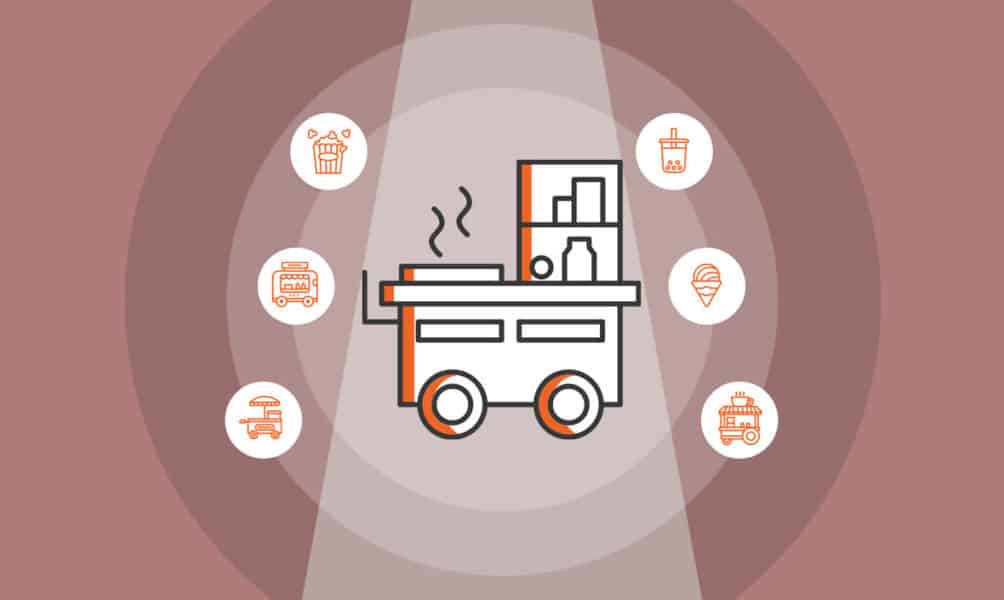
16 Street Food Business Ideas
Carolyn Young
Published on July 28, 2022
Hot dogs, pizza, snow cones and bubble tea are among Americans’ favorite street foods, which are quicker and more affordable than restaurantfo ...
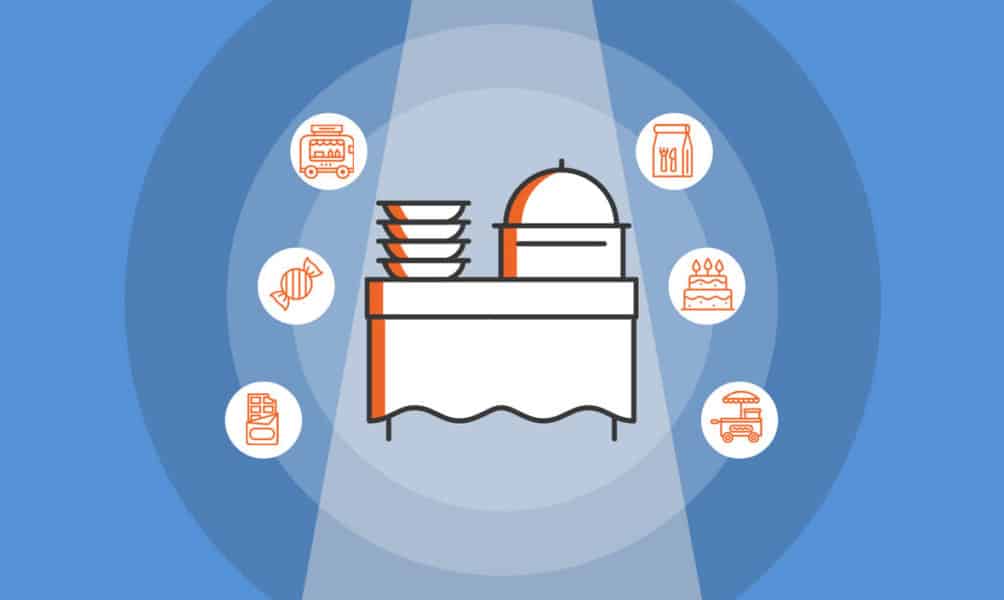
14 Catering Business Ideas
Esther Strauss
Published on July 21, 2022
Everybody needs to eat, so demand for food — especially good food — will never go away. This helps explain why the food industrycontinue ...
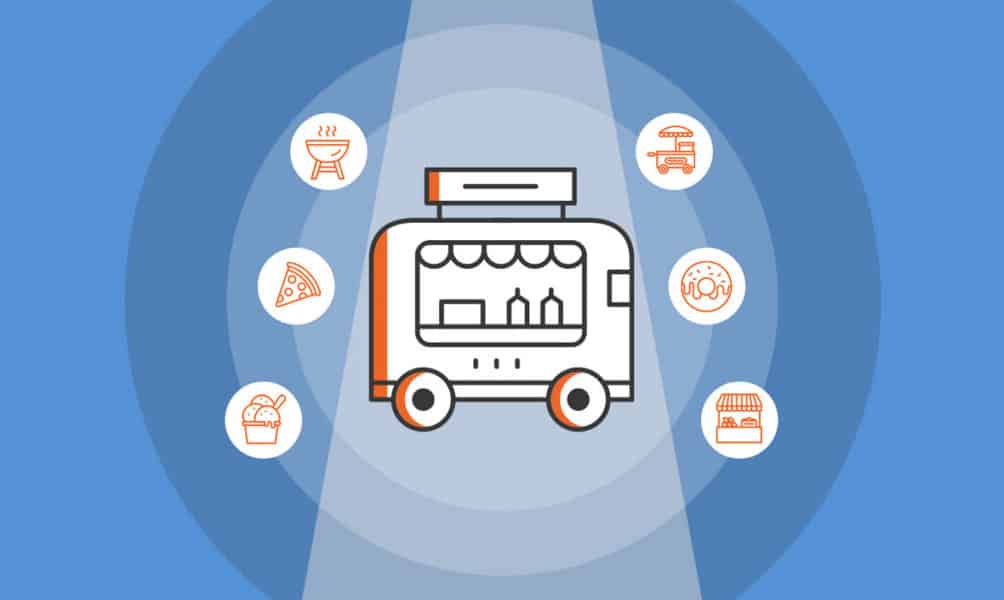
16 Food Truck Business Ideas
Natalie Fell
Published on June 8, 2022
Food trucks have exploded in popularity in recent years and offer a unique, potentially lucrative alternative to brick-and-mortar restaurants. Foodt ...
No thanks, I don't want to stay up to date on industry trends and news.
Sell Food Online
Gain more customers.
- Join Webinar
- Success stories
- Testimonials
Featured articles
- How to Set Up Online Ordering System
- How to Sell Food Online
- How to Create a Restaurant Website
- How to Create a Food Delivery App
- How to Make a Restaurant Menu
- Best Restaurant Online Ordering Systems
- Best Restaurant Website Builders
- Partnership
- Affiliate program
- Reseller program
How to Start a Pizza Shop (15 Steps & Checklist)
- Updated on 15 December 2023
Agata Kubiak - Padkowska
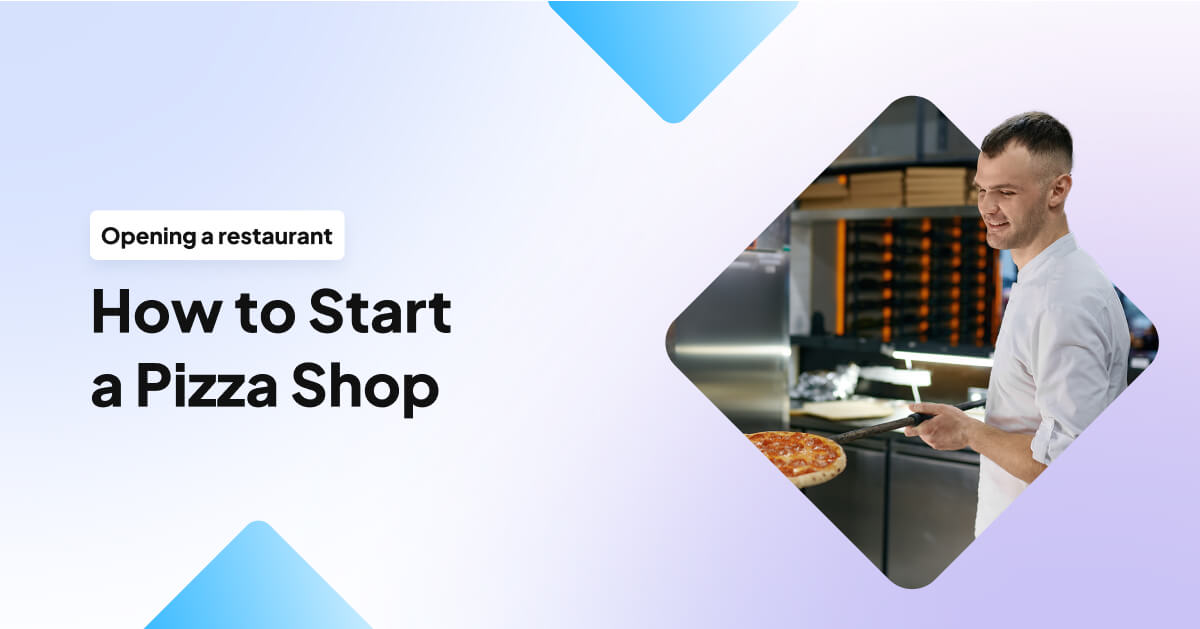
People love to eat pizza, and its popularity continues to grow. It’s one of the most popular types of food that can meet different tastes and consumer preferences. In this guide, we will have a look at how to start a pizza shop. Let’s explore the details in greater depth!
What is a pizza shop?
According to Merriam-Webster , a pizza shop, also known as a pizzeria, is a restaurant or take-out place that sells pizza. It is a place where customers can order and enjoy various types of pizzas, either for dine-in, takeout, or delivery.
The pizza industry exhibits a significant level of fragmentation, characterized by a multitude of independent pizzerias, regional chains, and global pizza chains vying for market share. This fragmentation creates favorable circumstances for new pizza shops to enter the market and carve out their own distinct niche.
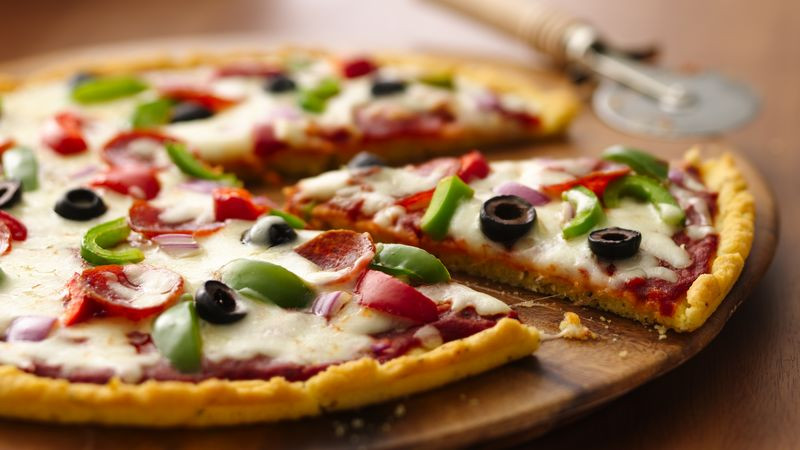
Below, you will find all the steps on how to open a pizza shop.
Step 1. Develop Your Pizza Recipes
A starting point is developing your pizza cooking instructions. Be open to experimenting with different recipe variations and adding different ingredients to find your niche in the market. You don’t have to prepare your pizzeria’s menu right away, you’ll get to that later, but testing equal recipes will help you decide what will be your pizzeria’s style and what your brand will be. Remember to make notes about each step of preparing your pizza so that you can recreate it in the future.
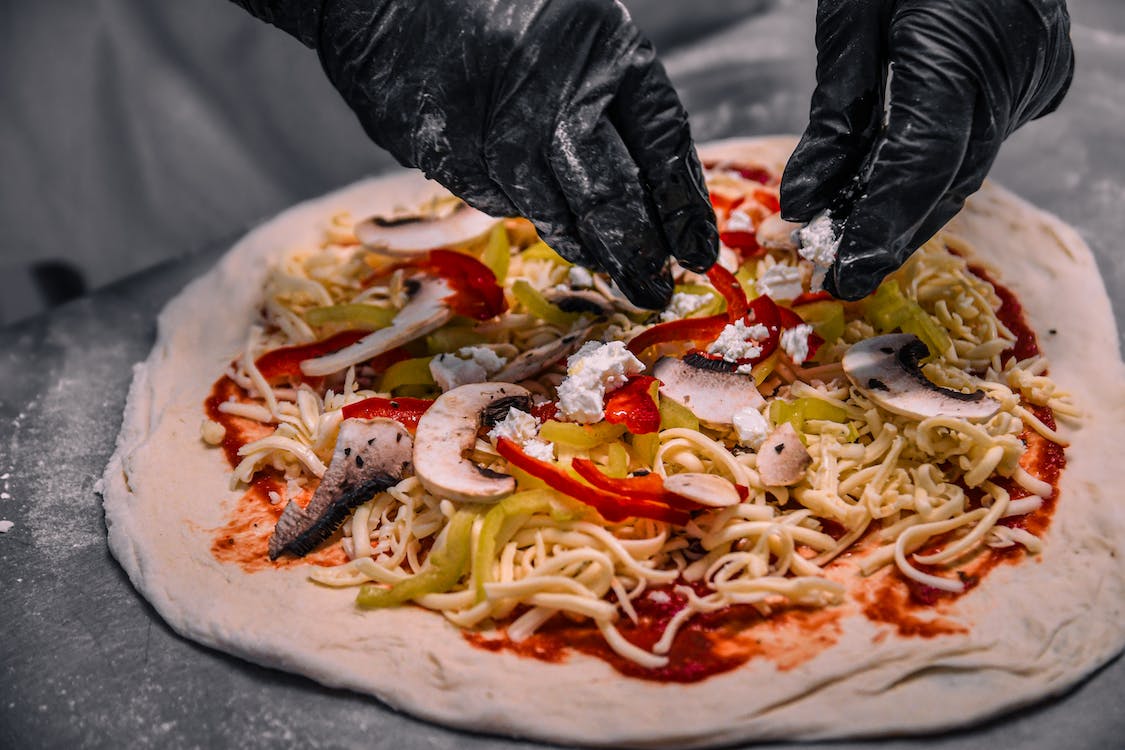
Step 2. Select a style for your pizza shop
To open a pizza shop, think about different pizza business ideas. There are many pizza shop concepts to choose from, including, among others:
- Traditional Full-Service Pizzeria offers different pizza options with dine-in, takeout, and delivery services.
- Fast Casual Pizzeria : it has the quality of a traditional pizza shop and the speed of fast food restaurant
- Gourmet or Artisan Pizzeria : specializes in crafting exceptional pizzas using premium ingredients, with a focus on delivering a unique and elevated dining experience
- Slice Shop is a place specializing in selling pizza by the slice. Usually, there is no or limited seating, and customers buy a pizza slice to go
- Food Truck Pizzeria: Mobile pizza trucks provide on-the-go pizzas, bringing the convenience of delicious pizza to diverse locations.
- Virtual or Ghost Kitchen Pizzeria : don’t have dine-in space; they offer delivery and/or takeout only
- Take-and-Bake Pizzeria: offer pre-made pizzas with recipes on how to bake them. Customers buy pizzas, take home and bake them themselves
- Pizza Buffet : offers unlimited pizza choices. Customers pay a set price and have the freedom to select from a wide range of pizza options alongside other menu items, creating a generous and customizable dining experience.
- Delivery pizza shop: this is a specialized type of pizzeria that focuses on preparing and delivering pizzas directly to customers’ preferred locations.
Apart from the pizza shop concept, you need to come up with a few pizza names and your service options. You can choose one of the following or a combination of them:

Step 3. Develop a comprehensive business plan
Opening any business, including starting a pizza shop, requires writing a solid restaurant business plan . To build your own pizza place, conduct market research, decide who your target customers will be, and describe your pizza concept and how you will differentiate your pizza shop from competitors. You also need to decide if you are opening an independent pizza shop or opting for a franchise. Moreover, you have to include financial analysis, which will be a helpful tool for your while looking for potential investors or applying for a business loan.
Your pizza shop business plan needs to include the following elements:
- Executive Summary.
- Restaurant description.
- Market Analysis, Location Analysis.
- Investment plan (Cost Analysis, Financial Analysis).
- Financial Projections.
- Team (Employees, Founders).
- Marketing Plan.
- Company description of the vision for further development of the restaurant.
Check out our comprehensive guide on how to write a restaurant business plan .
Step 4. Determine an ideal pizzeria location
Choosing the pizza shop location is an essential factor in determining your pizza profit margin . Take into consideration the following aspects while starting a pizza business:
- What is the foot traffic in the area?
- Is a place visible to the customers?
- What is the accessibility of your pizzeria? Can it be easily accessible for both passers-by and vehicles? Are there any parking spaces available?
- Are there any pizza shops in the area? Is there a competition in the place?
- What are the customers’ eating habits in the area? Will your pizza shop be an attractive option for them?

Step 5. Complete the formalities
Having created your pizza shop business plan and the location chosen, focus on the formalities. You need to register your pizza shop business and choose a business entity. The business forms include the following:
- Sole Proprietorship
- Limited Liability Company (LLC),
- Corporation
- Cooperative
- Nonprofit Organization
Remember that your choice of business structure will have an influence on how you file and pay taxes.
In order to register your business, you will need to obtain Employer Identification Number (EIN). You apply for it through the IRS Internal Revenue Service (IRS) . This EIN will serve various purposes, including tax obligations, banking transactions, and credit-related matters. You also need to open a business bank account to keep your business finances separate from your private finances.
Remember the licenses and permits necessary to start a pizza business. You will need, among others, the following:
- a food service license
- a food handler’s permit
- a building health permit
- a business license
As different regulations depend on a state or even a city, make sure to comply with your local law regulations to start a pizza shop.
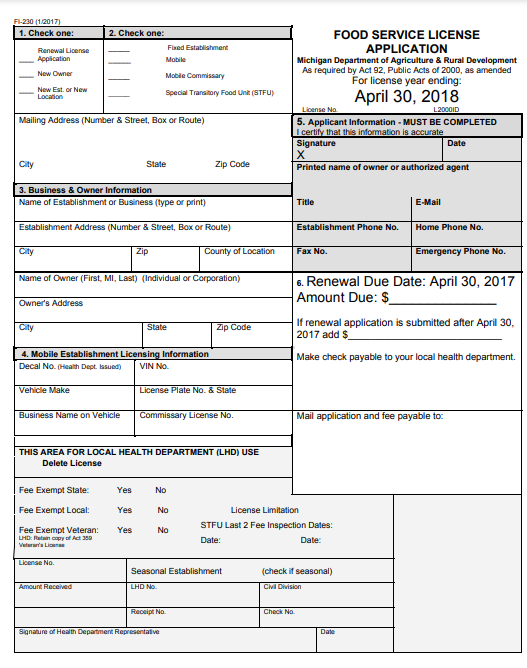
Step 6. Secure funding for your pizza shop business
To start running your pizza shop, you will need to secure funding for it. Firstly, you need to realize what your startup costs will be and if you have any own financial resources. If you don’t, there are different ways of financing your business, for example:
- Applying for a small business loan
- A business line of credit
- Looking for private investors
Here you can check our article on how to open a restaurant with no money .
The cost of starting a pizza shop depends on many factors, including
- Pizza shop type
- Pizza you plan to sell (food costs)
- Opening a new independent pizza shop or a franchise
- Pizza shop location
- The cost of kitchen equipment
- The size of the establishment
- The cost of licenses and permits
- Marketing costs
- Labor costs
The initial investment for opening a pizza shop can range from $50,000 to $1,000,000 or even more.
Remember that there are different types of costs:
- One-time costs like
- renovations
- kitchen equipment and appliances
- furniture and fixtures (tables, chairs, cash registers, etc.)
- licenses and permits
- initial inventory (ingredients, beverages, pizza boxes)
- marketing costs (creating a pizza shop logo, branding materials, menus, and website)
- Recurring costs like
- utilities,
- monthly rent or lease,
- food costs,
- Business insurance,
- employee salaries,
- marketing expenses
Step 7. Design your pizza business menu
The next step is designing a pizzeria menu that suits your pizzeria’s concept and target audience. Consider the following aspects:
- What will be the character of your pizzeria?
- What kind of pizza will you offer? Will it be Neapolitan Pizza, New York Style Pizza, Chicago Deep-Dish Pizza, or another popular pizza type?
- Will you offer any starters in your pizza shop? If yes, what kind of starters will you offer?
- How about other main dishes? Will there be any, or will your focus be on pizza only?
- How about desserts? If you are thinking about opening a traditional pizza shop, you can consider offering classical Italian desserts like
- Panna Cotta,
Check out our detailed guide on how to make a menu .
While opening a pizzeria and designing your pizza place menu, consider making a QR code menu . Using a QR code menu builder, you can generate QR codes and place them on tables in your restaurant. Thanks to that, potential customers can view your pizza shop menu and place an order by simply scanning the QR codes with their smartphones.

Step 8. Create a marketing plan
To start running a pizza restaurant, create a restaurant marketing plan . Think about who your target customers are, how they spend their free time and where you could promote your brand to reach them. How about the needs and expectations of your online ordering customers? Include marketing strategies regarding your brand’s online presence to attract more pizzeria customers. Here you can check the best pizza marketing ideas .

Step 9. Acquire essential equipment for your pizza place
In order to start serving pizza to your customers, you need to buy kitchen equipment. Have a look at our checklist below regarding the kitchen equipment you will probably need.
- Dough Mixers
- Dough Sheeter
- Prep Tables
- Refrigeration Units
- Slicers and Knives
- Prep Utensils
- Ingredient Storage Containers
- Cleaning Equipment
When choosing kitchen equipment for your pizzeria, it is vital to take into account the unique requirements of your menu and production processes in your pizza business.
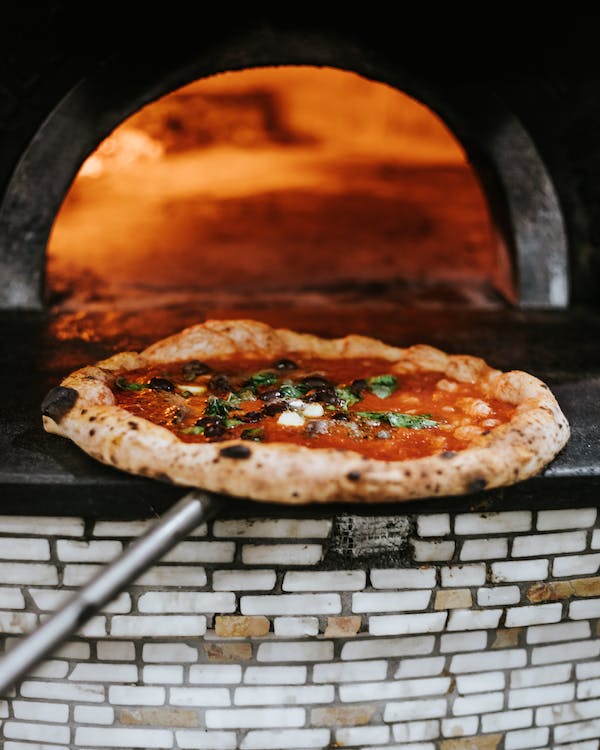
Step 10. Identify a reliable supplier
Finding a reliable supplier of fresh ingredients is an important aspect of a pizzeria business. As a pizzeria owner, take into account the following aspects while looking for a potential supplier:
- The option of bulk purchasing
- Quantity discounts
- Payment methods
- Payment terms
You can also read reviews about different food suppliers as well as talk with other pizza businesses’ owners.
Step 11. Design your pizza shop layout
Before opening a pizzeria, take some time to design the interior. Consider the character of your premises when choosing furniture (tables, chairs), decorations, and lighting. Ask yourself what feelings you want to evoke in your customers and what the atmosphere should be like.
Focus on crafting an attractive and cohesive design for your pizzeria, ensuring a pleasant atmosphere for customers.
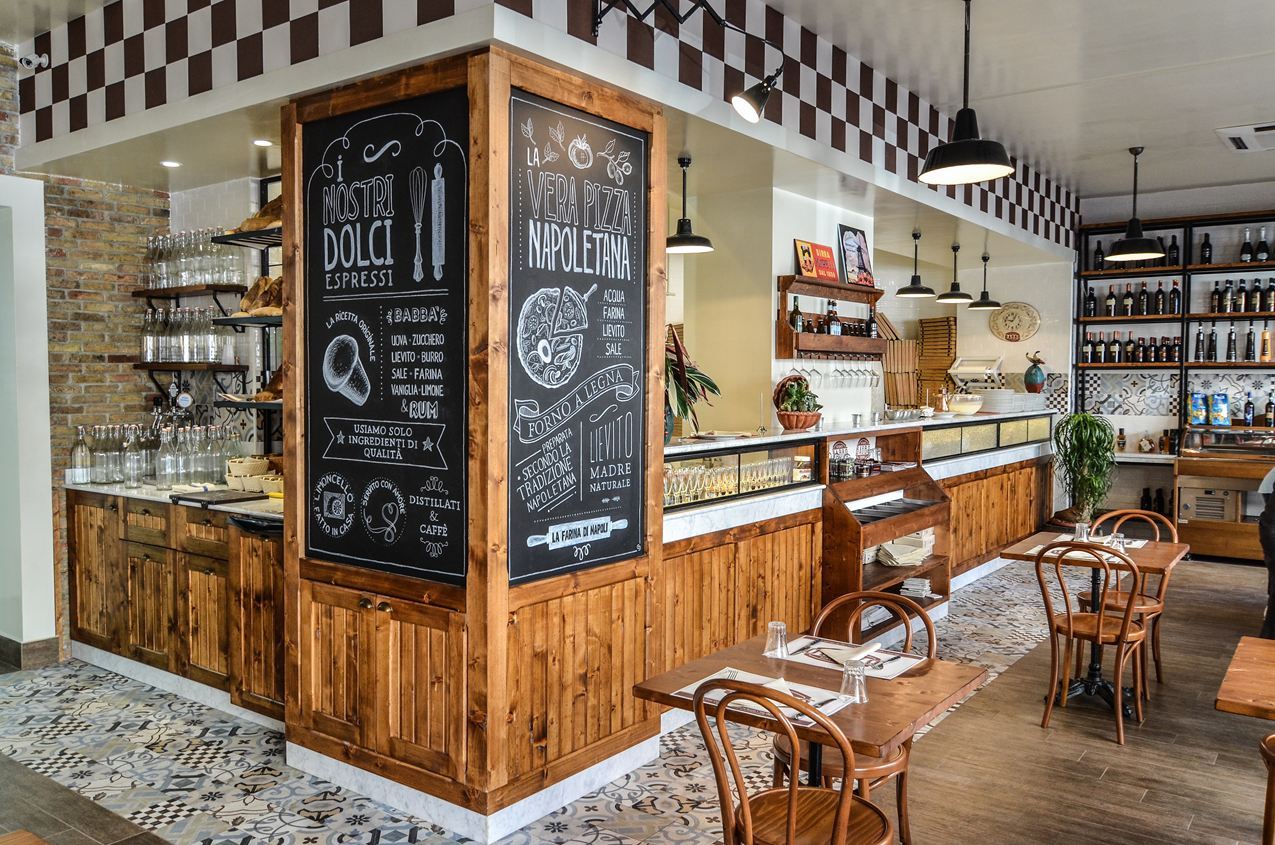
Step 12. Recruit and hire employees
Remember that people are vital to the success of any restaurant. Look for competent and experienced pizzaiolo to offer high-quality pizza in your restaurant. If you plan to offer waiter services, make sure to hire a wait staff who is open and friendly. In the case of offering pizza delivery, don’t forget about recruiting delivery drivers. Remember to provide your employees with the appropriate training to offer the highest quality of service on your premises.

Step 13. Open your pizza shop
Once you finish all the steps we described above, it’s time to open your pizza place. You can begin by hosting a soft opening to verify if your restaurant’s everyday operations run smoothly. Invite your friends and family to ask them about their opinion on the food and service you provide. Thanks to that, you will be able to implement any adjustments in your pizza business.
Later on, you will be ready to host a grand opening. Make sure that people know about it. Think about offering special discounts or coupons. You can also give free samples of pizza to your customers. Make noise about this event by promoting it on social media as well as in traditional media channels like radio, tv, and/or local newspapers to attract more customers.
Step 14. Create your pizza place website
While opening a pizza place, it is crucial to realize the importance of allowing customers to explore your pizza shop’s offerings online. Therefore, it is highly recommended to create a restaurant website.
You can use a tool like a restaurant website builder to achieve this. You choose a pizza shop template, add your menu items accompanied by enticing photos, and personalize your website to be consistent with your brand. This process is quick and will significantly enhance your brand recognition among potential customers.
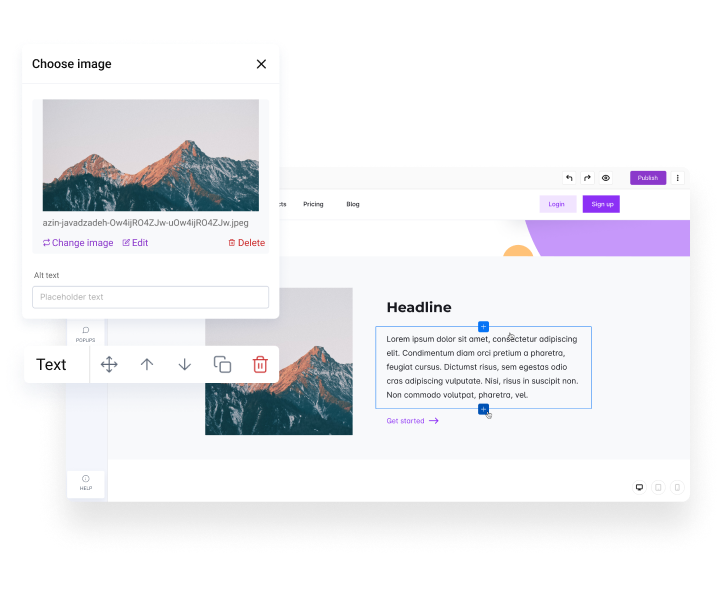
If you are looking for inspiration, check the examples of the best pizza websites .
Step 15. Start selling online
Once your pizza shop is up and running, it’s time to broaden your sales channels and introduce online ordering through your restaurant’s website. Using a pizza ordering system , you can effectively reach your potential customers.
Want to know more? Check out our guide on how to set up an online ordering system .
Offering online ordering makes things more convenient for your customers and helps you reach more potential customers. As a result, it can lead to more sales and growth for your pizza shop.
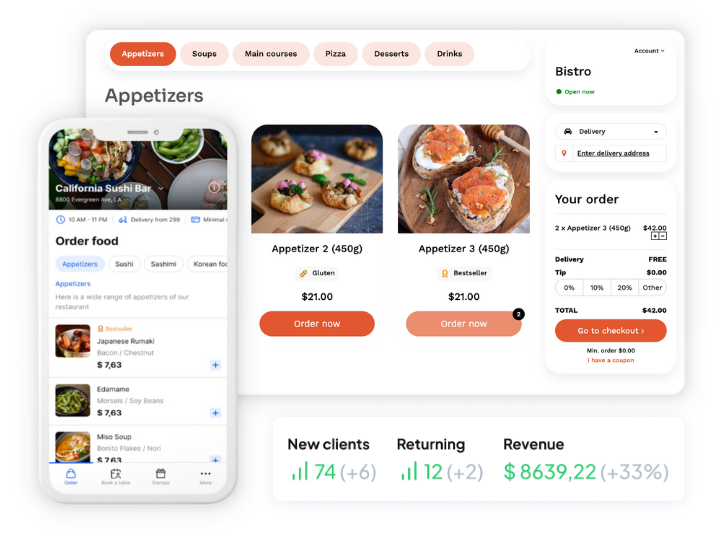
- A checklist on how to start a pizza shop
- Start with developing your pizza recipes
- Decide on your pizza restaurant type and style
- Develop a solid business plan
- Find an excellent location before starting a pizza business
- Take care of all permits and licenses quick service restaurants need to obtain
- Don’t forget about formalities like choosing a business structure, registering your business and applying for licenses and permits
- Secure your finances remembering about both initial costs and recurring expenses
- Design your new business menu
- Create a marketing strategy to attract new customers
- Buy necessary kitchen equipment
- Look for a reliable fresh ingredients supplier
- Design your pizza restaurant interior
- Build a competent team
- Open a pizza shop
- Create a pizza restaurant website
- Start selling online
Key Takeaways
- If you want to open a pizza shop, remember that you need to start with a pizza place concept
- You can choose an independent pizza shop or opt for a franchise
- Always think of your target market while writing your restaurant business and creating your menu
- If you plan to serve Italian dishes, make sure you follow the correct cooking directions
- Choosing your pizzeria location is one of the vital factors necessary to succeed in a restaurant industry
- Depending on your business location and type, you might need different licenses and permits
- If you open a sit-down pizzeria, focus on your business interior design
- Opening a pizza restaurant requires buying all necessary equipment (eg. pizza ovens, prep tables) and hiring competent team
- Any new business requires promotion. Use different marketing strategies to attract new customers
- Create a pizza business website and start selling online
- Create a QR code menu to increase sales
Related articles:
100+ Catchy Pizza Slogans & How to Choose One
How Much Does it Cost to Open a Pizza Shop in 2024?
100+ Best Pizzeria Names Ideas & How to Choose One
Pizza Profit Margin (How to Calculate & Increase)
Pizzeria Business Plan (How to Write & Template)
20+ Best Pizza Marketing Ideas
20+ Best Pizza Websites & Designs (2024)

How helpful was this post?

More from UpMenu:

How to Write a Restaurant Business Plan (Step-by-Step Guide + Free Template)
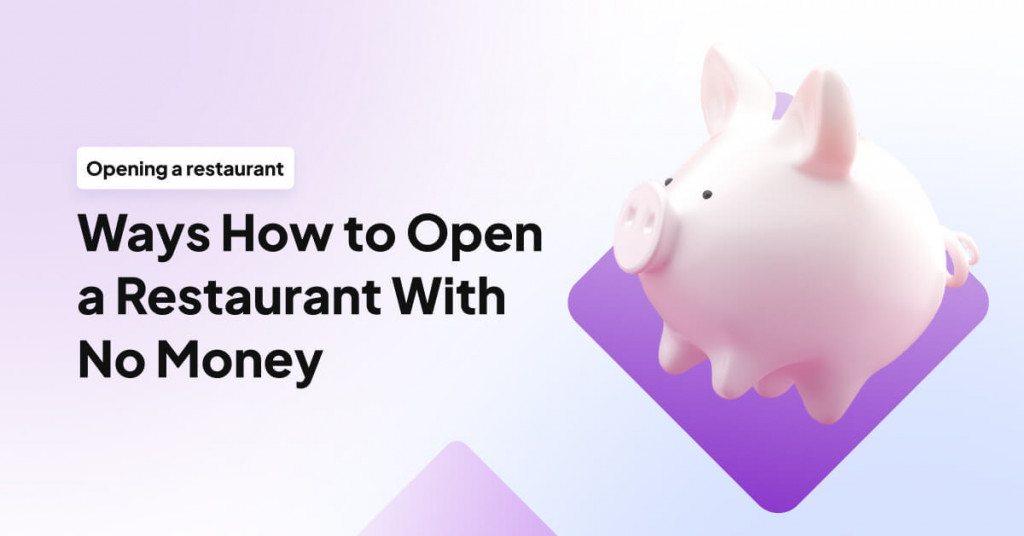
18 Ways How to Open a Restaurant With No Money in 2024
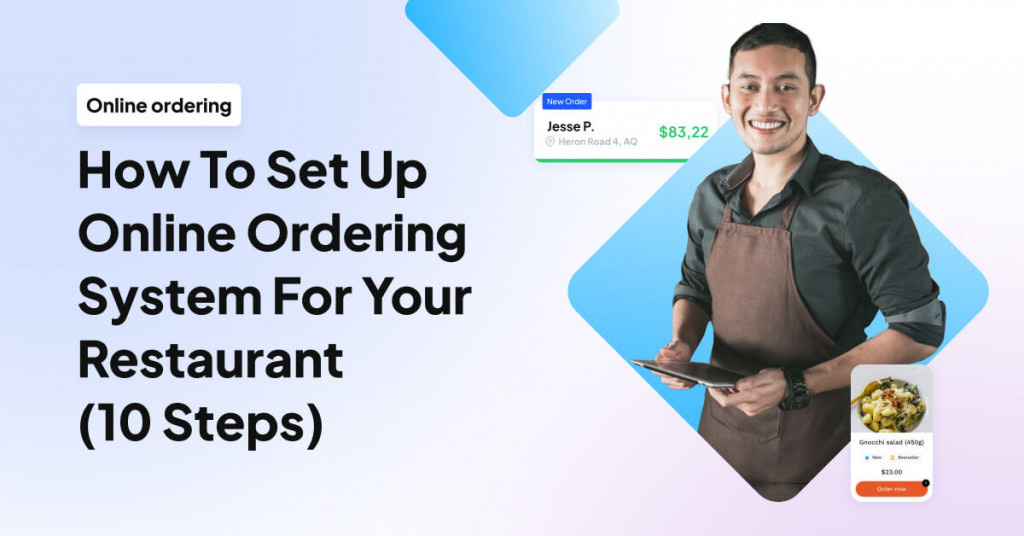
How to Set Up Online Ordering System For Your Restaurant (10 Steps)
Related features:.
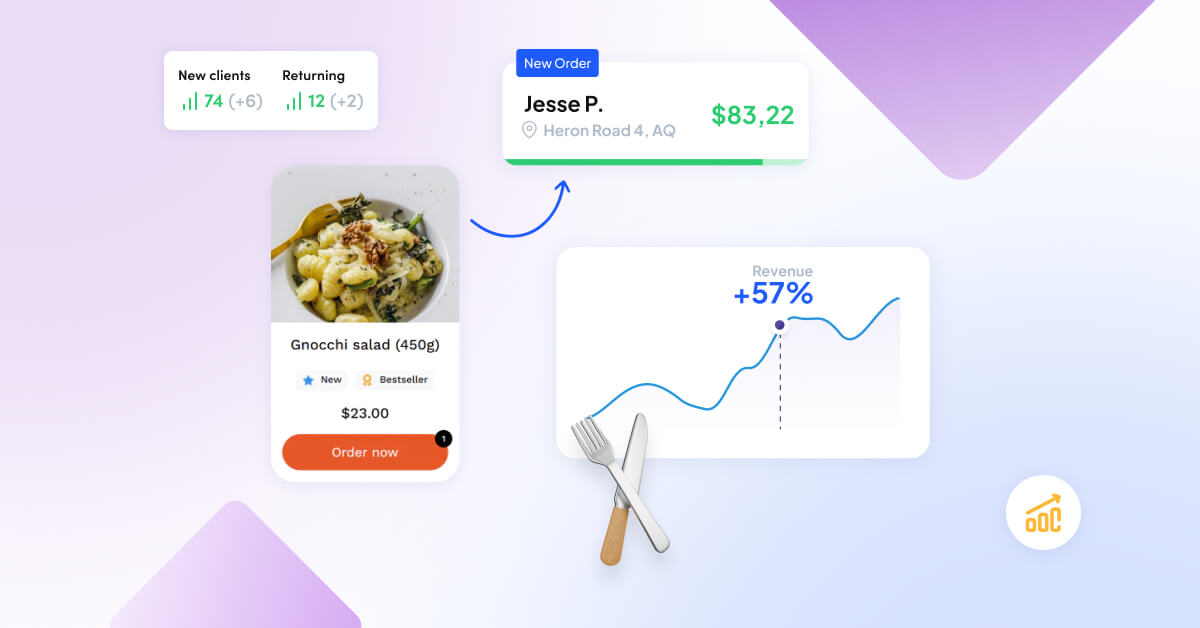
Food ordering system
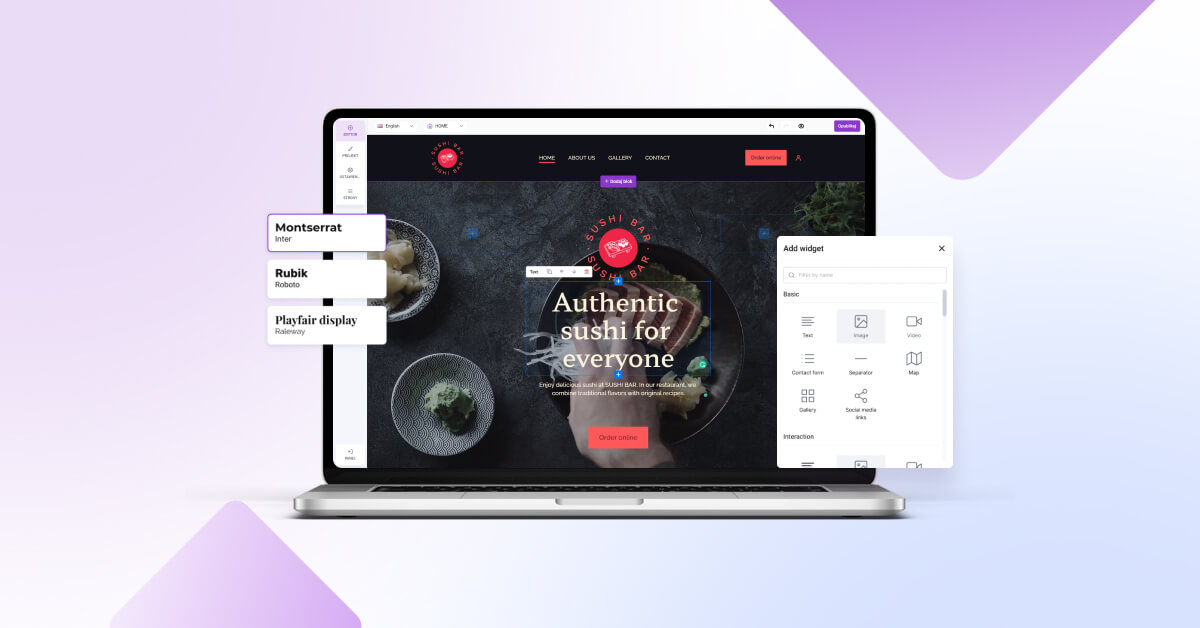
Restaurant website builder
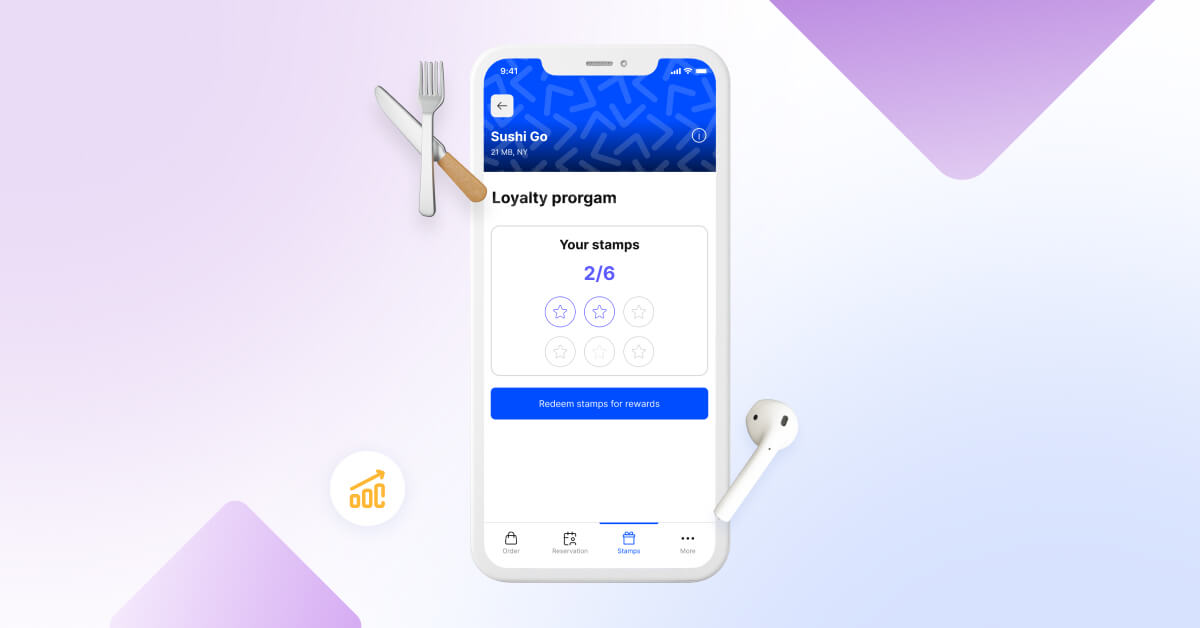
Restaurant loyalty program
Try for free, no commitment.
The Ultimate Guide To Write A Successful Pizza Business Plan
Lary Michael
this template, you will get almost all the details related to the pizza business plan. A business plan is similar to a roadmap. It’s important for two reasons. First, if you need money to start or make your pizzeria bigger, the plan is a key document. Banks or investors will check it before giving you money. Second, the plan is like a guide for your pizza shop. Below we have gathered all the sections that are needed for a well-crafted business plan.
Components of Pizza Shop Business Plan
Your pizza shop business plan should include nine components as follows:
- Executive Summary
Company Overview
Industry analysis, customer analysis, competitive analysis.
- Marketing Plan
Operations Plan
Management team, financial plan.
Most restaurant plans follow a common order, but in this simple business plan template, there are four main sections. I’ll explain each of these sections and how to fill them in.
Research Section of Pizza Business Plan
In the research section, you need to pay attention to three points. These three subsections are given below.
In your restaurant plan, you talk about how big the pizza industry is and what trends it’s dealing with. Even if you don’t think it’s super important, banks usually do. Doing this part shows banks that you know what’s happening in the market where your pizza business is.
Also, the research you do here can make your strategy better. For instance, if you find out that many people like gluten-free pizza crusts, you could add gluten-free options to your menu. This way, you might sell more and make more money.
In the customer part of your pizza shop plan, you talk about the main customers you serve. It’s good if you can note things like their age, income, and what they want.
Keeping track of your target customers can make your marketing plan better. For example, if you see that a lot of your customers are part of a specific club, supporting events for that club might bring in new customers. Also, knowing the details about your target customers helps you reach them better on social media and other places where you advertise.
After you make your business plan, look at other pizza shops nearby to see what they’re good at and where they might not be doing so well. Check sites like Yelp to see what customers say.
Write down what you find in your plan, but the key is to use it to make your pizza place better. For example, if people like another place’s pizzas, how they treat customers, or how fast you can get take-out, think about adding these things to stay competitive.
The Strategic Section
In this section, you will have to focus on three points.
Marketing Plan for Pizza Shop
The marketing plan for a pizza shop includes the “4Ps” , or product, place, price, and promotions:
- Product: This is about your menu — what you sell.
- Place: It’s where your pizza shop is. For a new shop, think about the best location.
- Price: It’s about how much your stuff costs, compared to others.
- Promotions: The goal is to get new and old customers to your pizza shop without spending too much. Use things like posting on Facebook and Instagram or paying for ads on Facebook, Yelp, and Google. Sponsoring local events can also be good for pizza shops.
In addition, do not forget the importance of packaging from a promotion point of view. For this reason, you can have customized pizza boxes wholesale . This way, you can also save your money on packaging expenses.
Your operations plan has two parts. The first talks about the staff needed for daily operations at your pizza shop.
The second part is about milestones. Here, list key things you want to achieve over the next five years. Start by thinking about where you want your pizza business to be in five years. For instance, maybe you want $3 million in sales. Then, figure out how many customers and locations you need to reach that goal.
In a restaurant business plan example, your five-year goals might be Sales of $3 million, 250,000 customers served, and two locations. Then, work backward to figure out goals for year four, year three, year two, and most importantly, the next year.
For the next year, break down the goals even more. If you want to open a new shop in year two, in March of year one, a goal could be to start looking at new locations. In June, a goal might be to begin construction. In December, a goal might be to hire a new store manager. The aim is to plan your growth and set short-term goals. Hitting these goals will bring you closer to meeting your long-term goals in your pizza business plan.
A financial plan for a pizza shop tells you how much money you need, if any, to make your business bigger. It also shows how you expect your business to grow. Your projections must include three things: an income statement, a balance sheet, and a cash flow statement.
To finish your financial projections, you have to guess about many things, like how much your sales will grow, how much you’ll pay your employees, and how much it costs to make your products. Try to base these guesses on what happened before, so your projections are as realistic as possible.
Organization Section
The organization section consists of two subsections that are given below.
The company overview part of your pizza business plan talks about your history. Here, share your achievements and important moments so far. For instance, mention when you first opened your shop or when you reached a certain amount in sales.
Think about the strategies you used in your food business plan to reach these results and decide if you should use the same strategies to grow.
In the management part, share the bios of the important people on your team. If investors or lenders read your pizza business plan, they want to know that your pizza shop has the right leaders. Talk about what your team has achieved so far.
If you’re planning to grow and hire more people, talk about the key employees you need and the qualities they should have. Additionally, you can also read a blog which is
https://medium.com/@larymichael/how-do-you-attract-people-to-buy-pizza-7d5fb64ab541
Pizza Business Executive Summary
Your executive summary quickly shows what’s in your whole business plan. It talks about the main things in each part. For example, if your marketing plan has three ways to promote your pizza shop, in the summary, you just say “X, Y, and Z are the three ways we’ll use.”
Besides summing up your main parts, the executive summary answers a big question for investors and lenders: “Why are you the best person to make this business succeed?”
Keep in mind if you have the following points in your summary.
- Quality of pizzas
- Pizza Variety
- Customer service
- Operational excellence
- Management expertise

Written by Lary Michael
I'm your friendly foodie! With over 15 years of experience in the food biz, I know my way around the kitchen like the back of my hand.
Text to speech
How to Start a Pizza Business: Step-by-Step Guide
Is Opening a Pizza Business Profitable?
Top pizza businesses in the us, determining the type of pizza shop you want to open, what you need to start your own pizza business, orders.co: your recipe for pizza business success.
Attention budding restaurant owners! Are you ready to slice into a sizzling opportunity?
If you’ve ever dreamt of owning a thriving pizza business, now is the time to turn those dreams into a reality.
Ranked just below the iconic burger, the pizza industry is a goldmine.
Consumers spend billions annually on pizza, making it one of the most lucrative and beloved culinary ventures in the market.
But how do you take that first crucial step as an independent restaurant owner toward crafting your slice of success?
Don’t fret because we’ve crafted the ultimate roadmap to guide you through every thrilling step of launching your pizza empire. So, grab a slice, and let’s dive into the mouthwatering world of starting a pizza business!
You might wonder why you decided to open a pizza business amidst the sea of culinary options.
Let’s break it down.
High Demand, Constant Craving
Pizza isn’t just a meal; it’s a cultural phenomenon. Its universal appeal transcends age, background, and dietary preferences. From busy professionals seeking a quick bite to families craving a cozy dinner, the demand for pizza remains consistently high.
This steady demand translates into a reliable stream of customers, ensuring your business stays bustling daily.
Versatility Reigns Supreme
One of the beauty of pizza lies in its versatility. With countless topping combinations, crust styles, and dietary options, you can customize to various tastes and preferences.
The possibilities are endless: classic pepperoni for traditionalists or gourmet vegan options for health-conscious people. This adaptability keeps your menu fresh and exciting and expands your potential customer base.
Profit Margins that Rise Like Dough
Few culinary ventures can match the allure of pizza when it comes to profitability. With relatively low ingredient costs and high markup potential, pizza boasts impressive profit margins.
Plus, strategic pricing and upselling tactics can further boost your bottom line without compromising quality or customer satisfaction.
Resilience in the Face of Trends
While food trends may come and go, pizza remains a steadfast favorite. Its timeless appeal ensures your restaurant business stays relevant and resilient in the ever-evolving culinary landscape.
Whether it’s a recession, a health craze, or the latest food fad, pizza stands the test of time, making it a wise investment for aspiring entrepreneurs.
In essence, opening a pizza business isn’t just about serving delicious slices; it’s about tapping into a lucrative market with boundless opportunities for success.
Regarding the pizza business in the United States, several iconic establishments have risen to legendary status, setting the bar high for aspiring pizzerias nationwide.
Let’s look at some of these top pizza businesses and unravel the secrets behind their enduring success.
Domino’s Pizza
With a history spanning several decades, Domino’s Pizza has cemented its position as a household name in the world of pizza delivery.
What sets Domino’s apart is its relentless focus on efficiency and convenience.
From their innovative online ordering system to their famous 30-minute delivery guarantee (now the “30-minute delivery promise”), Domino’s has revolutionized the pizza delivery experience.
Key menu items include their Classic Hand-Tossed Pepperoni Pizza, ExtravaganZZa Feast, and savory Stuffed Cheesy Bread.
Another giant in the pizza industry, Pizza Hut, has carved out a niche with its diverse menu offerings and widespread presence.
Pizza Hut’s success lies in its ability to cater to a wide range of tastes, offering everything from traditional pan pizzas to stuffed crust delights.
Additionally, Pizza Hut’s aggressive marketing campaigns and iconic dine-in restaurants have helped solidify its status as a go-to destination for pizza lovers.
Popular menu items include the Meat Lover’s Pizza, Supreme Pizza, and their signature Stuffed Crust Pizza.
Papa John’s
Known for its commitment to quality ingredients and “Better Ingredients. Better Pizza.” slogan, Papa John’s has built a loyal following of pizza aficionados.
Papa John’s success can be attributed to its emphasis on fresh, high-quality toppings and its dedication to customer satisfaction.
Key menu items include the Papa John’s Special Pizza, The Works Pizza, and their flavorful Garlic Knots.
Blaze Pizza
In the realm of fast-casual dining, Blaze Pizza has emerged as a game-changer, offering customizable artisanal pizzas cooked in record time.
Blaze’s success stems from its emphasis on customization and speed, allowing customers to build their perfect pizza from a wide selection of fresh ingredients.
With a commitment to quality and sustainability, Blaze Pizza has captured the hearts of health-conscious consumers looking for a quick and delicious meal.
Some popular menu items include the Build Your Own Pizza, White Top Pizza, and BBQ Chicken Pizza.
These top pizza businesses have mastered creating crave-worthy pies while innovating in delivery, customization, and sustainability.
By studying their strategies and menu offerings, aspiring pizzeria owners can glean valuable insights into what it takes to thrive in this competitive industry.
Alright, let’s talk pizza shop dreams! Before you dive into the dough, you’ve got to decide what flavor you want your pizza joint to bring to the table.
Here’s a mouthwatering exploration of different pizza shop styles to get your creative juices flowing:
Classic Sit-Down Pizzeria
Picture this: red-checkered tablecloths, the aroma of bubbling cheese in the air, and families laughing over slices of pizza.
That’s the vibe of a classic sit-down pizzeria like Frank Pepe Pizzeria Napoletana in New Haven, Connecticut. Think warm, inviting, and perfect for those who savor every bite of their pizza in a cozy atmosphere.
Fast-Casual Pizza Joint
Want to put a modern spin on pizza? Think Chipotle-style customization meets piping hot pies.
Enter Blaze Pizza, where you can build your own artisanal pizza masterpiece in minutes. It’s all about speed, choice, and deliciousness on the go.
Takeout and Delivery Only
When hunger strikes and you’re craving a slice without leaving the couch, takeout and delivery-only spots like Pizza Hut’s delivery service come to the rescue.
With a few taps on your phone, a piping hot pizza arrives at your doorstep, no fuss, no muss. It’s a convenience at its tastiest.
Gourmet or Specialty Pizza Concept
Craving something a little fancier? How about a truffle-infused crust topped with prosciutto and figs?
That’s the magic of gourmet pizza joints like Roberta’s in Brooklyn, New York. They’re the playgrounds of pizza artists pushing the boundaries of flavor and creativity.
Mobile Pizza Truck or Catering Service
Who says pizza can’t be an adventure?
Hit the road with a mobile pizza truck like The Rolling Tomato, serving wood-fired goodness at music festivals and weddings.
It’s pizza with a side of wanderlust, bringing smiles to hungry crowds wherever it rolls.
From classic comfort to gourmet delights, the world of pizza shops is yours to explore. So, grab a slice of inspiration and start crafting your successful pizza shop!
Launching your own pizza business requires careful planning and preparation.
Let’s explore the essential elements to kickstart your pizza empire.
Developing a Comprehensive Business Plan
A well-crafted business plan serves as a roadmap for your pizza business, guiding your decisions and strategies for success.
Your pizza shop business plan should outline your vision, mission, and objectives and detail your target market, competitive analysis, and marketing strategies .
To demonstrate the viability of your restaurant business to potential investors or lenders, include financial projections, such as revenue forecasts, startup costs, and break-even analysis.
Remember to continuously review and update your own business plan as your pizzeria evolves, ensuring it remains aligned with your goals and objectives.
Obtaining a Food Service License
Before you start tossing dough, you must ensure you have all the necessary legal requirements in place. This includes obtaining a business license or permit from your local government authorities.
Each jurisdiction may have specific regulations and requirements for operating a food business, so be sure to research and comply with all applicable laws and regulations.
Obtaining a business license legitimizes your operation and ensures that you adhere to health and safety standards, protecting your customers and your business.
Contact your local business licensing department to learn about the process and any additional permits or certifications required for running a pizza business in your area.
Opening a Business Bank Account
Once you’re ready to launch your pizza venture, it’s crucial to separate your personal and business finances by opening a dedicated business bank account.
This account will be the hub for managing your business transactions, including revenue, expenses, and payroll.
Having a separate business account not only simplifies bookkeeping and tax filing but also adds a layer of professionalism to your operation. Shop around to find a bank that offers business-friendly services, such as low fees, convenient online banking, and business credit options
Location, Location, Location
The success of your pizza business hinges on choosing the correct location. Look for areas with high foot traffic, ample parking, and minimal competition.
Consider factors such as demographics , visibility , and accessibility when scouting for the perfect location for your pizzeria.
Equipment and Supplies
Stocking your kitchen with the right equipment and supplies is essential for smooth operations.
Invest in high-quality pizza ovens, dough mixers, refrigeration units, and other necessary kitchen tools to ensure efficiency and consistency in your pizza-making process.
Ingredients and Recipes
The key to crafting irresistible pizzas lies in using fresh, high-quality ingredients and perfecting your recipes.
Source top-notch ingredients such as premium cheeses, locally sourced produce, and artisanal meats to elevate the flavor profile of your pizzas and set yourself apart from the competition.
Staffing and Training
Your restaurant team plays a pivotal role in the success of your pizza business. Hire skilled and passionate staff members who share your dedication to delivering exceptional customer service.
Provide thorough training to ensure consistency in food preparation, customer interactions, and overall operations.
Initial Marketing Campaigns
Generating buzz and attracting customers from the get-go is essential for a successful launch. Consider creative marketing campaigns to build excitement around your pizzeria.
Take inspiration from innovative campaigns such as those launched by pizza businesses offering special deals on Pi Day (March 14th) , where pizzas were priced at $3.14, capitalizing on the mathematical reference to pi.
This garnered attention and drove foot traffic and sales, showcasing the power of strategic marketing initiatives.
Online Presence and Delivery Services
In today’s digital age, establishing a solid restaurant online presence is paramount for reaching and engaging customers.
Invest in a user-friendly restaurant website and leverage social media platforms to showcase your menu , promote special offers, and interact with your audience.
Additionally, offering delivery pizza shop services expands your customer base and convenience, so consider partnering with third-party delivery platforms or implementing in-house delivery options.
Creating a Professional Website
In today’s digital age, having a professional restaurant website is essential for establishing your online presence and attracting customers to your pizza business.
Fortunately, with the advent of AI-assisted website builders, you can quickly and affordably create a stunning website for your pizzeria.
These platforms leverage AI algorithms to streamline the website design process, offering customizable templates, drag-and-drop functionality, and intuitive interfaces.
By utilizing AI-assisted website builders , you can have your pizza business up and running online in no time, showcasing your menu, location, and contact information to potential customers.
Local SEO Optimization Strategies
Implementing local SEO optimization strategies ensures your pizza business stands out in local search results and attracts nearby customers.
Local SEO focuses on optimizing your online presence to appear prominently in local search queries, such as “pizza near me” or “best pizza in [your city].”
- Ensure accurate business information, including address, phone number, and hours of operation.
- Keywords such as “pizza,” “delivery,” and “takeout” can improve search engine rankings for local queries.
- Positive reviews on platforms like Google, Yelp, and TripAdvisor significantly impact local search rankings.
- Further, utilize platforms like Yelp, Yellow Pages, and Bing Places to enhance your online visibility within your target market.
Pizza entrepreneurship in the restaurant industry is as diverse and flavorful as the pies themselves.
Whether you envision a cozy sit-down joint, a fast-casual hotspot, or a gourmet pizza haven, a slice of success awaits you.
And when it comes to turning your pizza dreams into reality, Orders.co is here to help you hit the ground running.
- With Orders.co’s AI-powered marketing solutions , including automated email campaigns and SMS texts, effortlessly connect with your customers and keep them returning for more.
- Say goodbye to manual marketing efforts and hello to optimized, effective communication that drives sales and fosters customer loyalty.
- Orders.co offers top-notch local SEO optimization services to ensure your pizza business stands out in local search results and attracts nearby customers.
- By optimizing your Pizza business online presence, you’ll boost visibility, drive traffic, and dominate the local pizza scene.
- Orders.co’s AI-assisted website builder makes creating a professional, eye-catching website for your pizzeria a breeze.
Schedule a FREE Demo Call to learn more!
Together with Orders. co, let’s make your pizza business dreams a delicious reality.
Your Inbox, Your Rules!
Tailor your newsletter with the topics you're most interested in., related blogs, inspiring pizzeria design ideas: creating an inviting space.
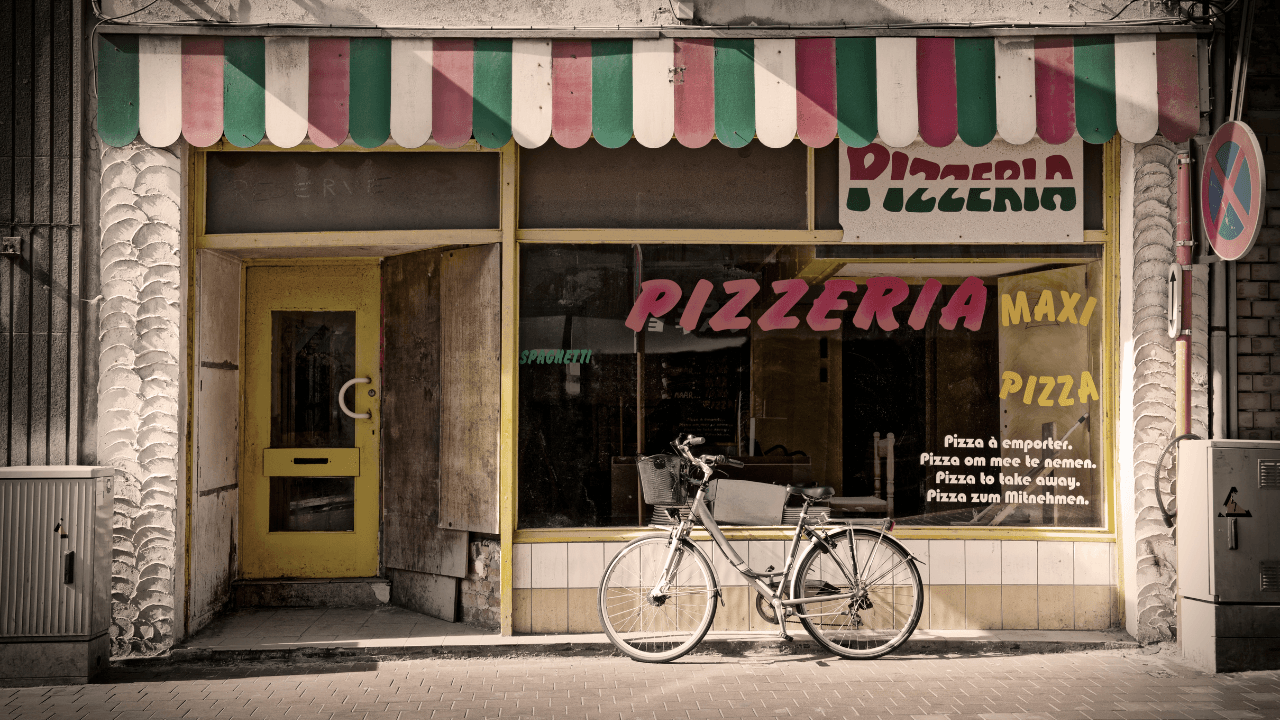
Effective Mexican Restaurant Advertisement: Strategies for Attracting Customers
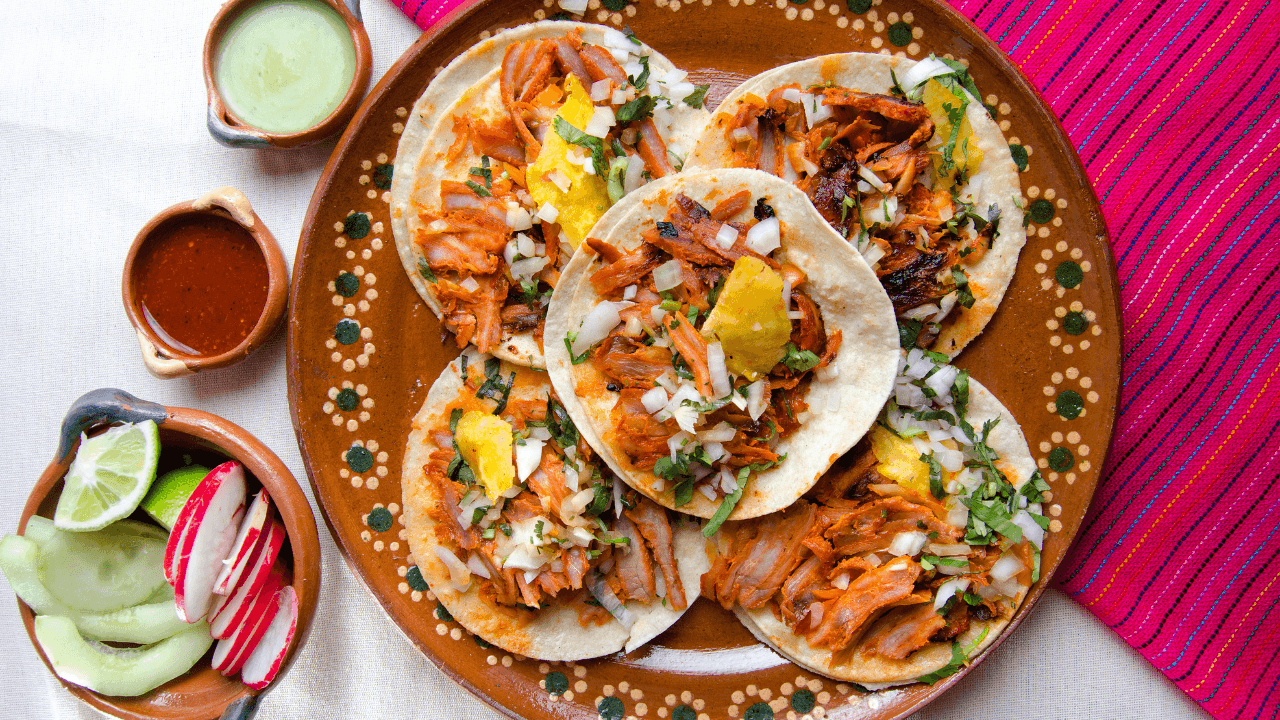
Understanding the Average Pizza Shop Owner Income: Profitability Insights
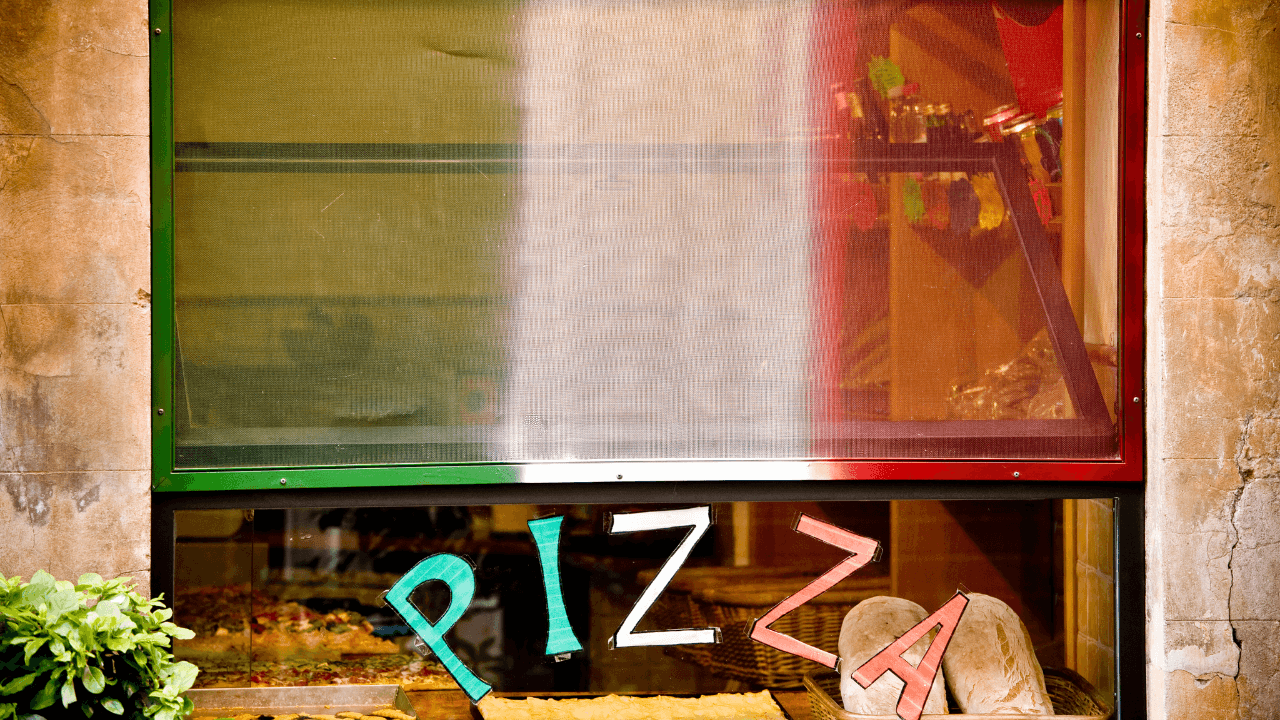
How to write a successful business plan for a pizzeria

Some flour, a pinch of salt, a little yeast, a layer of tomato sauce, and a dollop of cheese: pizza is as simple as it is delicious.
From basic margarita to the more extravagant capricciosa, it's incredibly versatile - and the pizzeria business model is no different. Just like pizza, it can take many forms - whether it be a classic Italian restaurant, pizza takeaway, fast-food joint, or a gourmet pizza place.
Whatever way you decide to sell pizzas, you'll have to draft up a business plan for a pizzeria before being able to make it happen. In this guide, we'll explain how you can successfully launch a pizzeria by taking advantage of this practical tool.
Before diving headfirst into writing the business plan for a pizzeria, let's first look at the market.
The UK pizza market
According to a study carried out by VoucherCodes, the average Brit will eat 731 pizzas in their lifetime (or 5,847 slices, to be exact.)
The market is therefore booming at around £4.9 billion - with around 6,164 pizza delivery and takeaway places alone.
Between pizza takeaway businesses, fast food chains, Italian restaurants, and independent pizzerias, the competition is very tough. So it's up to you to develop a business idea that will allow you to successfully take up your own space on the market.
Why the business plan for a pizzeria is essential
To successfully launch the restaurant of your dreams, writing a business plan for a pizzeria is imperative.
If you're just starting out in the entrepreneurial sphere, then the idea of creating a business plan might seem scary - but it's important that you can see it for what it is: a remarkably effective tool to help you move your business idea forward.
In other words, a business plan is your roadmap.
It's a document in which you lay out the details for your project, the objectives you have for your business, and the steps you'll need to take to ensure it's a success.
Giving you a clear and overall view of your venture, the business plan will allow you to iron out any kinks, highlight its strengths, quantify the amount of money needed to bring it into fruition, and estimate the potential profitability of a pizzeria.
You can then use this document to present your business idea to banks or potential investors, who will then decide whether or not they'd like to lend the funds to help get your business off the ground.
It's therefore essential to have a solid, comprehensive business plan to prove your dedication and credibility as an entrepreneur.
Writing a business plan for your pizzeria also means having to carry out market research to familiarise yourself with the pizza market in the town or city in which you'd like to base your business, as well as the strengths and weaknesses of nearby competitors.
The prices you set will depend on your business model (whether it's a gourmet pizzeria or a pizza delivery place) and where you're based. From there, you can draw up a financial forecast for your pizzeria to integrate into your business plan.
What information might a pizzeria business plan need?
Conducting market research is crucial. It helps you validate that there's potential for your business to prosper. Think about:
- The pizza industry market map (price and type of pizza segments) to understand where you could position your business in the market
- Successful methods used to build customer loyalty in your target market
- Any new trends in the market (the emergence of gluten free and vegan pizza)
You also need to gather data about potential operational costs (staff recruitment, training and other operating costs). We advise you to call suppliers and ask them for a quote concerning prices.
These are the two key areas that you will need to address before drawing up a business plan. A high-quality business plan will likely require an in-depth analysis of both.
Feeling lost? Let our business plan software guide you
If drafting up a business plan for a pizzeria on your own feels a little too complicated, then you've come to the right place
Our online business plan software makes it easy for you. Designed specifically for entrepreneurs who've never written a business plan before, it will guide you step by step through the process - so you don't get lost in between the many different stages.
It will also make creating a financial forecast a breeze - leaving you with a clear, well-presented, and professional document with which you can confidently showcase your business idea to investors.
If you're still not sure, why not dip your toe and test our business plan software for free? Click here to try it out and let us know how you get on.
If you have any other questions or queries related to the launch or operation of a pizzeria, please don't hesitate to get in touch with our team.
Also on The Business Plan Shop
- Business plan template for a pizzeria
- How to open a pizzeria without money
- How to take over a pizzeria
- Practical guides to help you open a pizzeria
Know someone who's about to write a pizzeria business plan? Share this guide with them!

Founder & CEO at The Business Plan Shop Ltd
Guillaume Le Brouster is a seasoned entrepreneur and financier.
Guillaume has been an entrepreneur for more than a decade and has first-hand experience of starting, running, and growing a successful business.
Prior to being a business owner, Guillaume worked in investment banking and private equity, where he spent most of his time creating complex financial forecasts, writing business plans, and analysing financial statements to make financing and investment decisions.
Guillaume holds a Master's Degree in Finance from ESCP Business School and a Bachelor of Science in Business & Management from Paris Dauphine University.
Create a convincing business plan
Assess the profitability of your business idea and create a persuasive business plan to pitch to investors

500,000+ entrepreneurs have already tried our solution - why not join them?
Not ready to try our on-line tool ? Learn more about our solution here
Need some inspiration for your business plan?
Subscribe to The Business Plan Shop and gain access to our business plan template library.

Need a professional business plan? Discover our solution
Write your business plan with ease!

It's easy to create a professional business plan with The Business Plan Shop
Want to find out more before you try? Learn more about our solution here
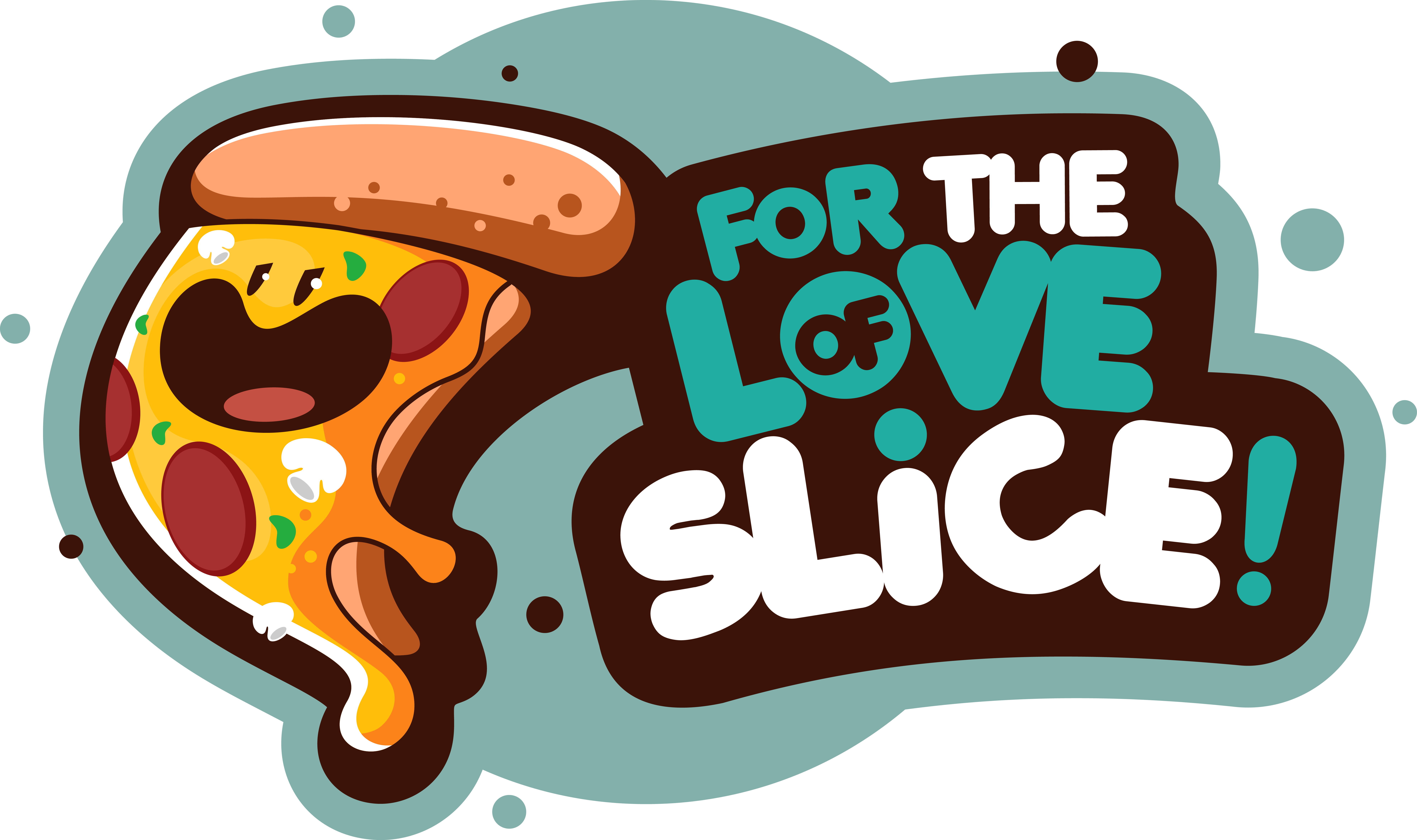
Pizza Shop Business Plan

Pizza, pizza, pizza! Who doesn’t love a delicious slice of cheesy, saucy heaven? If you’re considering starting a pizza shop business, you’re in the right place! This blog will dive into creating a solid business plan to ensure your pizzeria’s success. From market research and financial projections to menu development and marketing strategies, we’ve got you covered. So grab a slice, and let’s get started!
What Is A Pizza Shop Business Plan?
A pizza shop business plan is a document that guides how to start and manage a pizza shop business. The plan includes details on how you will make money, how you will keep track of expenses, and your business goals. A good pizza shop business plan should consist of all these elements. Pizza shops are only sometimes easy to start, but if you have an excellent idea for a pizzeria and have the right resources, it can be done! A good pizza shop business plan will help you decide where to find investment capital, how much money you need to start up your pizzeria, what kind of pizza you want to sell, and what your marketing plans should be.
A good pizza shop business plan should include the following:
A Description Of Your Target Market
If you are starting a pizza shop business, the first step is identifying your target market. You can observe people visiting your local businesses and asking them what food they like. This will enable you to establish an idea of what kind of customers you are aiming for.
The target market for your pizza shop business will be based on how many people live in your area, what type of people they are, and how much money they make. For example, if you live in an area with many young couples with children (and therefore many customers), you’d want to open a pizza shop that caters to those people. If you live in an area with many elderly people who don’t have much money, it would be smarter to open a grocery store instead of a pizza shop.

The Location Of Your Business
To open a pizza shop business, you must decide where it should be. It can be anywhere in the world, but certain factors must be considered before making this decision. These include environmental factors like climate and weather conditions, traffic patterns, distance from other restaurants and shops, etc. You need to know if there are any restrictions on where you can open up shop and what legal requirements might be for owning a restaurant in certain areas.
The Type Of Product You Will Be Selling
You need to know what products you will sell in your pizza shop business plan and how much they will cost. Consider making pizzas for a particular event, like a wedding or birthday party. You might also have some ideas about which foods customers would buy at the shop. If you’re planning on selling frozen pizzas, consider whether you want to run a frozen food delivery service or sell them in-store.
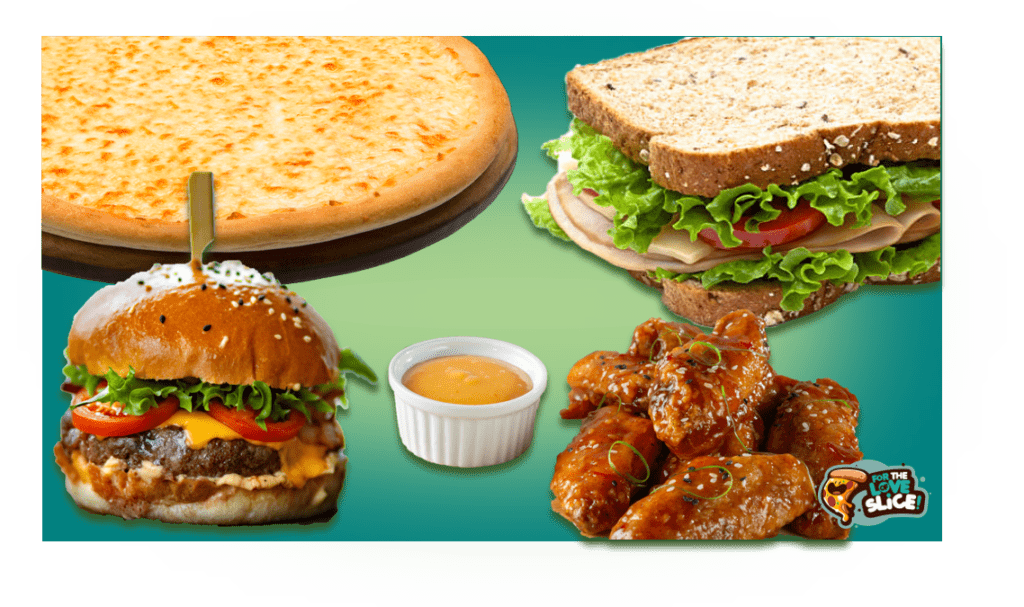
Your Cost Structure
You should decide how much money you need to start up and run the business and what percentage of profits will go towards paying taxes and other expenses. This should include all expenses involved in running your pizza shop business, including rent, utilities, payroll, supplies, and additional operating costs. These expenses should be broken down into several categories to identify and monitor over time easily. These categories include legal fees, rent, utilities, and payroll. You should also include the profit margin for each category and any other expenses incurred during the business operations, such as advertising or marketing costs.
How Will You Finance Operations At First
It is essential to have enough capital to start a business. You cannot start off with an empty bank account because you need to invest in items such as your restaurant, furniture, and equipment. Capital can come from bank loans or angel investors. You can use your savings or borrow money from banks and other lenders as required. Getting a loan from a bank or any other financial institution is a good idea to start with good credit ratings and continue operating your business without worrying about finances.

How To Write A Successful Pizza Business Plan
Define your target market.
Pizza is popular worldwide and can be found in many different forms, from fast-food outlets to high-end restaurants. A successful pizza business plan should define the type of customers you want to attract. You should also decide whether you want to focus on specific areas, such as pizza delivery or if you want to open up a restaurant that serves both takeaway and dine-in options.
Develop A Unique Selling Proposition
You will need to develop a unique selling proposition for your business plan to attract customers. This might include offering special deals, discounts, and offers on certain products or services. You should also take into account other competitors who are already operating in the marketplace and make sure that there is enough difference between your business plan and theirs so that it stands out from the crowd.
Establish Your Pricing Strategy
Pricing is one of the most important aspects of any Pizza business plan. You need to determine what kind of price points you want to offer, what level of service you will provide, and how much your customers will pay for it all. You can rely on the local market or set yourself apart from other restaurants in town by offering unique or exotic pizzas or toppings that aren’t typically available elsewhere. In addition, consider whether you want to provide take-out or dine-in options so that customers can choose whether they want their food delivered or served in-house at a table.
Create A Marketing Plan
The first step in starting any new business is to develop a marketing plan. The Pizza business plan should include a detailed description of how the company will be marketed and promoted and how it will conduct its overall sales and marketing strategy. For example, it’s important to include information about how you will advertise your pizza delivery service and what types of promotions you will offer customers. Also, ensure you include any special promotional events you plan on doing throughout the year to attract more customers to your business.
Outline Your Operations Plan
You need to outline the key aspects of your business, including where you intend to source your ingredients from, how many deliveries you expect to make per week, and how many customers you will be able to attract. You should also consider the costs involved, such as staff wages, rent and delivery fees. This information will help you determine what type of equipment, licenses, licenses, and permits are needed to run your business effectively and efficiently.
Create A Financial Plan
This will help you determine how much money you need to start up your business and keep it running each year. It is important that you include all potential costs so that you can see where any profits can be made or lost. You should also have an idea of how much money will be coming in each month and what percentage of this is going towards paying back loans or borrowing more funds from investors.
Write A Management And Organizational Plan
The pizza business plan should include a detailed description of your pizzeria’s management and organizational structure, including how many employees you will hire, where they will work, how much money you will spend on employee training, and how much time you expect each employee to work. This is especially essential if you plan to expand your business by opening additional locations or acquiring another restaurant franchise.
Identify The Team And Staffing Needs
Your business plan should include information about who will be involved in your pizza business’s daily operations and their specific responsibilities. For example, who has responsibility for ordering ingredients? Who has responsibility for scheduling delivery drivers? Who has responsibility for training new employees? It is essential to consider factors such as customer traffic, kitchen and equipment needs, and peak business hours when determining the appropriate number of staff. Additionally, it is important to consider the qualifications and experience of the team members, as well as their ability to work well together. This will ensure that the business runs smoothly and can meet customers’ needs.
Describe The Exit Strategy
The exit strategy is the most important factor that can help you determine if your business has a chance at success. An exit strategy is a plan that outlines how you will work to achieve your goals, including how much money or equity you want to get out of the business, what assets you would like to sell, and when you think this will happen. You should always have an exit strategy in place before starting any business because it helps prevent problems later on down the line.
Continuously Update And Improve
One of the most vital aspects of any successful business plan is constantly updating it to reflect current market conditions, technological changes, and customer preferences. This means being aware of new industry trends and ensuring that your plans reflect these changes when possible. It also means keeping an eye out for opportunities that might arise from these changes so that you can take advantage of them before anyone else does. This could be anything from launching new products or services to changing pricing structures or distribution channels.
Advantages Of Having A Pizza Shop Business Plan
To have an understanding of the competition and market.
Pizza is one of the most popular fast-food meals in the world. It’s easy to make, delicious and quick, which makes it very appealing to consumers. With so many pizza shops opening up worldwide, there is bound to be fierce competition between them. However, having a concrete business plan in place will give you a better idea of how much profit you can expect from your business and how much time it will take you to reach your goals.
It Helps Set Realistic Financial Projections And Goals
When setting up a business plan for your pizza shop business, it is important that you consider all aspects of running an establishment like this, including the costs involved in getting started as well as what sort of profits you can expect from your venture. By doing this, you will be able to establish a more accurate timeline for your project and know when you should be able to start making money from it.
It Helps You Identify Potential Risks
You may have a great idea to start a pizza shop business, but there are many things that can go wrong. For example, you may have to hire employees, but not in the numbers of desire or find customers who are willing to pay for your product. In this case, having a business plan will help you identify potential risks and mitigate them with detailed plans for each step. This is important since it helps you stay focused on the goal of starting your own business.
Improved Organization And Efficiency
By planning ahead for each step of your process, you will be able to ensure that everything runs smoothly when it comes to opening your new business up for business or servicing customers on a day-to-day basis. This means that when you open your doors, customers will be greeted by helpful staff who know precisely what they need and how to get it done quickly without wasting their time waiting around while others work on getting orders ready or calling in more staff if they’re busy.
It Works As A Tool For Strategic Planning And Decision Making
A business plan outlines the direction of the business and helps the owner identify opportunities and challenges, as well as make informed decisions to achieve the business’s goals. This is especially important when making decisions about marketing and expansion.

In conclusion, a pizza shop business plan is the recipe for success in the pizza industry. With the right ingredients, a well-researched market analysis, a unique concept, and a solid financial plan, you’ll be on your way to baking up profits in no time! So, roll out your dough, add your toppings, and fire up the oven – it’s time to open your own pizza shop and serve up some delicious slices!
Related Articles

Marketing Plan For A Pizza Shop
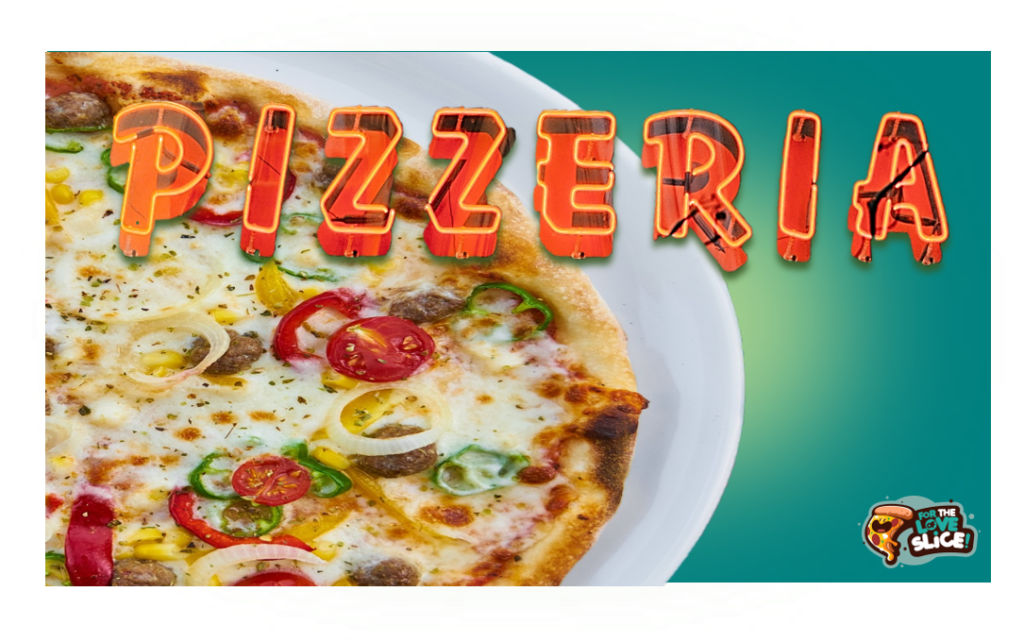
How To Start A Pizzeria Business

Everything To Know About The Pizza Industry, Jobs And Career

- Restaurant Types ❯
- Resources ❯
From Concept to Launch: A Guide on How To Open a Pizza Shop
January 4th, 2024

Obviously, opening up a pizzeria isn’t as easy as putting a pie in the oven. To launch a successful pizza restaurant, you need to plan well, build a great team, and make strategic choices that work toward your business goals.
PMQ Pizza Magazine reported that the United States saw an estimated $46.98 billion in pizza sales in 2022. So, if you’ve been considering opening up a pizza shop of your own, now may be the right time.
We’ve compiled this quick guide of the most important steps you should take when launching your own pizzeria. Let’s get started.
1. Identifying Your Pizza Brand and Style
In today’s world, pizza lovers have a plethora of options to choose from in their local neighborhoods. A pizzeria can be found on almost every block or shopping center, whether it’s a chain restaurant or an independent business.
As a pizzaprenuer, you have to decide where you fit into the mold — or where you don’t. If you’re opening a pizza shop, you first need to identify the type of pizza you’ll serve and let that lead to defining your brand. Will your menu have more traditional eats where tomatoes are the main ingredient in every dish, or are you redefining pizza with more innovative foods?
Your pizza shop’s brand is reliant on the service style you choose. Developing a brand gives your pizzeria a personality. For example, your brand could be a traditional pizza parlor with dollar slices or an Italian family-style eatery. Besides the menu, your brand will motivate customers to dine with you.
Crafting your menu can be the catalyst for identifying what type of pizza restaurant you should open. It can also indicate what equipment you’ll need, your target customer base, the staff you’ll need to hire, and the start-up money you’ll need to open.
Determining what kind of service you’ll offer at your pizzeria is essential for developing a business concept, drafting a business plan, and obtaining start-up funding.
Let’s dive into the most popular types of pizza shop service.
One of the most common forms for pizza shops is delivery. They offer patrons convenience and usually have lower startup costs than sit-down establishments. However, this type of restaurant presents the need for delivery drivers and often requires customers to pay an additional service or delivery fee. If you prefer this style of service, consider implementing an online ordering system or integrating with a third-party delivery service .
Delivery and carryout go hand in hand. Pizza shops that offer minimal seating (no more than half a dozen tables) require less space than sit-down restaurants but still offer customers the convenience of a quick meal. Like delivery, you may also want to integrate online ordering if you choose to offer takeout.
Often a more expensive investment, sit-down pizzerias allow you to create a great customer experience for those with more time to dine. As a table-service restaurant, the quality of service your waitstaff provide can either add to or detract from diner satisfaction. Keep this in mind when choosing your POS hardware later down the line: you may want to provide servers with mobile payment devices to streamline the guest experience.
2. Writing a Business Plan
Once you’ve defined your pizzeria menu, style, and brand, you can begin drafting a business plan. A business plan is a document that allows you to manage your pizza shop’s objectives and strategies.
A good business plan will allow you to implement strategies, stay organized, and obtain investors.
A thorough business plan will include the following sections:
- Executive summary
- Company description
- Legal formation
- Start-up money and funding
- Description of products and services
- Market strategy and positioning
- Market analysis
- Product and service sourcing
3. Choosing the Right Location
As you’re developing your business plan, you want to include how you’ll find the best location for your pizzeria. Within your business plan, briefly explain the area where the restaurant will be and how that will influence business operations, such as rental budget, target customer base, and market analysis.
Finding a storefront can be a tedious task for a new owner. Many elements must be considered to ensure your business reaches its highest potential. Working with a realtor specializing in commercial property can make finding a location much more manageable. A realtor can find places that fit your price range in neighborhoods with your target clientele.
Deciding on a location for your pizza restaurant goes back to your brand and style of the pizzeria. For example, suppose you decide on a takeout or delivery-style restaurant with limited seating. In that case, you should find a location in an urban environment with a lot of foot traffic.
Next, try to find a location where competition is minimal. It’s never a good idea to pick an area close to other pizzerias — unless you’re convinced customers will choose you.
4. Obtaining Pizza Equipment

Choosing an oven depends on menu options as well as the volume and frequency of pizzas being made. Most pizza shops use either brick ovens, convection ovens, deck ovens, conveyor ovens, or impinger ovens.
A Point of Sale (POS) System
Ideally, a specialized POS system designed for pizzerias will be your best bet and cause the least frustration. Ordering pizzas is a unique process and requires a POS that offers a variety of features that simplify the ordering experience and enhance restaurant operations.
Although it may not seem like it, ordering a pizza is much more complicated than ordering a cheeseburger or a medium-rare steak. There are hundreds of possible pizza topping combinations and customizations customers can order. From full-pie toppings to half-pie preferences, orders can be complicated without the right restaurant POS system features .
Furniture and Decor
In the front-of-house (FOH), you will need booths, tables, chairs, and booster seats or high chairs for the youngest diners. You’ll also need menu boards and any pictures or decorations you plan to hang on the walls.
Dough Prepping Equipment
For the back-of-house (BOH), some heavy equipment you will need may include dough sheeters, dough presses, and proofing cabinets. A cost-effective alternative to purchasing brand new is finding used items in good condition or leasing equipment through a restaurant supplier.
Pizza Prepping Supplies
On the lighter side, you will also need pizza cutters, cutting boards, utensils, cookware, and glassware. Look for wholesale restaurant supply stores to buy these items in bulk.
5. Hiring Employees
Now that you’ve found the right location and know what equipment you’ll need, it’s time to start hiring employees. Finding the right staff is vital for any business because they interact with customers and represent your brand. You want to ensure they (and you) put your best foot forward.
Good employees will maintain consistency of service and high-level customer satisfaction. Your ideal candidates should be problem solvers who are personable, driven, and reliable individuals you can entrust with your business.
To keep track of your employees, you should utilize labor management tools . These can help you build a weekly work schedule, track and simplify payroll, and keep up with shifts in real time. Your POS system of choice should already have these features built-in.
6. Advertising
Not only are employees an extension of your brand, but so is your advertising. What does your brand stand for? What’s the message you’re trying to convey to potential customers? The marketing strategy and positioning section of your business plan will act as a guide to begin your advertising campaign.
Let’s explore a few platforms that will help you get the word out about your business.
Social Media
Take advantage of free or low-cost social media advertising . Platforms like Facebook, Instagram, and Twitter are great places to share information about your pizzeria. You can entice customers with high-quality photos and videos of your menu items. You can also highlight your employees in action and your presence in the local community.
Company Website
Besides social media, a company website is another must-have in today’s digital landscape. Thanks to easy-to-use website builders, creating a user-friendly website for your business is relatively simple — even if you’re not technically savvy. Include the necessary information about your company, such as the address, business hours, phone number, and menu.
Email Campaign
In addition to a website and social media presence, there’s one other digital marketing strategy worth mentioning: email marketing. For every dollar spent on email marketing, the average ROI is $36 — a return on investment any business owner can applaud. Gathering email addresses before you open for business can be challenging, but not impossible. You can add web forms to your website and social media that prompt visitors to sign up for newsletters or email blasts.
Local Print
Even though a digital footprint is the new standard, print advertising isn’t dead. Some people in your community still get their news and information the old-fashioned way through newspapers and other local publications. Before you open for business, advertise in your local newspaper. If your business is new to an area, this will give you a leg up on getting your name out.
Print or digital, every customer likes promotions and discounts. Offer special promotions to new customers and keep your regulars coming back for more. You can also introduce a loyalty program to encourage repeat business. Allow your customers to earn points with every purchase that they can use towards a discount or free item.
Before your big grand opening event, you’ll want to host a soft opening. Invite other local small business owners and community leaders to help create buzz and spread the word about your restaurant. Hosting a soft opening before your actual business launch date is an excellent way to work out operational kinks and get feedback on the menu. For instance, you can practice your service strategy and see if the procedures need to be changed or abandoned.
Once your pizzeria is established, consider hosting special events at your restaurant. Bring customers in with live music, open mic nights, or the popular paint-and-sip classes where people dine while following an instructor-led painting class.
The Last Slice
Despite it all, pizza is still in high demand — and likely always will be. If it’s been your dream to open up your very own pizzeria, then there’s nothing stopping you. Following the steps outlined in the guide will get you on the right track to owning a pizza shop of your own. With the right tools and team on your side, you’ll be set up for success.
- Get Started
Home >> #realtalk Blog >> Manage a business >> How to write a resta…
How to write a restaurant business plan + free template (2024)
By Homebase Team
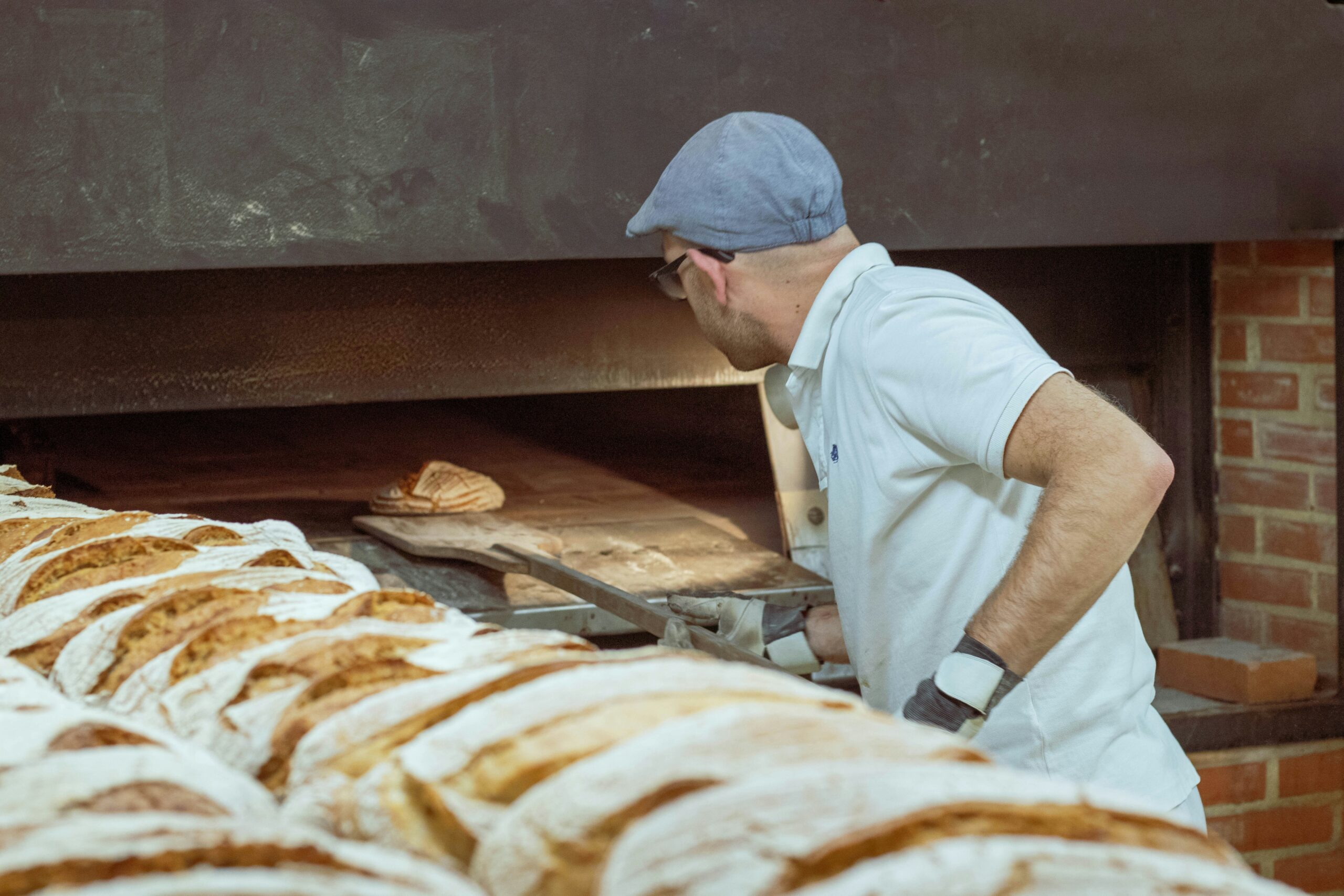
Whether you’re living the dream of opening your own restaurant or reworking your existing concept, a restaurant business plan template takes a ton of stress out of writing a business plan.
With prompts for every section you’ll need, we’ve created our free restaurant business plan template to be your operational foundation (you’re welcome!). Something you can download, customize, and come back to whenever you make business decisions for your restaurant.
But first, let’s go through all the ways a written business plan helps shape your restaurant, and why it boosts your business’s chance of success.
What is a restaurant business plan?
A restaurant business plan is a written document that lays out an overview of a restaurant, its objectives, and its plans for achieving its goals.
It’s needed across all kinds and sizes of restaurants, and can be a handful of pages long or much more detailed. A well-written restaurant business plan not only helps you organize your ideas, it’s also a key part of getting investor funding .
Starting a restaurant? Here’s why you need a business plan.
Creatively, opening a new restaurant can be incredibly exciting. But it’s also super complicated. From licenses, to equipment, to building a team, each phase needs a lot of attention to detail.
Before you jump in, it’s important to shape your plan of attack, organizing your business ideas into a clear, concise narrative that an outsider could easily understand. A business plan is an essential part of this—and here’s why.
Your business plan helps you:
Set short and long-term goals.
A restaurant business plan not only shows how your business will operate in its early stages, it also shows what steps it’ll need to follow as time goes by. Setting both your short and long-term goals at the outset makes you more likely to achieve them.
Understand your resource needs.
Going through the exercise of writing a restaurant business plan is as important as having the finished document in front of you. As you organize your thoughts, your resource needs—from the amount of capital you need to raise all the way down to the equipment you need to find—will take shape.
Reduce potential risks.
Sadly, some 60% of restaurants fail within the first year of opening. One of the main reasons? A failure to plan. Your business plan will help you plan for most challenges at your restaurant before they come up, keeping you on the right side of that number.
Develop a marketing strategy.
As you do your market analysis and figure out who your customers are likely to be, the ways you’ll promote your business will get clearer. The more specific you are with your market research, the easier and more effective your marketing efforts will be.
Build your team.
Your business plan helps you see who you’ll need on your team and which roles you’ll need to fill first . For investors, it’s a document showcasing everyone’s collective experience, personalizing your restaurant in their eyes and packing a professional punch.
Share your vision.
Whether you’re using your business plan to secure startup funding or need additional capital after you’ve already opened, your restaurant business plan shows an investor or lender exactly why they should get behind you.
The 9 elements of a strong restaurant business plan.
Your restaurant business plan will be unique to your vision. But all good business plans hit standard points, and whoever reads yours will expect them. As you develop and finalize your ideas, here are nine key elements you should include.
1. Executive summary
A strong restaurant business plan begins with a strong executive summary. This is a sharp, concise overview of your restaurant and your opportunity to grab people’s attention.
Here’s where you communicate, in a nutshell, what kind of restaurant you want to run. Which demographic will you be targeting? Why is your business something the community wants or needs? Especially if you’re asking for financing, include a snapshot of your financial information and growth plan as well.
Your executive summary should briefly lay out:
- Your mission statement. Why are you starting this restaurant now, in this location?
- Your idea. What’s the concept of this restaurant?
- Your plan of execution. What are your key steps to making this concept work?
- Your potential costs. What are your expected expenses?
- Your anticipated ROI. How much do you expect your restaurant to make?
Many investors will make a split-second decision off of the executive summary alone—it might be all they’re going to read, so make every word count.
2. Company description
Now it’s time to let your creativity out and give your restaurant concept life. Give a more detailed description of your concept that lets your passion for what you’re creating come through.
Flesh out all the other details of your proposed restaurant, including your restaurant’s:
- Style of cuisine and any unique selling points or differentiators that will make customers choose you
- Service style
- Restaurant name (or at least ideas)
- Size, seating style, and capacity
- Location ideas or the location you’ve scouted or secured
- Ambiance ideas including décor, lighting, and music
- Operating hours
- Other service offerings like whether you’ll offer delivery or takeout, delivery guarantees, catering, and any retail products you plan to sell
- Legal structure (e.g. sole proprietorship, LLC)
- Existing management and their roles, including yours
- Experts or advisors you’ve brought on board
3. Market analysis
Present the research you’ve done on your target market. Make a couple of buyer personas to represent your future customers, explaining:
- Where your target customers live
- Their income levels
- Their dining-out and/or ordering-in pain points (e.g. lack of late opening hours, lack of family friendliness)
- How often they dine out or order in
Go through which other restaurants already have a customer base in your area, then explain why people will choose your restaurant over others.
4. Sample menu
Even at the business plan stage, menu engineering is crucial. The specific menu items you’re likely to serve—the biggest thing that will set you apart—should shine through with descriptions that are short, clear, and evocative. If you have an executive chef already, this is a great area for them to add input.
Use language that will get people excited about trying your offerings. Hire a designer or use an online program to create your own mockup using the same colors, fonts, and design elements as the rest of your branding.
5. Business structure
Dive deeper into your business structure (sole proprietorship, partnership, LLC, etc.) and organizational management. Show what your different employee positions will be (co-founders, managers, servers) to give a sense of your team’s makeup. An organizational chart can be helpful here.
Investors won’t expect you to have your entire team on board at this stage, but you should have at least a couple of people firmed up. For the roles that are already filled, including your own, summarize your collective experience and achievements. Bullet points work well, or some people choose to go into more detail with full resumes for the executive team or critical team members.
6. Restaurant design and location
Long before you sign a lease, make sure that your new offering will outshine existing ones nearby. In this section of your business plan, explain why your chosen location, or the ones you’re narrowing down, are going to be an effective space for your target market.
Consider things like:
- Neighborhood demographics
- Foot traffic
- Labor costs
- Accessibility
Hand in hand with location, your restaurant’s interior design—both in its floor plan and its ambiance—is also crucial to your business’s viability. Come up with a captivating restaurant design that communicates your theme and matches your cuisine, creating a memorable customer experience. Decide how many tables you’ll be serving, and plan out any outdoor seating.
Touch on things like:
- Team uniforms
- Flatware and glassware
7. Marketing strategy
How do you plan to market your restaurant? Your plan for grabbing customers’ attention is vital to getting diners through the door, especially at the beginning before word-of-mouth advertising has taken off.
What kind of offers will you provide? Will you have promotional events, direct mail, or a social media strategy ? Go through your planned marketing campaigns and explain how each of them will help secure your target market.
| Overwhelmed by the thought of marketing your restaurant? Check out our top 9 . |
8. Takeout and delivery options
If you’ve decided to have takeout and delivery at your restaurant—pretty important for most target markets—decide whether you’ll use your own drivers or a professional fleet like Uber Eats or DoorDash.
Show how you’ll provide the smooth digital experience your customers will expect. Decide if and how your website will come into play, bearing in mind that in 2023, 40% of consumers preferred to order directly from the restaurant website .
9. Financial projections
Your restaurant’s projected budget need to be solid, especially if you’re using your business plan to get startup funds. Without this, investors have no way of knowing if your business is a good investment or when it will become profitable.
Hire an experienced accountant with expertise in running restaurants and write down your market research, your planned costs , and your projected income. Show how investor funds will be used and whether you’ll be putting up collateral to get a loan. Give a sales forecast, usually for the first five years, and make sure to give a break-even analysis.
Get started with our free restaurant business plan template.
As the team behind Homebase , we know how much there is to consider when you’re starting a new restaurant. We’re proud to be an all-in-one partner for thousands of restaurants large and small—helping make everything from staffing, to scheduling, to team communication easier for business owners.
And we know that your restaurant business plan is a high-stakes document. That’s why we created our free restaurant business plan template to make sure nothing gets overlooked.
Check out our free, downloadable template to get your ideas into shape, get started on your restaurant journey—and get investors excited to jump on board with you.
Download your restaurant business plan template for free: Restaurant business plan + free template (2024)
Stop chasing down phone numbers with our built-in team communication tool. Message teammates, share updates, and swap shifts — all from the Homebase app.
Restaurant business plan template FAQs
What is the basic planning document for a successful restaurant.
The basic planning document for successful restaurants is a restaurant business plan. A restaurant business plan lays out a restaurant’s long and short-term goals and its plans for achieving those goals. Restaurant planners use it both to finetune their ideas and to secure investor funding.
How to write a restaurant business plan.
When writing a restaurant business plan, include an executive summary, a detailed restaurant description, market analysis research, a sample menu, a breakdown of your business structure, the design and location of your restaurant, your planned takeout and delivery options, your marketing strategy, and your financial projections.
What makes a business plan template for restaurants different from a standard business plan?
A restaurant business plan template differs from a standard business plan by including things like menu engineering, interior design, kitchen operations, front-of-house management, takeout and delivery offerings, and location analysis, which are unique to the food service industry.
Remember: This is not legal advice. If you have questions about your particular situation, please consult a lawyer, CPA, or other appropriate professional advisor or agency.
Related posts
June 26, 2024
How to Start a Construction Business in 8 Easy Steps
Being able to build something from the ground up is an incredible skill: a skill you can monetize into your…
Top 4 Strategies to Grow Your Construction Business
For those in the construction business, laying the foundation for a house can be a piece of cake. But what…
How to Start a Retail Business: A Beginner’s Guide
So, you want to start a retail business. What now? There’s the idea, the products, the space, taxes, the employees,…
How to Start a Cleaning Business in 6 Steps
So you want to start a cleaning business. You want to work for yourself, you love a good Mr. Clean…
How to Start a Coffee Business in 10 Steps
Does the thought of running your own business make you jittery with excitement? How about going to work every day…
How to Start a Catering Business in 10 Steps
There are a lot of reasons to take a love of cooking down the path of entrepreneurship with a catering…
Subscribe to our newsletter
Looking for ways to stay up to date on employment laws and small business news?
Homebase makes managing hourly work easier for over 100,000 local businesses. With free employee scheduling , time tracking , and team communication , managers and employees can spend less time on paperwork and more time on growing their business.
- Hiring & onboarding
- Team communication
- Employee happiness
- HR & compliance
- Integrations
- Food & beverage
- Beauty & wellness
- Medical & veterinary
- Home & repair
- Hospitality & leisure
- Education & caregiving
- Contact sales
- Become a Partner
- Careers – We’re hiring!
- #realtalk Blog
| --> |
organization and expansion
Organization and land use, city site .
city layout and land use
- SMP WEDDINGS
- SMP’S VENUE BLOG
- LITTLE BLACK BOOK BLOG
- LBB INDUSTRY BLOG
- DESTINATION
- NEW ENGLAND
- THE NORTHWEST
- THE MIDWEST
- THE SOUTHWEST
- THE SOUTHEAST
- THE MID-ATLANTIC
- THE TRI-STATE AREA
Russia Weddings
- Real Weddings
- Bridal Week
- Engagements & Proposals
- Seasonal Wedding Trends
- Bridal Beauty
- Wedding Fashion Trends
- Vendor Guide
- DIY Projects
- Registry Guide
- Engagements & Proposals
- by Melissa Hammam
- comments ( )
Hands up if you’re ready to be dazzled! From a ceremony structure designed to float on water to a jaw-dropping reception room with flowers blooming from every service, we’re swooning over every bit of this wedding. If you can believe it, that’s just the beginning. Julia Kaptelova artfully shot every detail, like the ballet performance guests were treated to and snow falling from the ceiling for the first dance! Prepare to be amazed and take a visit to the full gallery .

From About You Decor … Our design is a symbol of dawn and a distant endless horizon. Ahead is a long, happy life without any borders. An international couple, Pavel and Cherry, met in London and have been walking together for many years.

From the Bride, Cherry… My husband and I we decided to have our summer wedding in Moscow because the city is where his roots are. As we knew we were going to have the other wedding ceremony in China, we wanted our Moscow one to be very personal and intimate. We’ve known each other since we were fourteen, together with many of our friends whom we’ve also known for a decade.

I didn’t want to walk down the aisle twice so the plausibility of my request quickly came into discussion. The open pontoon stage was constructed in order to facilitate the bridal entrance on water, although there were concerns about safety as the last thing we wanted was probably a drowned bride before she could get on stage, picture that! I have to say on that day it wasn’t easy to get on the pontoon stage from the boat, in my long gown and high heels. Luckily my bridesmaids still noticed even though they stood the furthest from me on the stage, and helped me out without prior rehearsal. My girls could just tell whenever I needed a hand or maybe they were just so used to my clumsiness. Who knows 😂
We all love our photographer Julia! She’s so talented and her style is so unique. Our beloved host Alex is exceptional who made everyone laugh and cry. It was truly a blessing to have so many kind and beautiful souls on our big day. Thank you all!

[iframe https://player.vimeo.com/video/384992271 600 338]
| Share this gorgeous gallery on |
Photography: Julia Kaptelova Photography | Wedding Planner: Caramel | Cake: Any Cake | Invitations: Inviteria | Rings: Harry Winston | Band: Menhouzen | Grooms attire: Ermenegildo Zegna | Wedding Venue: Elizaveta Panichkina | Bridesmaids’ dresses: Marchesa | Bridesmaids’ dresses: Alice McCall | Bride’s gown : Jaton Couture | Bride’s shoes: Manolo Blahnik | Decor : About you decor | Earrings: Damiani | Muah: Khvanaco Studio | Video: Artem Korchagin
More Princess-Worthy Ballgowns

I’m still not convinced this Moscow wedding, captured to perfection by Sonya Khegay , isn’t actually an inspiration session—it’s just that breathtaking. From the beautiful Bride’s gorgeous lace wedding dress and flawless hair and makeup to the pretty pastel color palette and stunning ceremony and reception spaces, this wedding is almost too good to be true. Do yourself a favor and see it all in The Vault now!

From Sonya Khegay … It was the last day of April and still very cold in the morning. The weather forecast wasn’t pleasing and no one expected that the sun would come out, but miracles happen and light rain gave way to the warm rays.
I love how all the details went together, you could feel the harmony in everything throughout the entire wedding day from the morning until the fireworks.
A gentle look of the bride, elegant but so airy and unique decor, the fresh and light atmosphere of early spring and, of course, true happiness in the eyes. My heart becomes so warm from these memories, it is always a pleasure to see the birth of a new family of two loving hearts.
Photography: Sonya Khegay | Event Design: Latte Decor | Event Planning: Ajur Wedding | Floral Design: Blush Petals | Wedding Dress: La Sposa | Stationery: Special Invite | Bride's Shoes: Gianvito Rossi | Hair + Makeup: Natalie Yastrebova | Venue: Rodniki Hotel
- by Elizabeth Greene
You really can’t go wrong with simple: a beautiful Bride , perfectly pretty petals , loved ones all around. But add in an amazing firework show to cap off the night and simple just became downright extraordinary. Captured by Lena Elisseva , with assistance by Katya Butenko , this rustic Russian celebration is simply fantastic. See it all in the Vault right here !

From Lena Eliseeva Photo … This cozy and warm summer wedding of gorgeous Natalia and Anton was in the middle of June. The young couple decided to organize their wedding themselves, and the day was very personal and touching. I am absolutely in love with rustic outdoor weddings, and this one is my favourite because of the free and easy atmosphere.
All the decor excluding the bride’s bouquet was made by a team of ten friends of the bride and groom. And it was charming – a light and beautiful arch, eco-style polygraphy and succulents, candy-bar with caramel apples and berries – sweet joys of summer.
At the end of ceremony the guests tossed up white handkerchiefs embroidered by Natalia’s own hands.
The most touching moment was the happy eyes of the groom’s grandmother, the most estimable person on the wedding. And the fireworks were a bright end to that beautiful day.

Photography: LENA ELISEEVA PHOTO | Floral Design: Katerina Kazakova | Hair And Makeup: Svetlana Fischeva | Photography - Assistance: Katya Butenko
These photos from Lena Kozhina are so stunningly beautiful – as in you can’t help but stop and stare – it’s hard to believe it’s real life. But these pics are proof of this gorgeous Bride and her handsome Groom’s celebration at Moscow’s Fox Lodge , surrounded by vibrant colors and breathtaking blooms . Oh, and the idea of prepping for your Big Day outside in the sun ? Brilliant. See more bright ideas right here !

From Lena Kozhina … When we met with the couple for the first time, we immediately paid attention to Dima’s behavior towards Julia. There was a feeling of tenderness and awe, and we immediately wanted to recreate this atmosphere of love, care and warmth on their Big Day.
Later, when we had chosen a green meadow and an uncovered pavilion overlooking a lake as the project site, it only highlighted a light summer mood with colorful florals and a great number of natural woods. The name of the site is Fox Lodge and peach-orange color, as one of the Bride’s favorites, set the tone for the whole design – from the invitations, in which we used images of fox cubs to elements of serving guest tables and other decorative elements with the corresponding bright accents.
Photography: Lena Kozhina | Event Planning: Ajur Wedding | Wedding Dress: Rosa Clara | Shoes: Marc Jacobs | Catering: Fox Lodge | Makeup Artist: Elena Otrembskaya | Wedding Venue: Fox Lodge | Cake and Desserts: Yumbaker | Decor: Latte Decor
From Our Partners


IMAGES
VIDEO
COMMENTS
Use this pizzeria business plan as your template to create the best pizza shop in town that's also a thriving, profitable business! This pizza business plan includes market analysis, strategy, more. Download this Pizza Business Plan free for easy editing in Microsoft Word, Google Docs or Apple Pages:. Also Read: Starting a Small Business - A Complete Guide with Templates and Tools
Writing a pizza shop business plan is a crucial step toward the success of your business. Here are the key steps to consider when writing a business plan: 1. Executive Summary. An executive summary is the first section planned to offer an overview of the entire business plan. However, it is written after the entire business plan is ready and ...
Introduce key elements of your business plan, such as details about the pizzeria's core mission and values, a coherent vision for the brand, and an overview of the budget. Keep your audience in mind - get investors excited about your business plan to keep them reading. Consider describing the consumer your business will cater to and what ...
Explore a real-world pizzeria business plan example and download a free template with this information to start writing your own business plan. ... Coffee Shop Agricultural Farm Hair & Beauty Salon Bakery ... (SIC) code 5812.0600, Pizza Restaurants. The ratios show a plan for balanced, healthy growth. Our return on sales and return on assets ...
2. Register your pizza shop. Once you've crafted the business plan for your pizza shop and chosen a business entity, the next step in starting your pizza shop is registering your business. To do ...
The Plan. Our pizzeria business plan is structured to cover all essential aspects needed for a comprehensive strategy. It outlines the pizzeria's operations, marketing strategy, market environment, competitors, management team, and financial forecasts. Executive Summary: Offers an overview of the pizzeria's business concept, market analysis ...
Pizza Shop Business Plan. If you want to start a pizza shop business or expand your current one, you need a business plan. Over the past 20+ years, we have helped over 5,000 entrepreneurs and business owners create business plans to start and grow their pizza shops.
An organizational chart example for a pizzeria. 6. Financial Plan. The financial plan is perhaps, with the executive summary, the most important section of any business plan for a pizzeria. Indeed, a solid financial plan tells lenders that your business is viable and can repay the loan you need from them.
Buy Pizza Shop Equipment. Hire a Staff. Advertise Your Business. Host a Soft Opening. 1. Write a Pizza Shop Business Plan. A business plan acts as the roadmap for how to get your pizza shop off the ground. It outlines many details, including short- and long-term goals, financial projections, and market analysis.
Specifically, these funds will be used as follows: Restaurant design/build: $200,000. Equipment, supplies, and inventory: $50,000. Three months of overhead expenses (payroll, rent, utilities): $100,000. Marketing costs: $30,000. Working capital: $20,000. Easily complete your Pizza business plan! Download the Pizza business plan template ...
Step 3: Create a Pizzeria Business Plan Template. Utilize a ready-made template or pattern to structure your pizzeria business plan effectively. The template should include sections such as: Executive Summary for Restaurant: An overview of your pizzeria and its key highlights.
Step 4: Create a Pizza Shop Business Plan. Here are the key components of a business plan: Business overview — Detailed introduction to your pizza shop, including the business name, the type of pizza shop (dine-in, take-out, delivery), location, and the vision behind starting it.
Step 3. Develop a comprehensive business plan. Opening any business, including starting a pizza shop, requires writing a solid restaurant business plan.To build your own pizza place, conduct market research, decide who your target customers will be, and describe your pizza concept and how you will differentiate your pizza shop from competitors.
Get Free Restaurant Marketing Plan. 6. Figure out your pizzeria finances, sales forecasts and operating expenses. At this stage, it's time to revisit your restaurant business plan and look at your initial financial projections for your pizzeria so you can plan out day-to-day operating expenses.
Your operations plan has two parts. The first talks about the staff needed for daily operations at your pizza shop. The second part is about milestones. Here, list key things you want to achieve ...
Your pizza shop business plan should outline your vision, mission, and objectives and detail your target market, competitive analysis, and marketing strategies. To demonstrate the viability of your restaurant business to potential investors or lenders, include financial projections, such as revenue forecasts, startup costs, and break-even analysis.
Writing a business plan for your pizzeria also means having to carry out market research to familiarise yourself with the pizza market in the town or city in which you'd like to base your business, as well as the strengths and weaknesses of nearby competitors. The prices you set will depend on your business model (whether it's a gourmet ...
A pizza shop business plan is a document that guides how to start and manage a pizza shop business. The plan includes details on how you will make money, how you will keep track of expenses, and your business goals. A good pizza shop business plan should consist of all these elements. Pizza shops are only sometimes easy to start, but if you ...
2. Writing a Business Plan. Once you've defined your pizzeria menu, style, and brand, you can begin drafting a business plan. A business plan is a document that allows you to manage your pizza shop's objectives and strategies. A good business plan will allow you to implement strategies, stay organized, and obtain investors.
Your restaurant business plan will be unique to your vision. But all good business plans hit standard points, and whoever reads yours will expect them. As you develop and finalize your ideas, here are nine key elements you should include. 1. Executive summary. A strong restaurant business plan begins with a strong executive summary.
Pizza shop building off Boise's Interstate 184 Connector for sale amid wave of redevelopment in southwest downtown and West End neighborhood Boise business fixtures face uncertainty with ...
Molzino Tourism: Tripadvisor has reviews of Molzino Hotels, Attractions, and Restaurants making it your best Molzino resource.
Buona's menu features its original Italian beef and sausage sandwiches as well as burgers, Chicago-style dogs, salads and chicken sandwiches. Founded by "Grandpa Joe" Sapp in 1926, The ...
The Moscow oblast is the most highly developed and most populated region in Russia. There was a legend that Moscow was built upon seven hills, just like Rome, was exaggerated, and the truth is that there are a only few small hills in and around the city center. In the southwest corner of the city, there is an upland region, called the ...
Noginsk. Warm comfort with smoldering birch fires. Отличная атмосфера, нам помогли с организацией сложного мероприятия и со звуком, видео было все в порядке. 4. Sloboda Cafe. 21 reviews Closed Now. European, Russian $$ - $$$. 6.1 mi. Pavlovsky Posad.
This real wedding is pure inspiration. With each stroke of the brush, the details add to the already ideal picture: one of the most picturesque Moscow areas, the warm day in June, the tenderest and the most beautiful bridal portraits, the ceremony in the greenhouse, wallowing in flowers and sun rays….